Table Of Contents
Overview
This Standard Material is the recommended all purpose material that is physically plausible, energy conserving and aligned with 'PBR' based principles. It is the successor to the Redshift Material but offers a cleaner interface that is more comparable to the standard material shaders of other render engines.

|
| A Standard Material in the Node Editor |
Examples
Translucency
The Standard material supports translucency in the form of diffuse transmission by interpreting an object's surface as an infinitely thin shell. Translucency simulates light passing through thin objects and is a perfect effect for things like paper or leaves where an object has no actual thickness but needs the look of subsurface scattering without the performance impact.
In the example images below the addition of translucency allows sunlight to pass through the leaves and the shadows cast by other leaves block the light from passing through the leaves giving them a much more realistic look.
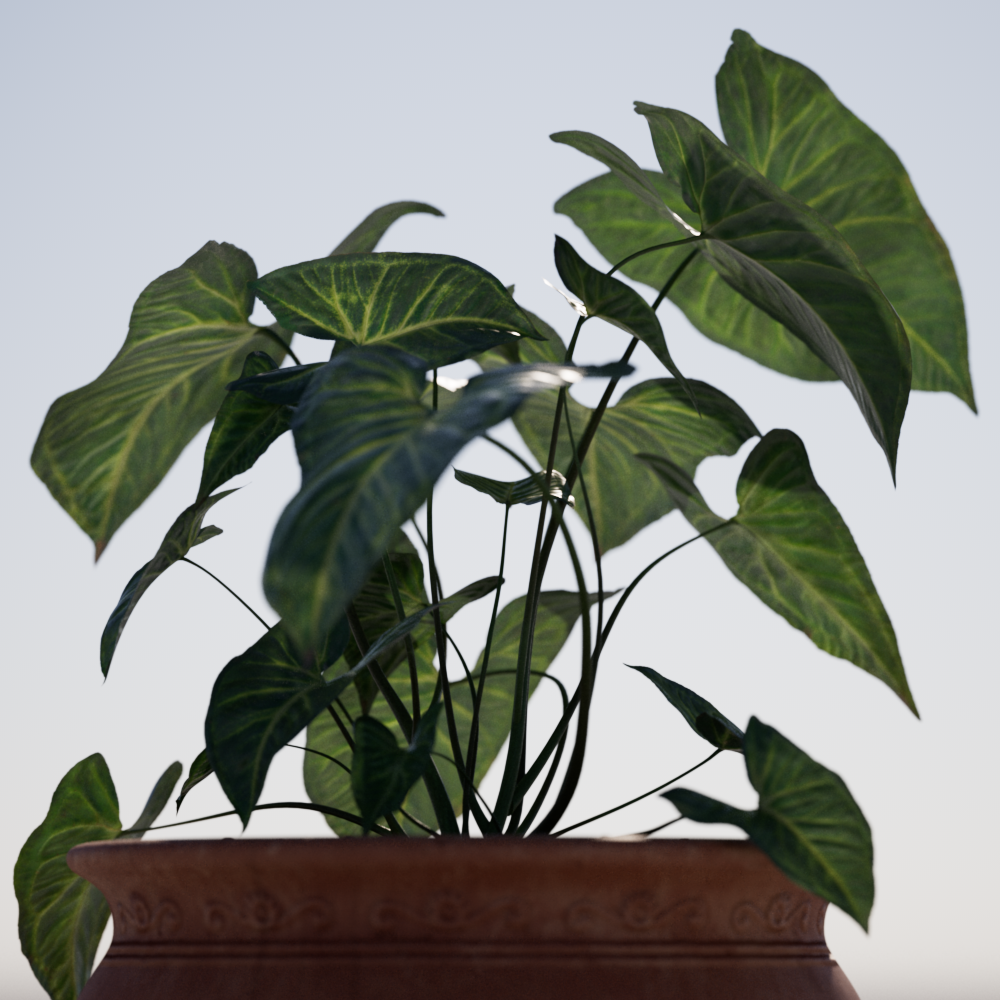
|

|
| Leaves with Translucency | Leaves without Translucency |
| Example model from PolyHaven by Rico Cilliers: Potted Plant 02 | |
The Standard Material changes the way translucency is handled compared to the legacy Redshift Material. Instead of having a separate translucency / back-lighting section the Standard material uses the subsurface component and relies on "Thin Walled" being enabled in the Geometry section - this disables multiple subsurface scattering and the other subsurface scattering parameters with the exception of subsurface color and weight as pictured below.

|
Another key difference between the Standard and legacy RS Material is the addition of translucency energy conservation. Previously the legacy Material allowed more light to be reflected back than was actually present in the scene, the Standard material fixes this which provides more realistic results but it requires a slightly different approach when dialing in the look as it is now possible for translucency to completely knock out the diffuse component which did not happen before.
When thin walled is enabled, subsurface color and weight can effectively be thought of as the translucency color and weight, but now a subsurface weight of 1 will completely disable diffuse shading. This can be seen in the example images below where the Standard material has a base color (diffuse) of red and a subsurface color (translucency) of blue.
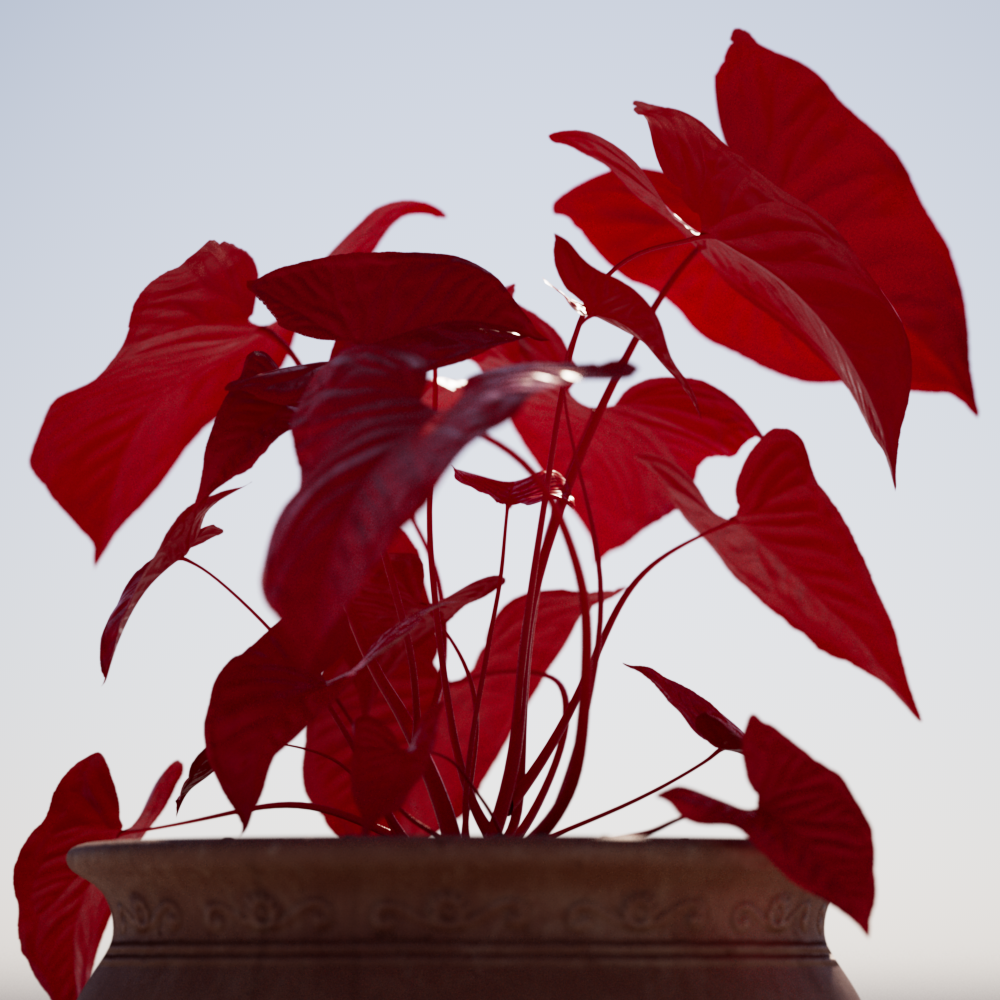
|

|

|
| Subsurface Weight: 0 Base Color: Red Subsurface Color: Blue |
0.5 | 1 |
At a Subsurface Weight of 1 the leaves might look okay from the back with light shining through them but issues become apparent when seen from the front since shadows are no longer caught on the surface due to the complete lack of a diffuse component.
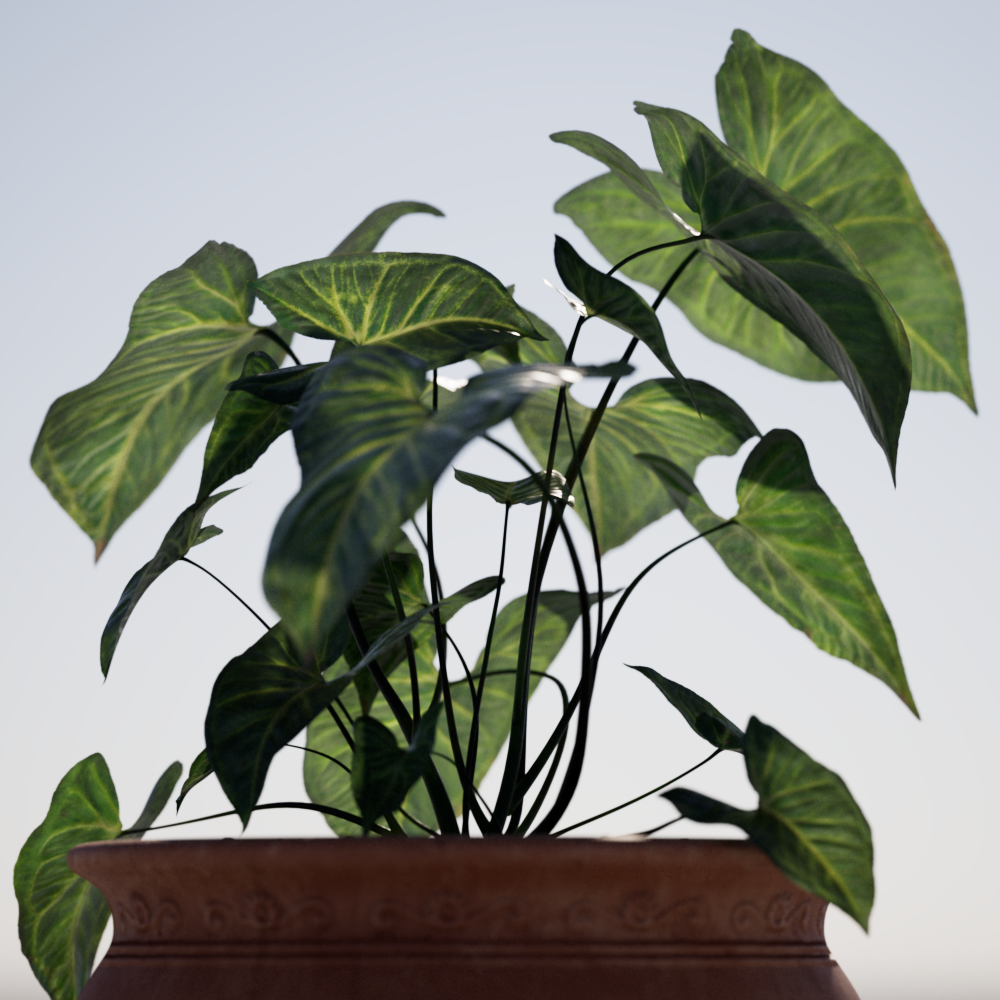
|
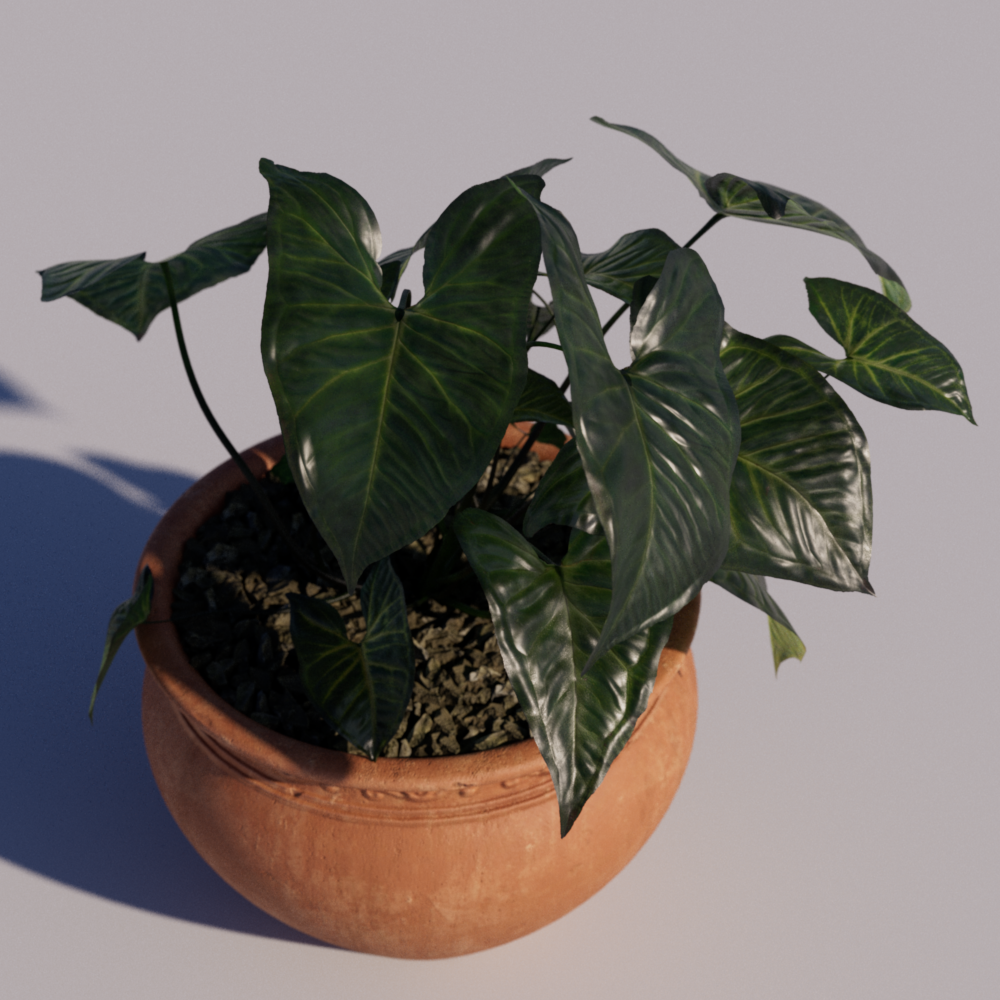
|
| Subsurface Weight: 1 |
1 |
This can be balanced out by decreasing the subsurface weight which reintroduces diffuse shading but still allows light to pass through. Of course, if the results are now too dark you can always use a color correct node to increase the brightness of a texture for the base color or subsurface color.

|

|
| Subsurface Weight: 0.5 |
0.5 |
Base Properties
The most common material settings are found in the Base Properties section which is broken up into the following subsections:
- The Base section contains the settings for the diffuse shading model and the diffuse color of the surface.
- The Reflection section contains settings for specular reflection.
- The Transmission section contains the refraction properties, including single scattering and dispersion.
- The Subsurface section contains properties related to subsurface scattering.
- The Sheen effect can be used to simulate a soft backscatter effect commonly seen on fabrics like velvet or satin.
- The Thin Film effect can be used to simulate a layer that shimmers in all the colors of the rainbow, just as it can be observed on an oil film or on soap bubbles.
- The Coat settings can be used to add an additional coating layer.
- The Emission settings can be used to brighten the surface and make it emit light.
- The Geometry section controls the overall opacity of the surface, its tint and bump mapping effects.
Base
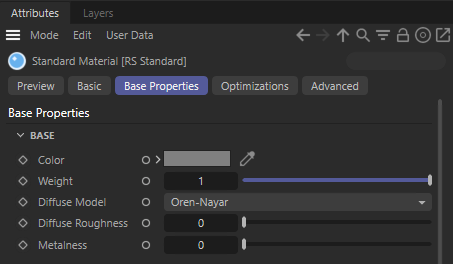
|
Here you will find the settings for the diffuse properties of the surface.
Color
This defines the color of the surface for diffuse direct lighting or indirect global illumination. Setting diffuse color to black results in no diffuse lighting.
When Metalness is used this also controls the color of the metal.
Credit to Rich Nosworthy for the Redshift shader ball and scene used in many of the example images below.
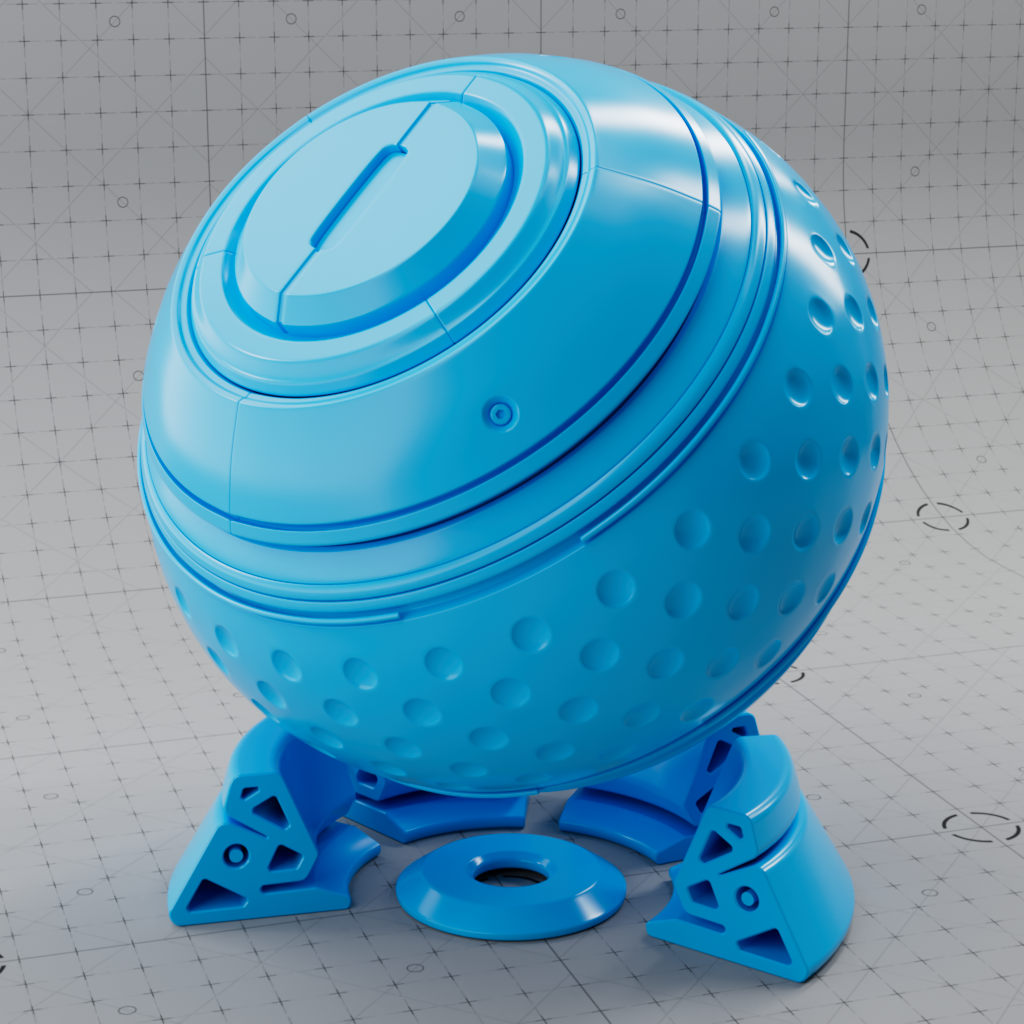
|

|

|
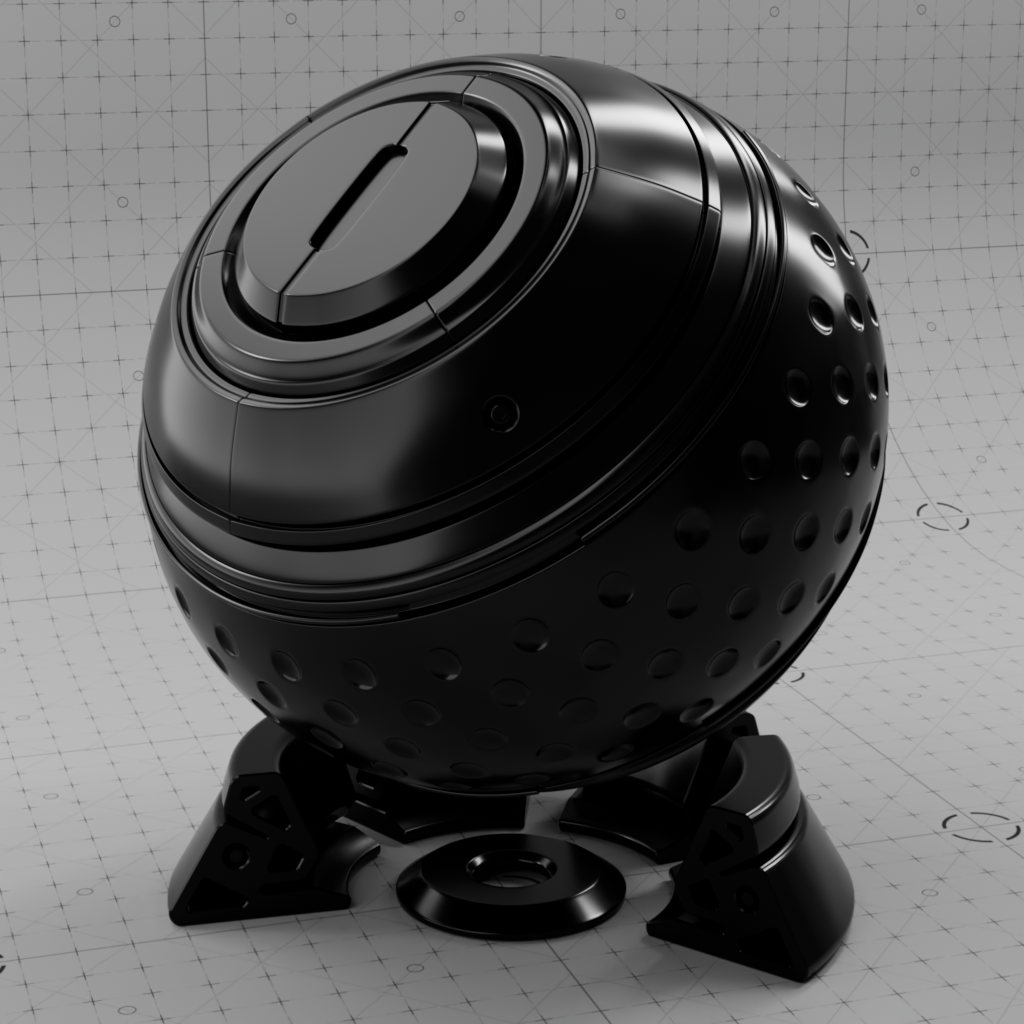
|
| Base Color: Light Blue | Yellow | Red | Black |
Weight
This scales the overall amount of diffuse lighting, with 0.0 resulting in no diffuse and 1.0 resulting in maximum diffuse.

|
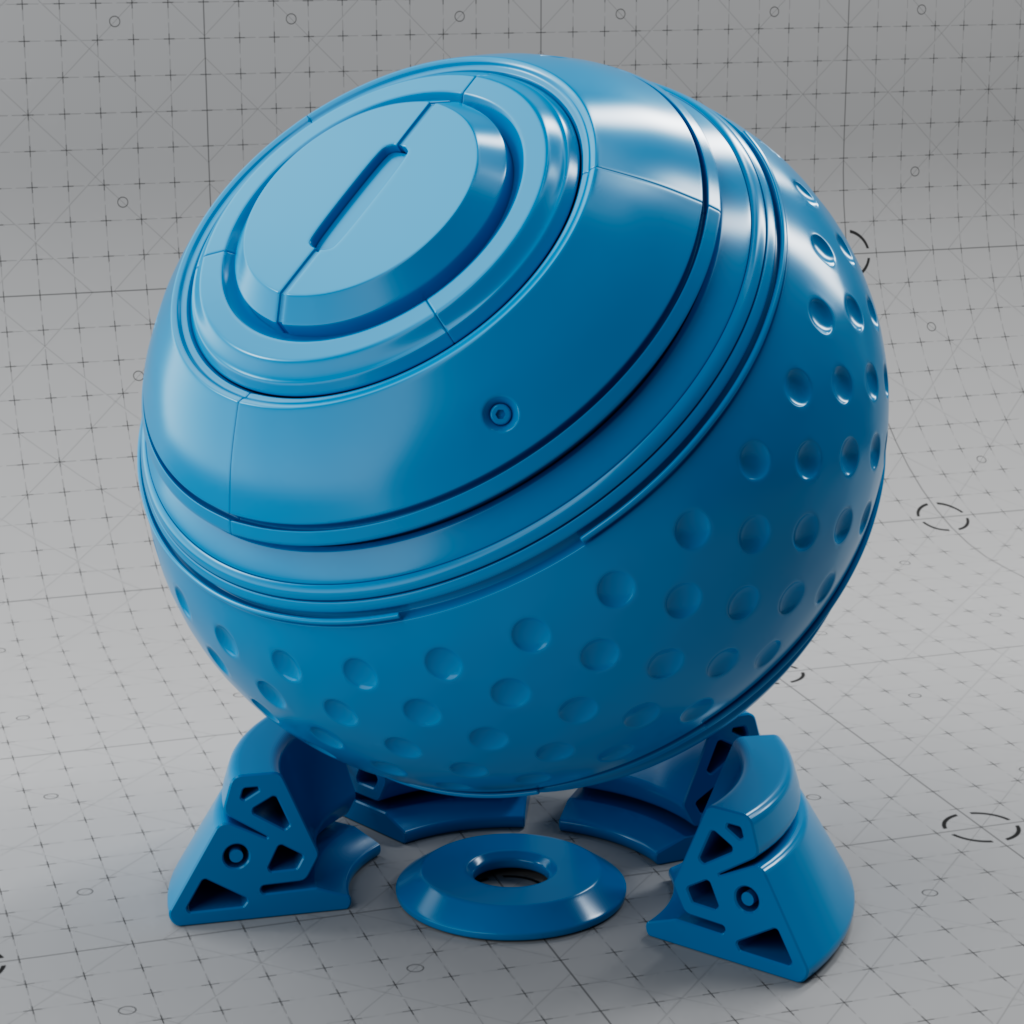
|

|
| Base Weight: 1.0 | 0.5 | 0.0 |
Diffuse Model
The Diffuse Model determines how the diffuse illumination on the surface is evaluated and thus how the brightness gradients on the surface are calculated. Two models are available:
- Oren-Nayar: This can be used to simulate the diffuse illumination of smooth and also rough surfaces. A special Diffuse Roughness value is available to blend between a smooth and a rough surface.
- d'Eon Lambertian Spheres: This is a special mode designed only for rough materials. Think here, for example, of small-pored or dusty surfaces. One characteristic of this is, among other things, an increase in color saturation with very flat incident light.
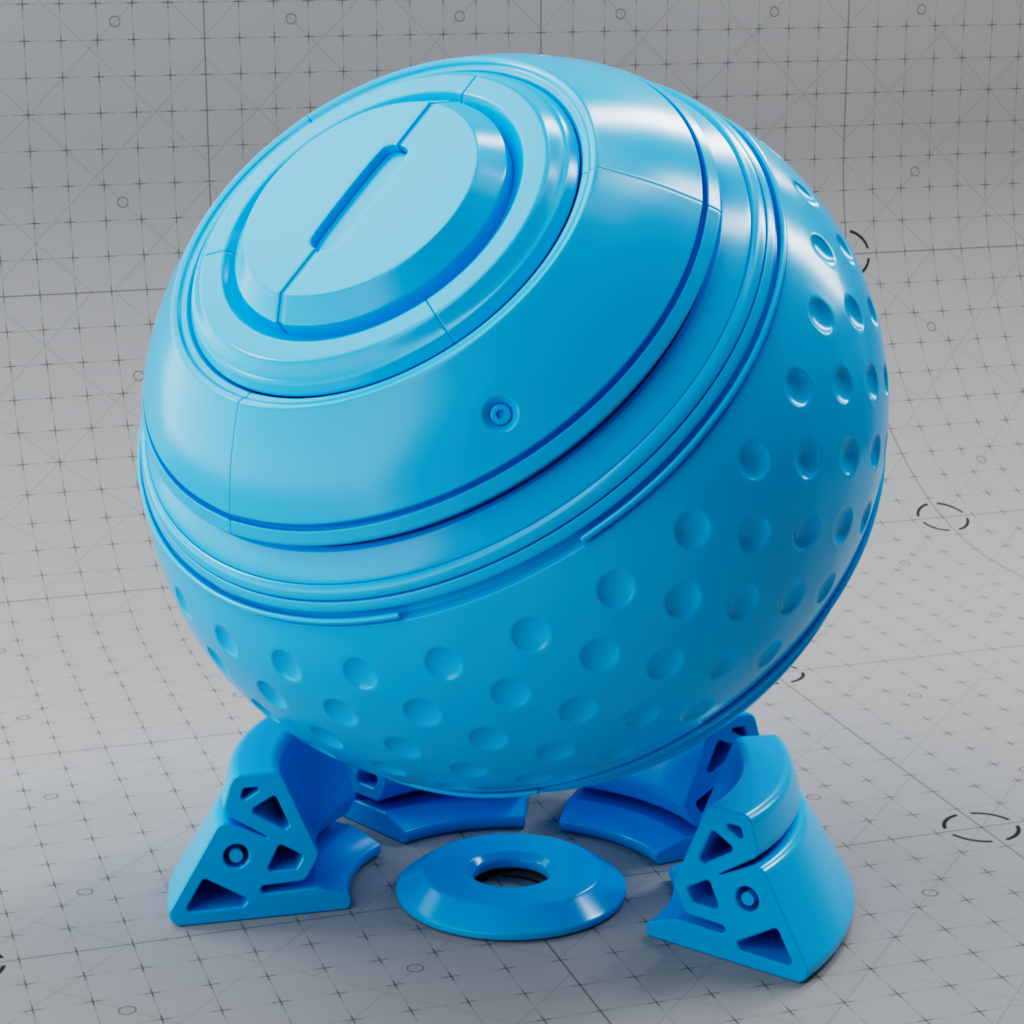
|

|
| Oren-Nayar | d'Eon Lambertian Spheres |
Diffuse Roughness
This setting is only available for the Oren-Nayar Diffuse Model. This controls the roughness of the diffuse lighting and is useful for simulating matte/dirty surfaces. A roughness of 0.0 is equivalent to a perfectly smooth surface, or traditional Lambert shading.
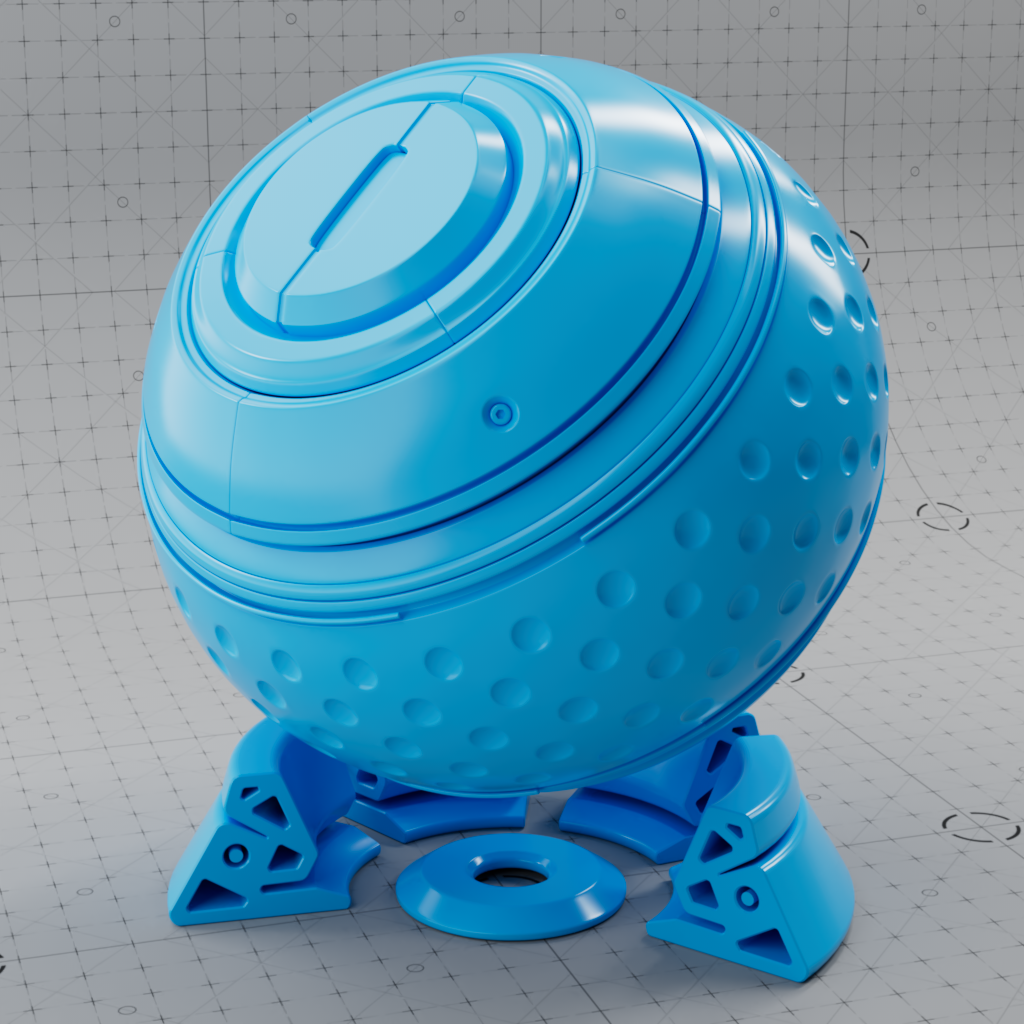
|
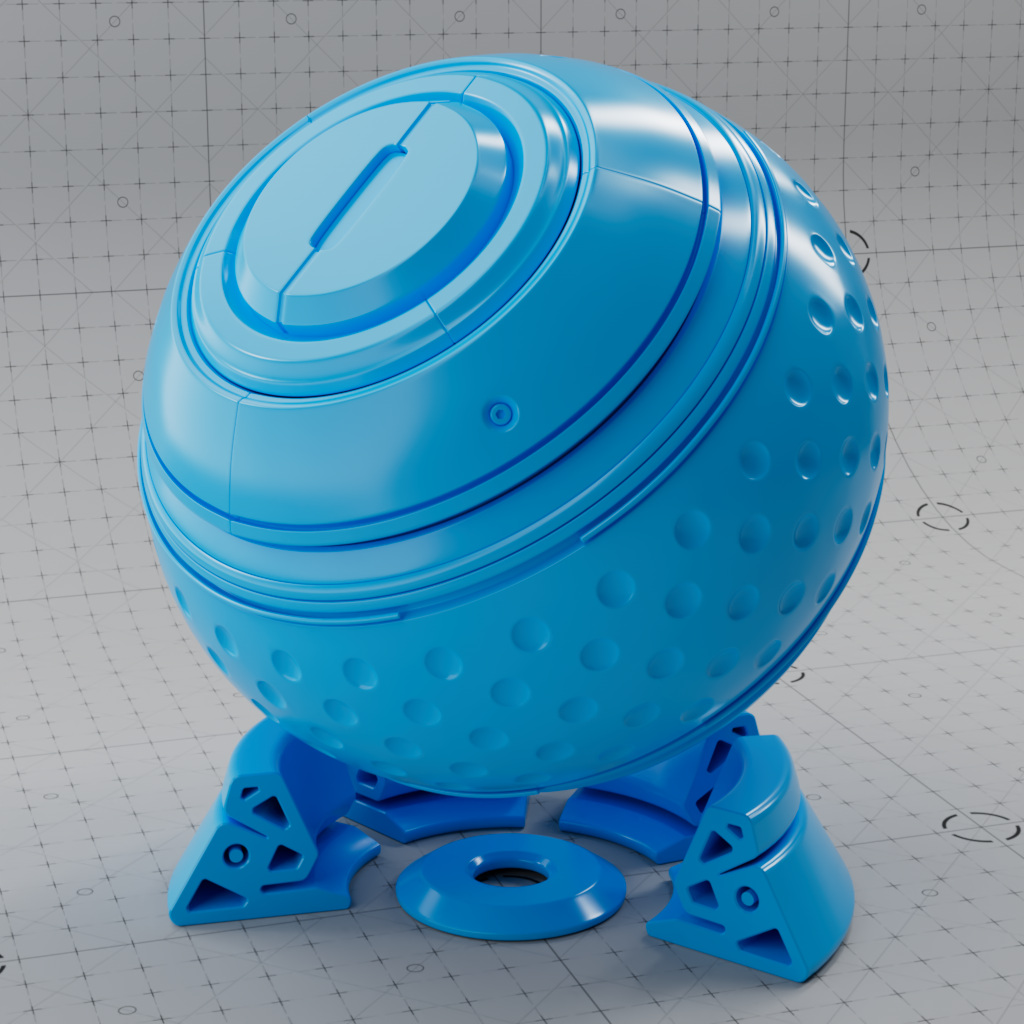
|
| Base Roughness: 0 | 1 |
Metalness
The Metalness weight. This value ranges between 0.0 and 1.0, where 0.0 is a dielectric material that uses the Reflection settings to control the reflectance and 1.0 means it is a fully reflective metal material that uses the Base Color to control the color of the metal.
Values between 0.0 and 1.0 are a blend between the two types of material.
When Metalness is used the Reflection Color is used to control the edge tint of the metal.
An IOR to Metal Tints node can be used with a Standard Material for separate IOR control for the red, green, and blue channels.
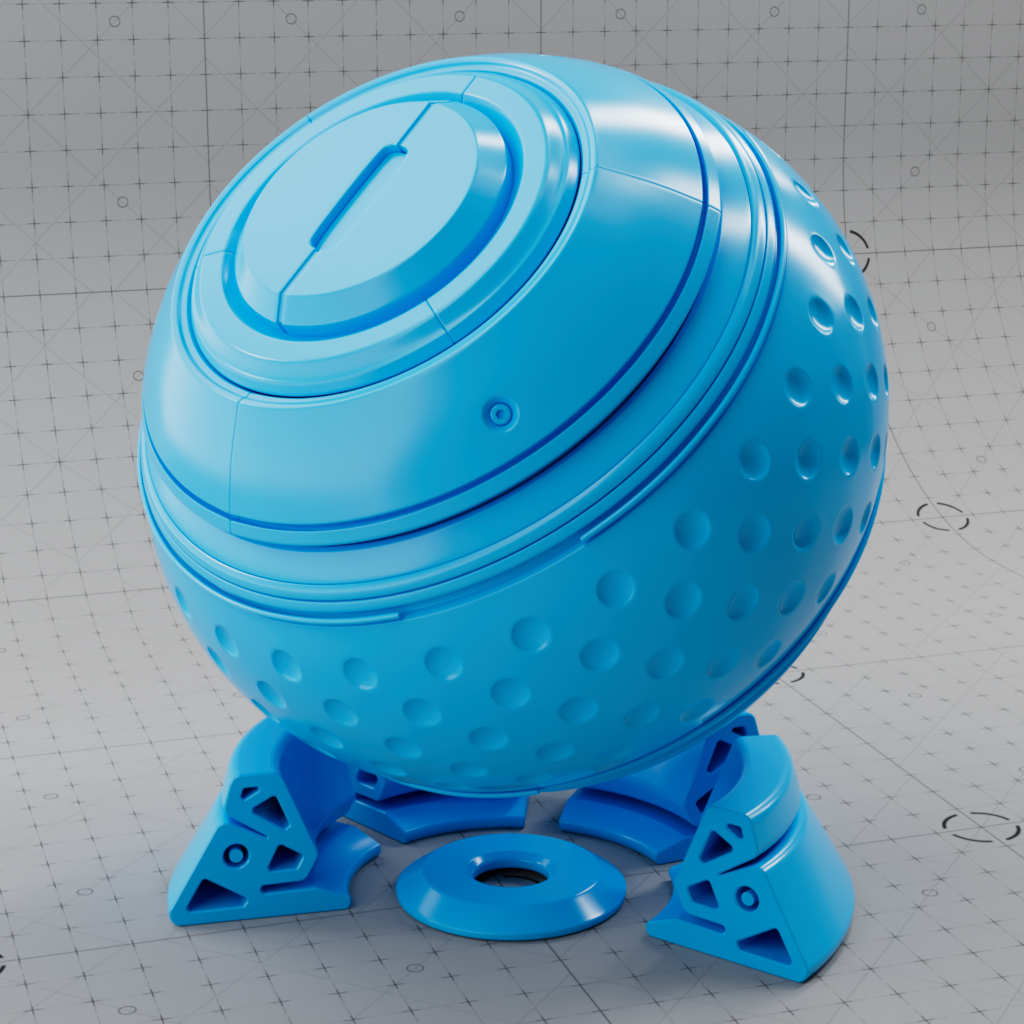
|

|
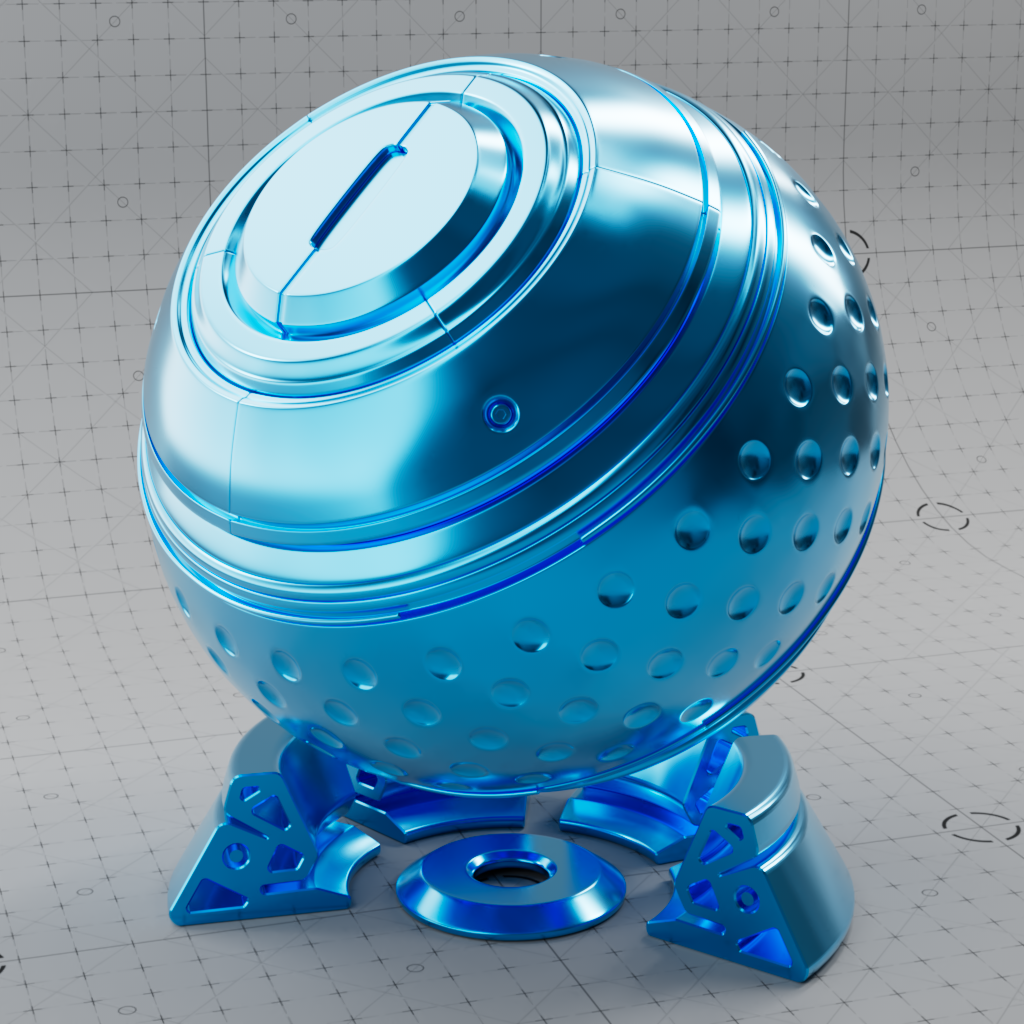
|
| Metalness: 0 | 0.5 | 1 |
Reflection
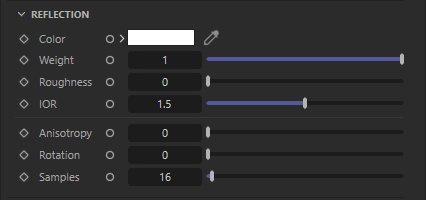
|
Most real-world materials exhibit some amount of reflection. The two most visible aspects of reflection are its blurriness (driven by Roughness) and its strength (driven by the Weight and IOR settings).
The Redshift Standard Material uses a GGX BRDF.
Color
This is the reflection color tint. In most cases it should just be white, but can be colored for metal materials. Reflections are disabled when the reflection color is black.
When using Metalness, reflection Color is used to tint the reflections seen on the edges of an object and the Base Color is used to tint the remainder of the reflections that are seen at a facing angle.

|

|

|
| Reflection Color: White (default) | Purple | Black |
Weight
This is a multiplier of the reflection tint. Reflections are disabled when this value is 0.0.

|

|

|
| Reflection Weight: 1.0 (default) | 0.25 | 0.0 |
Roughness
This is the roughness of the surface reflection. A roughness value of 0.0 means perfectly 'polished', or full glossiness. A roughness value of 1.0 means almost diffuse appearance.

|

|

|

|
| Reflection Roughness: 0.0 | 0.25 | 0.75 | 1.0 |
IOR
IOR is short for Index Of Refraction and determines how the light bounces when reflected. As this is a physical based value, you can look it up for a specific material in online lists. Most values range between 1.0 (air at room temperature) and 2.42 (diamond).
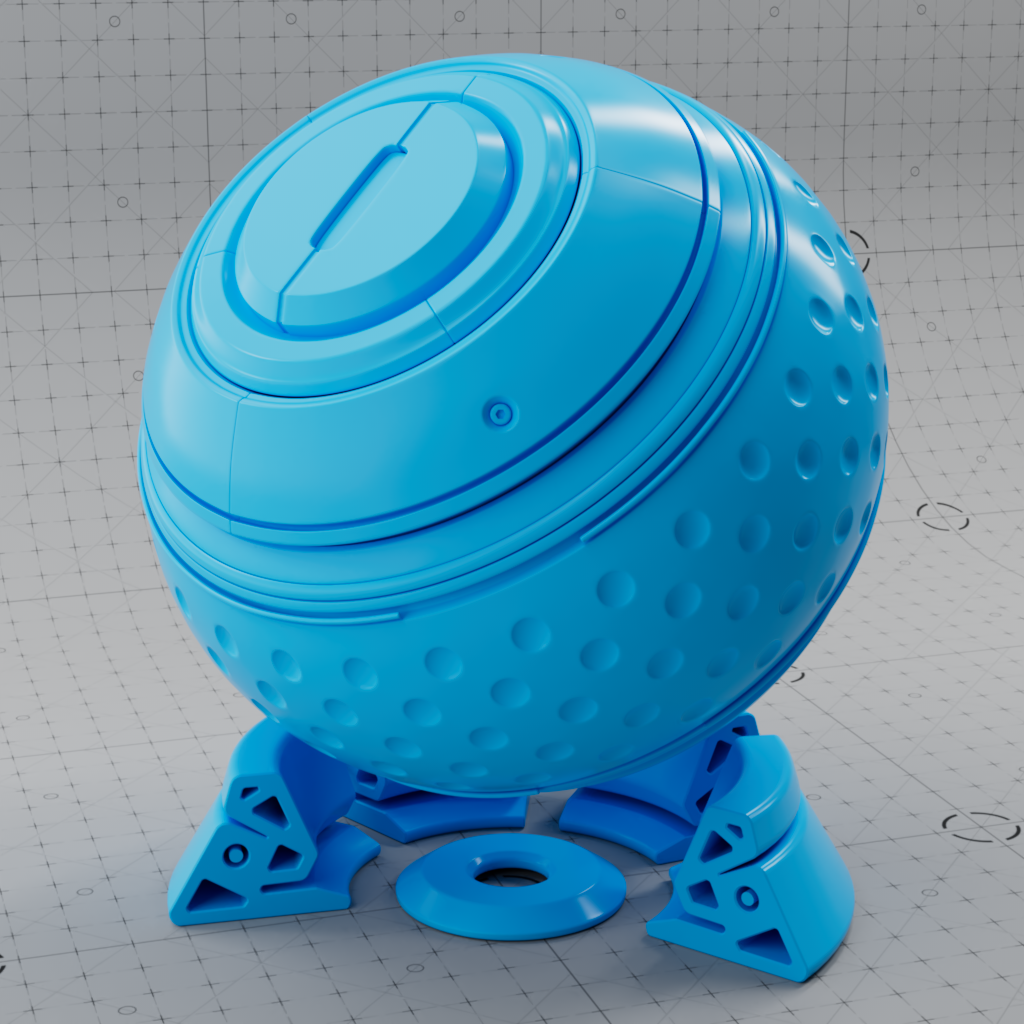
|
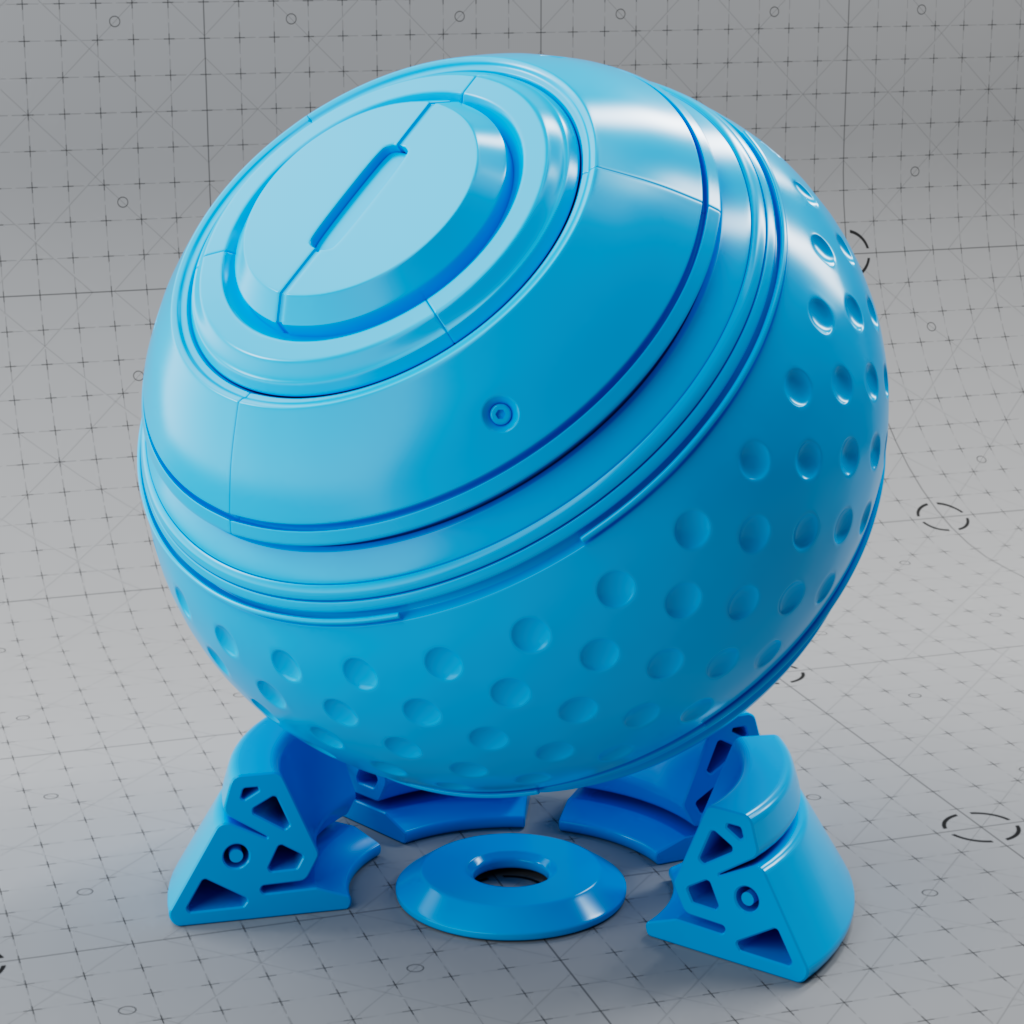
|

|
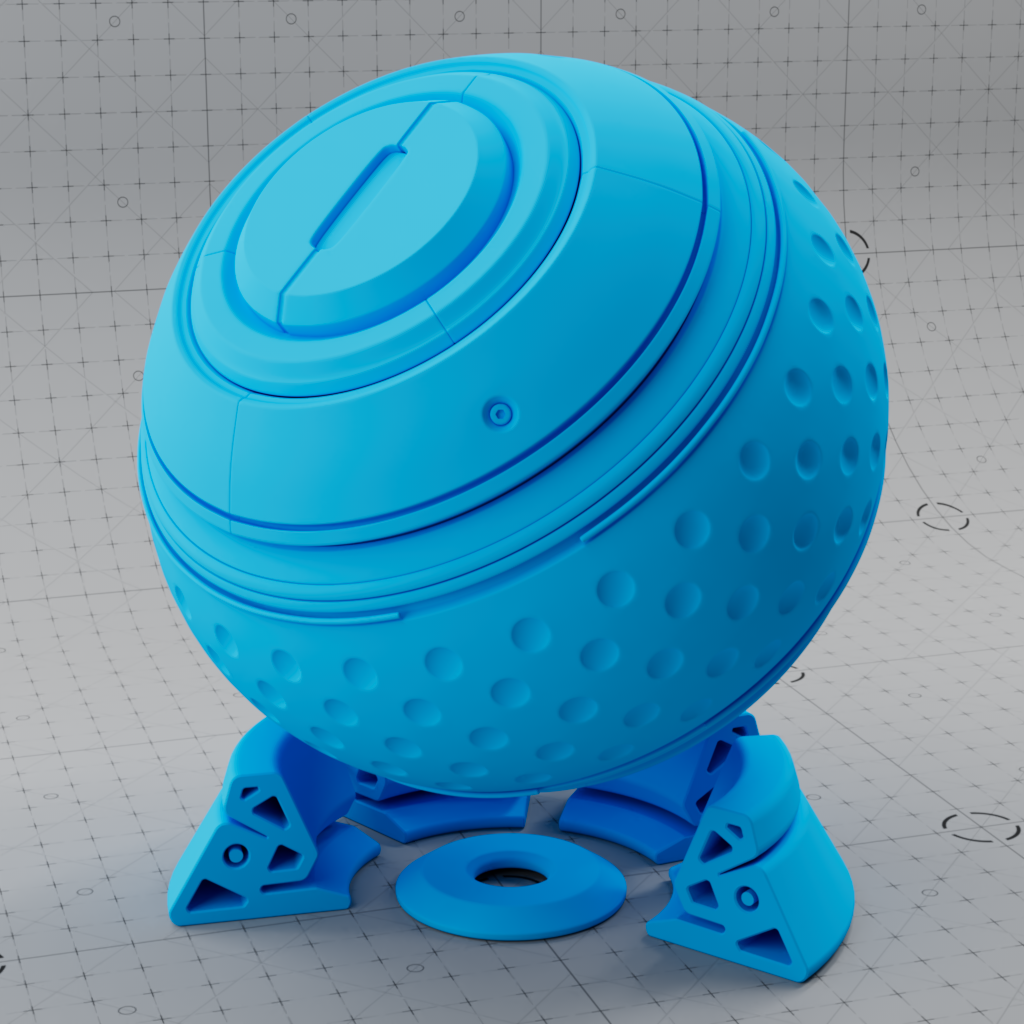
|
| Reflection IOR: 1.25 | 1.5 (default) | 3.0 | 1.0 |
Anisotropy
This allows to you stretch reflections in a particular axis. Anisotropy is used to emulate materials such as brushed metals where surface roughness is focused in a particular direction. You have to increase Reflection Roughness above 0.0 to see the effect.

|

|
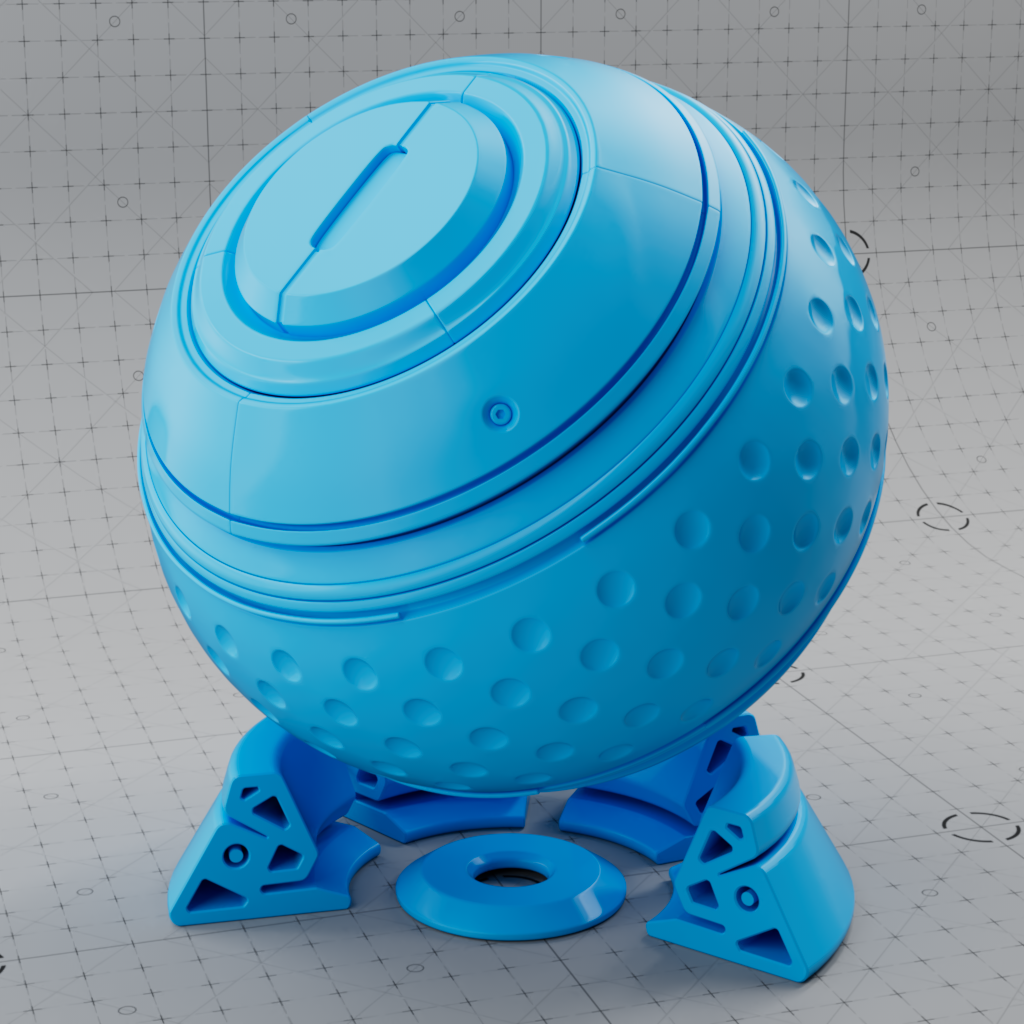
|
| Reflection Anisotropy: 0 (default) | 0.75 | 1.0 |
Rotation
This value rotates the direction of the anisotropic reflections.
The rotation value runs between 0 and 1, which maps to rotation angles from 0° to 360°.

|
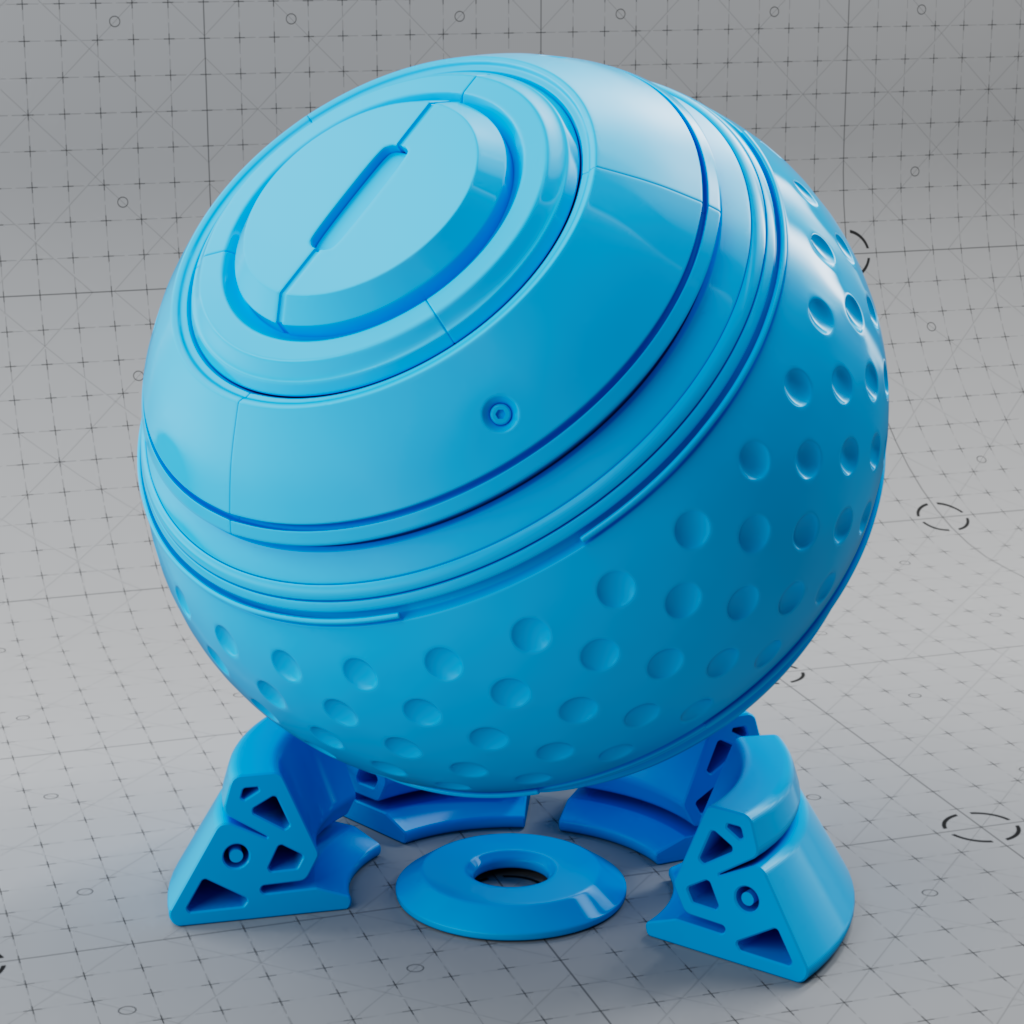
|
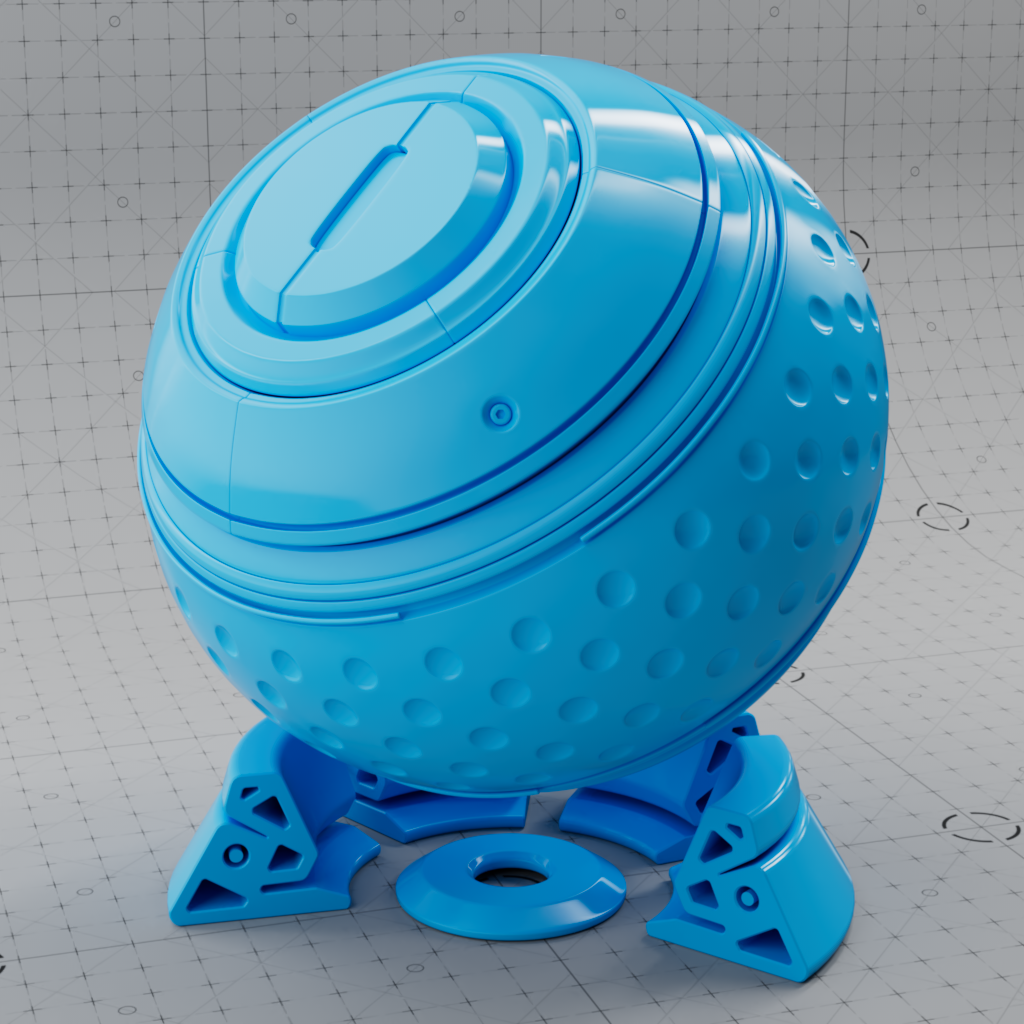
|
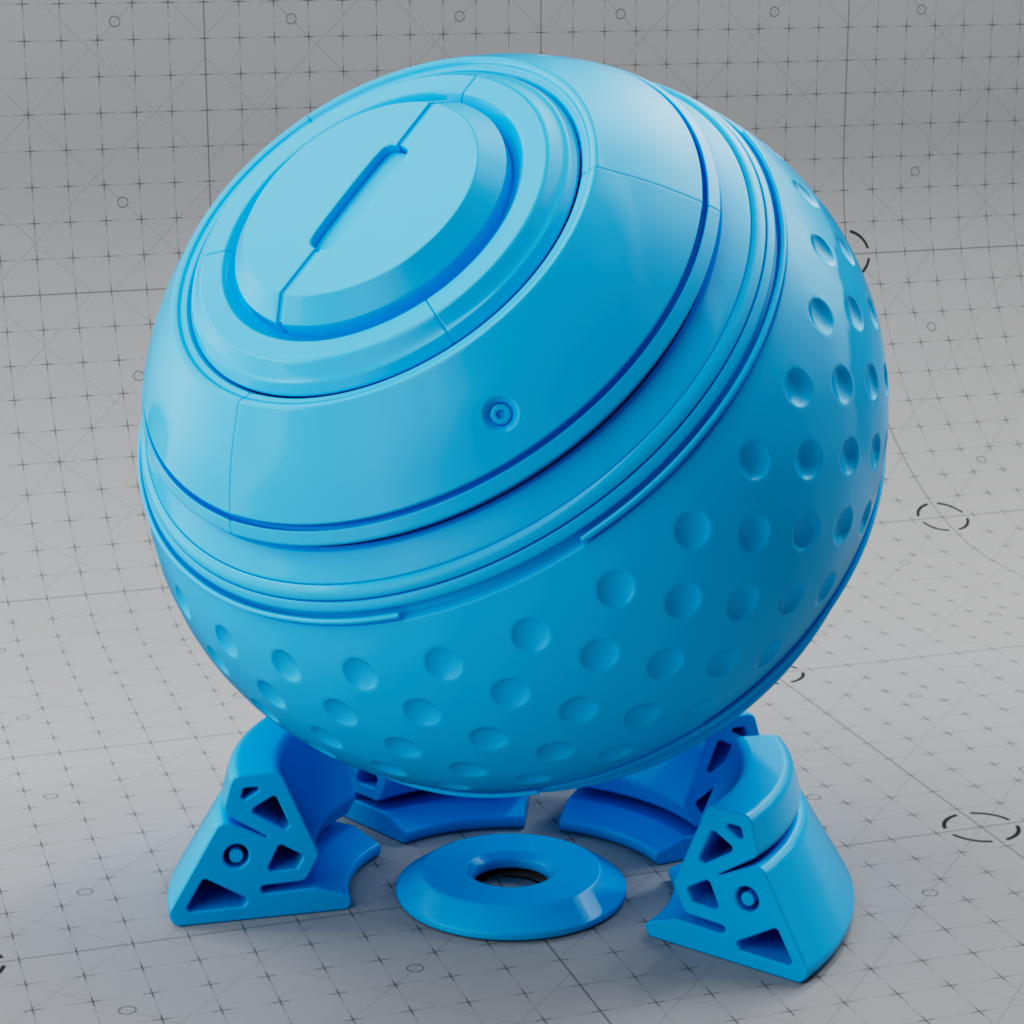
|
|
Anisotropy Rotation: 0 (default) Anisotropy: 1 |
0.125 | 0.25 | 1 |
Samples
Blurry reflections (when "Roughness" is greater than 0.0) will need multiple samples to get a clean "grain-free" result. Higher numbers will reduce any potential grain issues, but will take longer to render and vice-versa.
Transmission
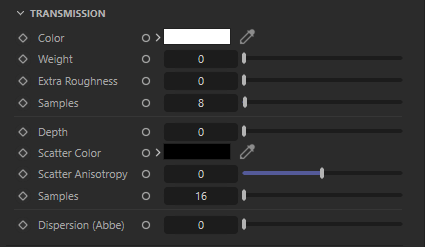
|
These settings set the refractive transparency of the material. A full refraction calculation needs a double sided geometry. To see refractive tint one a single sided geometry, you have to activate the Thin Walled option in the Geometry section.
A transmissive object's shadow can have a very large impact on the overall look and realism of an object, for information on controlling a transmissive object's shadow please see the Advanced Transmission section.
Color
This is the refraction tint. To be physically correct, when used in conjunction with Subsurface Scattering or Transmission Scatter, this should be white.

|

|
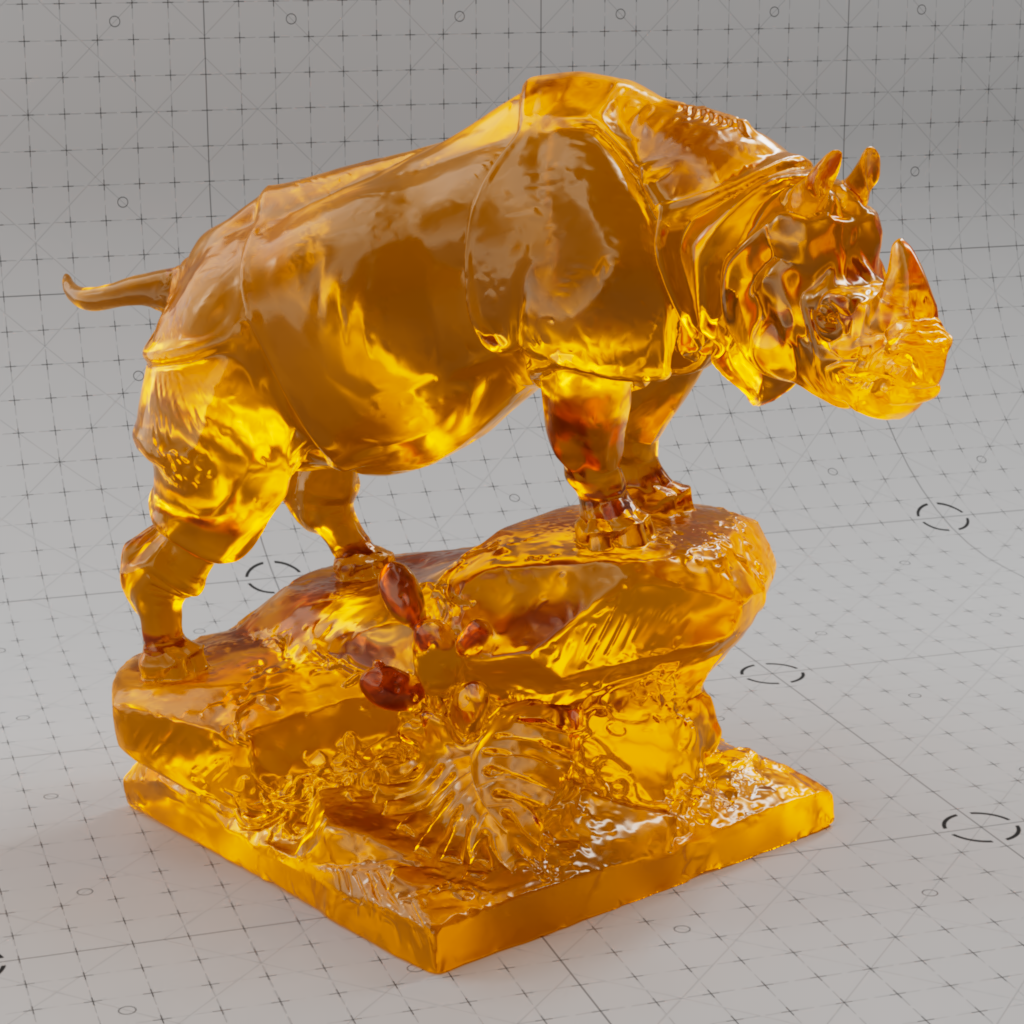
|

|
|
Transmission Color: White (default) Transmission Weight: 1 |
Green | Orange | Black |
Weight
This is a multiplier of the refraction tint. When 0.0 refraction transparency is disabled.

|
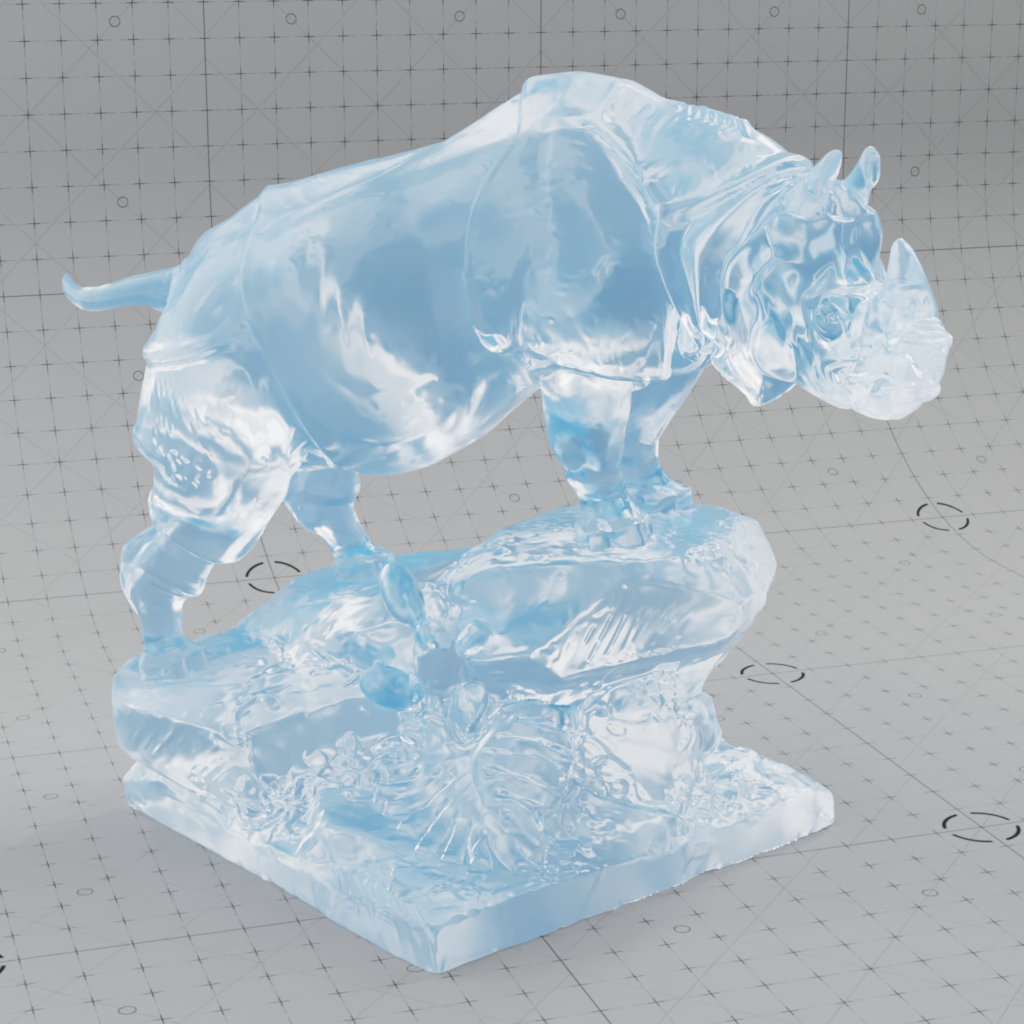
|
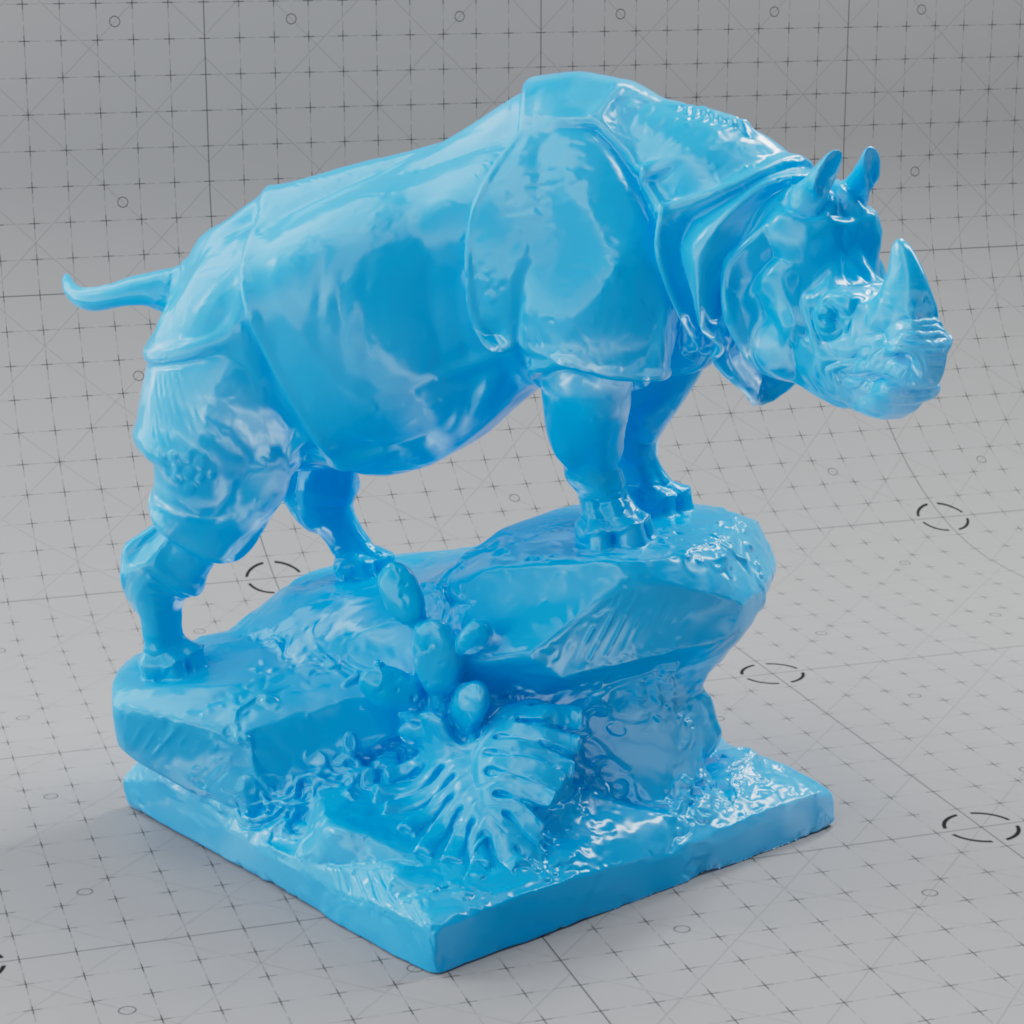
|

|
|
Transmission Weight: 1 Transmission Color: White |
0.25 | 0.75 | 0 (default) |
Extra Roughness
The Extra Roughness parameter allows for transmission roughness that can be higher or lower than Reflection Roughness. This is because the Reflection Roughness parameter also affects the transmission roughness result, how blurry refractions appear.
Extra Roughness can be set from -1 to 1, the default value of 0 results in Transmission Roughness that is equal to Reflection Roughness.
The example images below demonstrate the Reflection Roughness being used to control the transmission roughness.
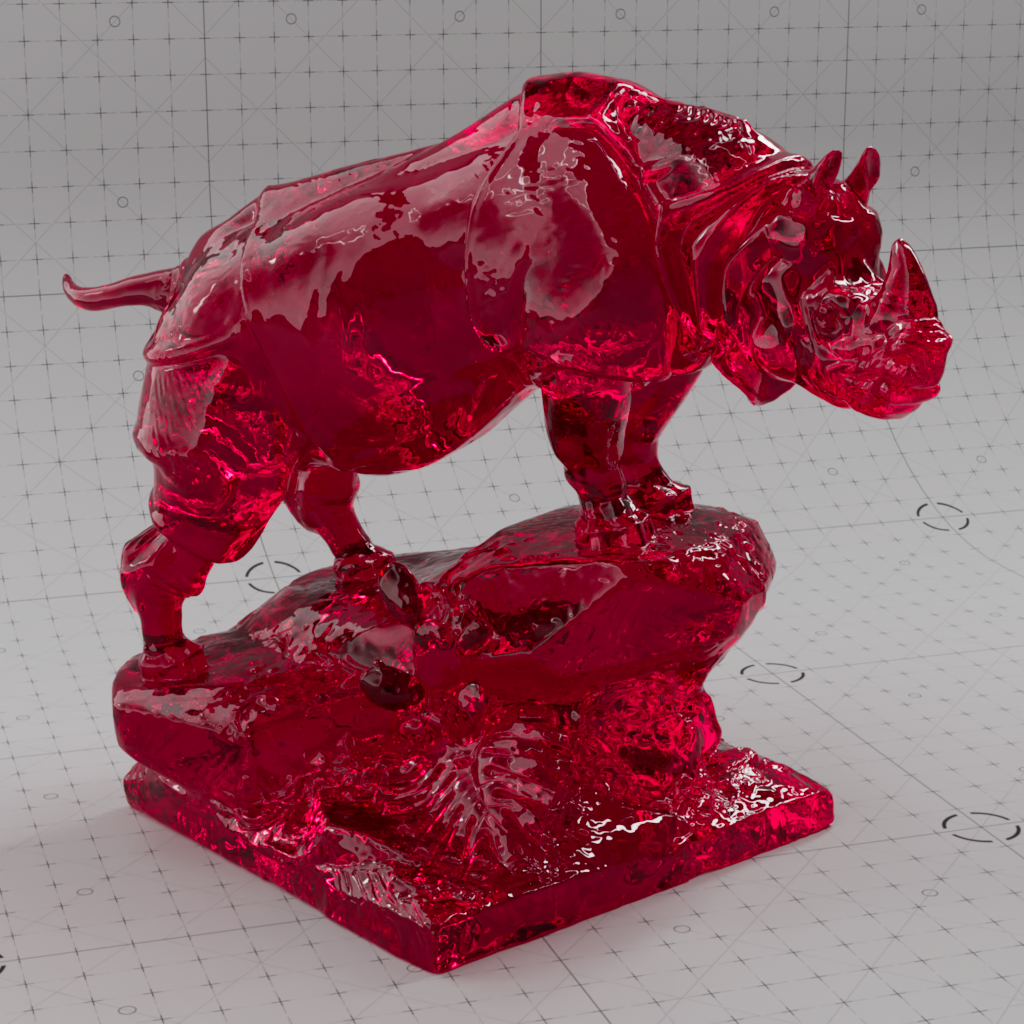
|
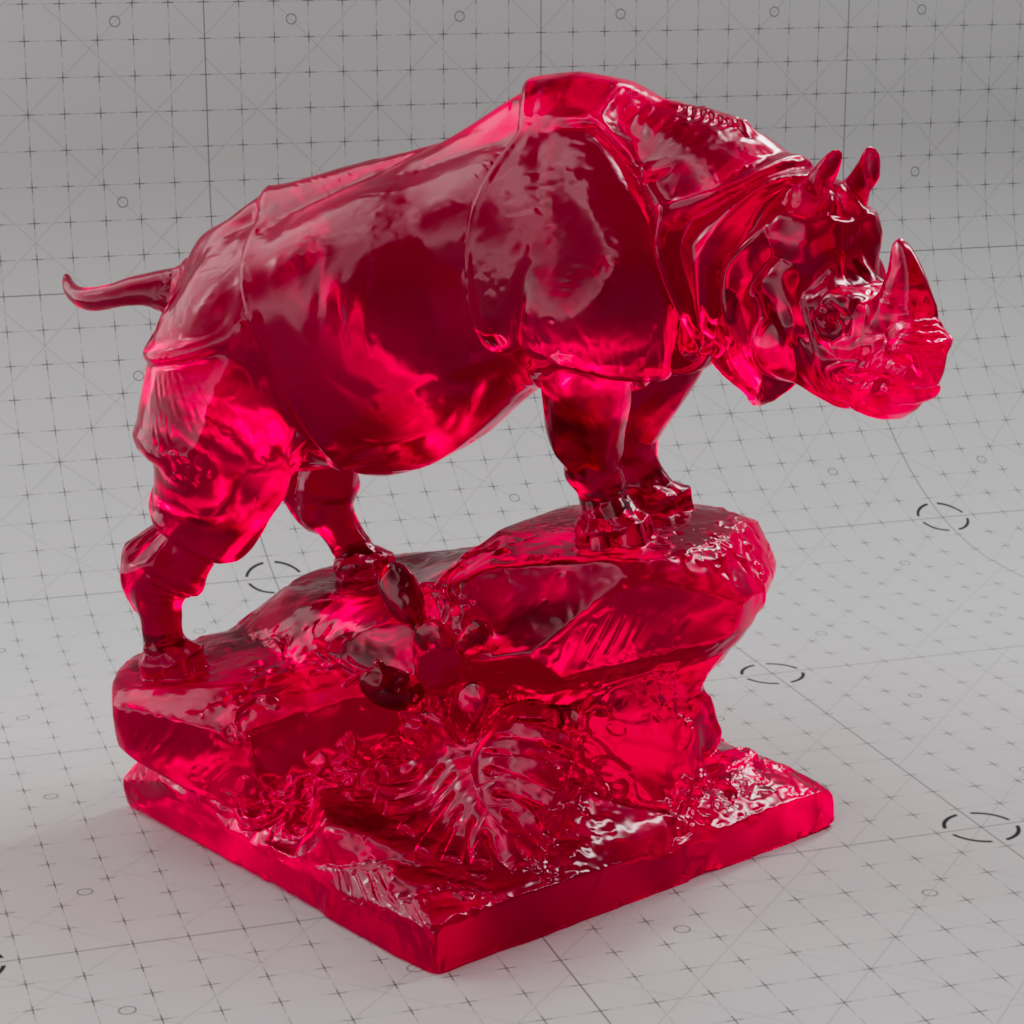
|
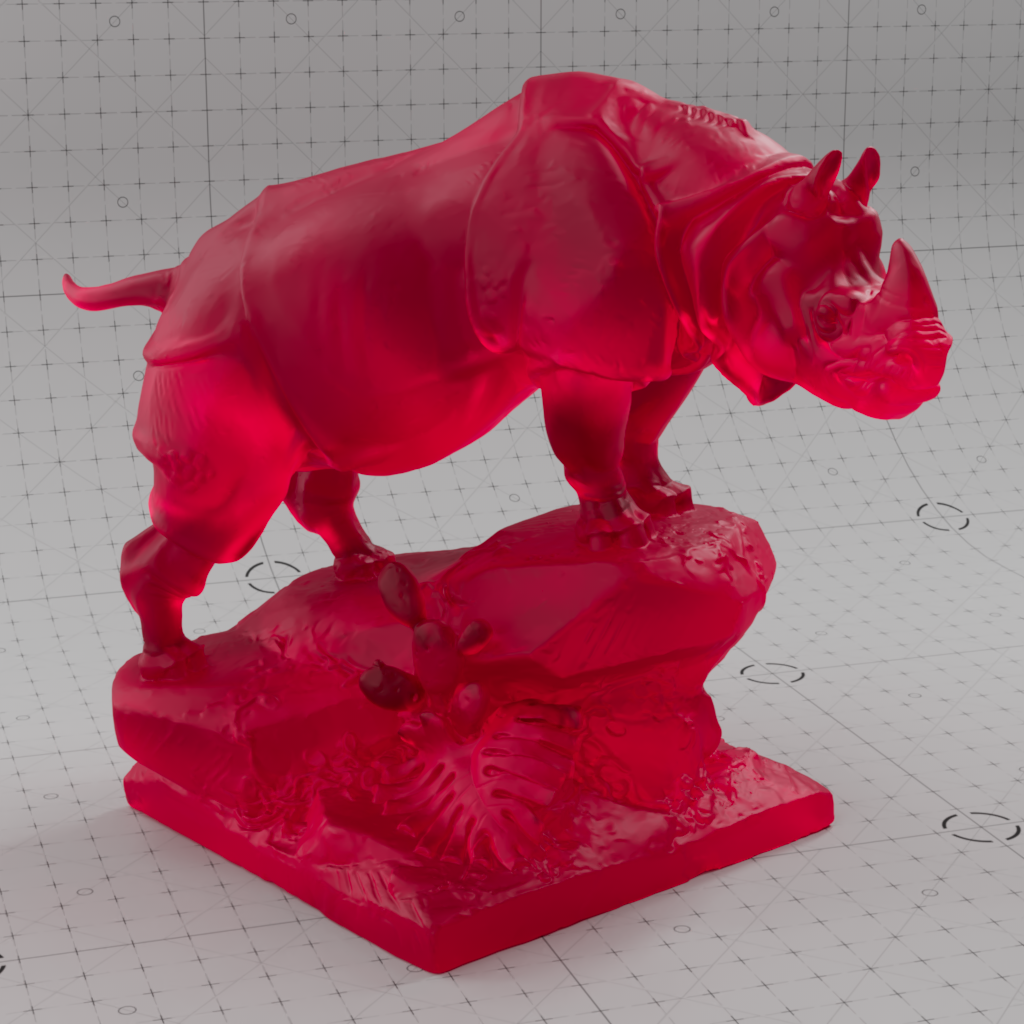
|
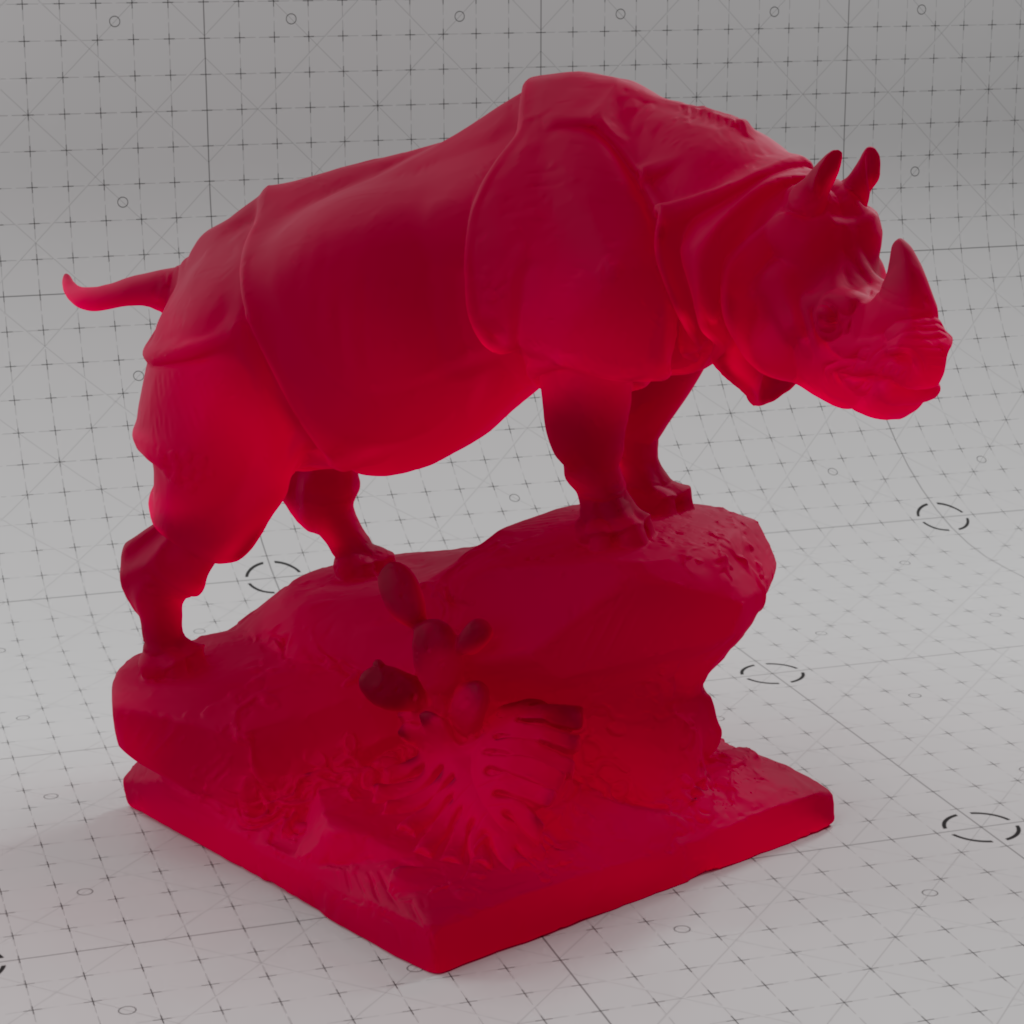
|
|
Reflection Roughness: 0 Extra Roughness: 0 Transmission Color: Red |
0.2 (default) 0 |
0.5 0 |
0.75 0 |
Positive or negative values can be used for Extra Roughness to counteract Reflection Roughness so that refractions can be more or less blurry than reflections.
The example images below demonstrate offset values between the two parameters along with the calculated transmission roughness equivalent which is just the difference between Extra Roughness and Reflection Roughness.

|
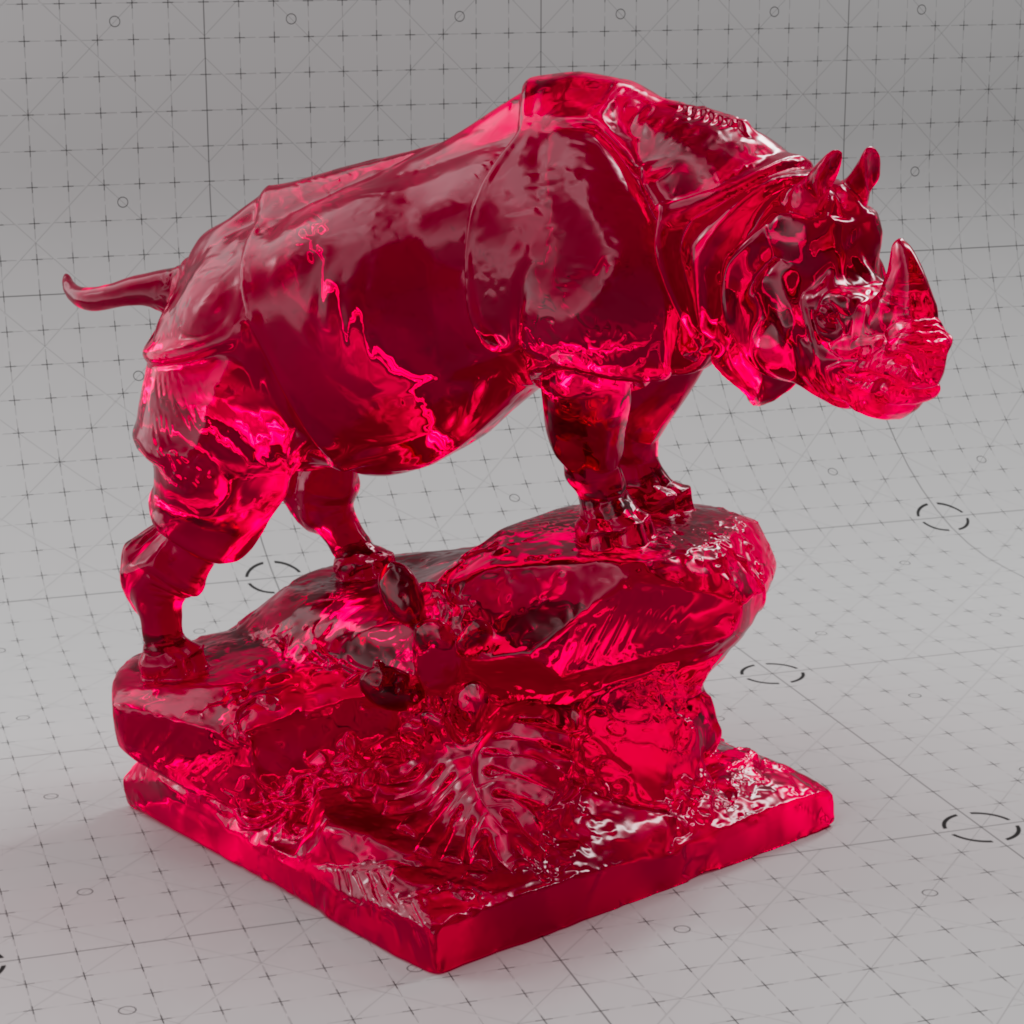
|

|
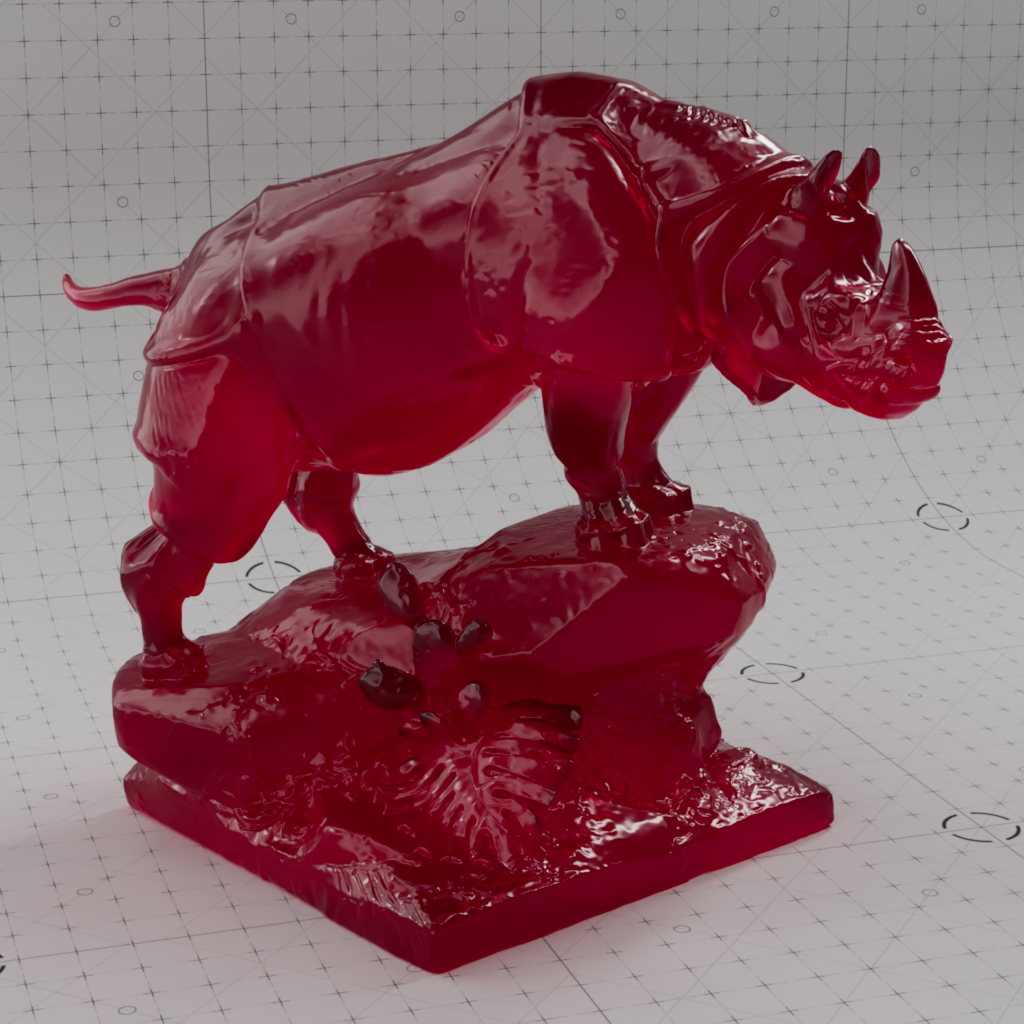
|
|
Extra Roughness: 0 Reflection Roughness: 0 Transmission Roughness : 0 Transmission Color: Red |
- 0.2 0.2 0 |
- 0.4 0.5 0.1 |
0.5 0.2 0.3 |
Samples
As always when using blurry effects, such as the roughness for refractions, additional samples need to be taken to get a noise free result. Higher numbers will reduce any potential grain issues, but will take longer to render and vice-versa.
Depth
This value describes at what distance in scene units the Transmission Color is fully reached within the material. Transmission Depth should be set in accordance with the thickness of the object in the scene. At higher values, the density of the object decreases resulting in less dispersion of color in the object.
When a value of 0 is used the transmission is tinted with the Transmission Color at all depths.
Check the scale of your scene and objects if the transmission depth is not behaving as expected.
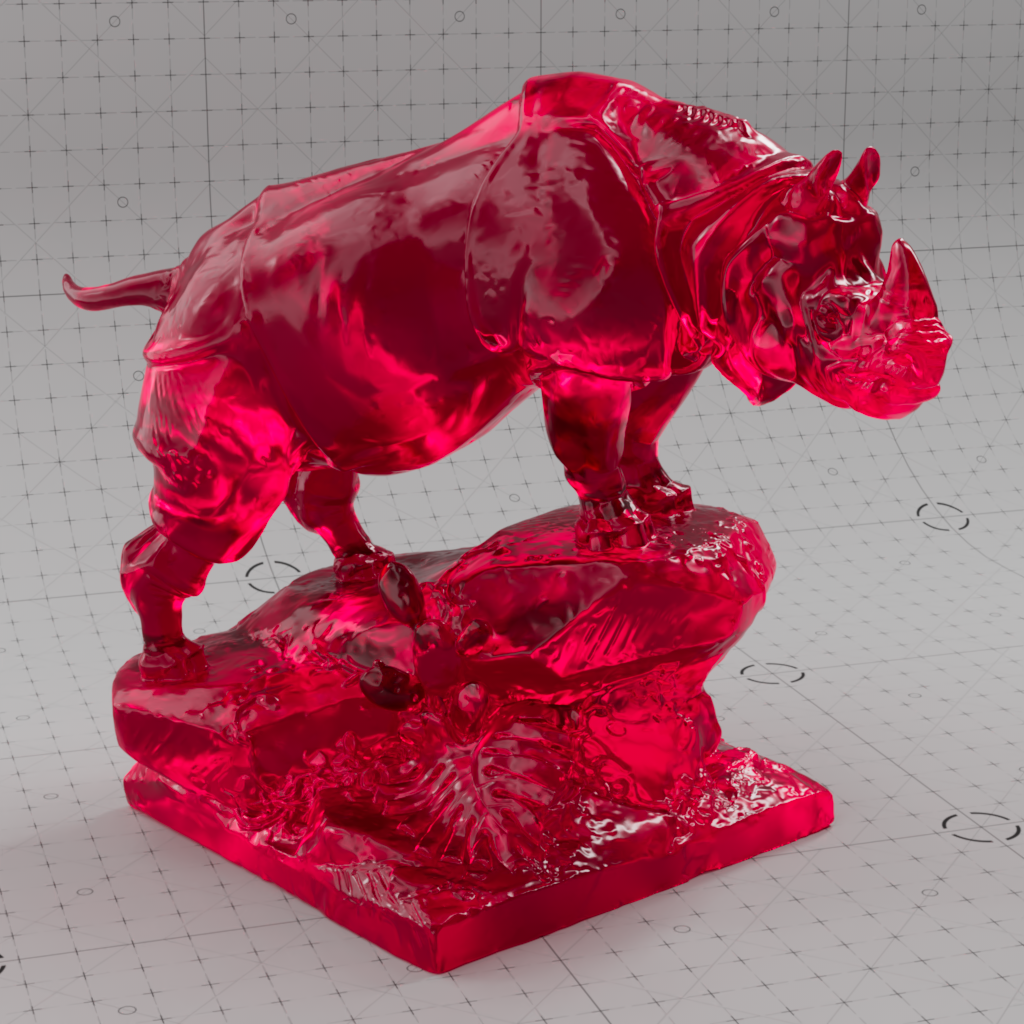
|
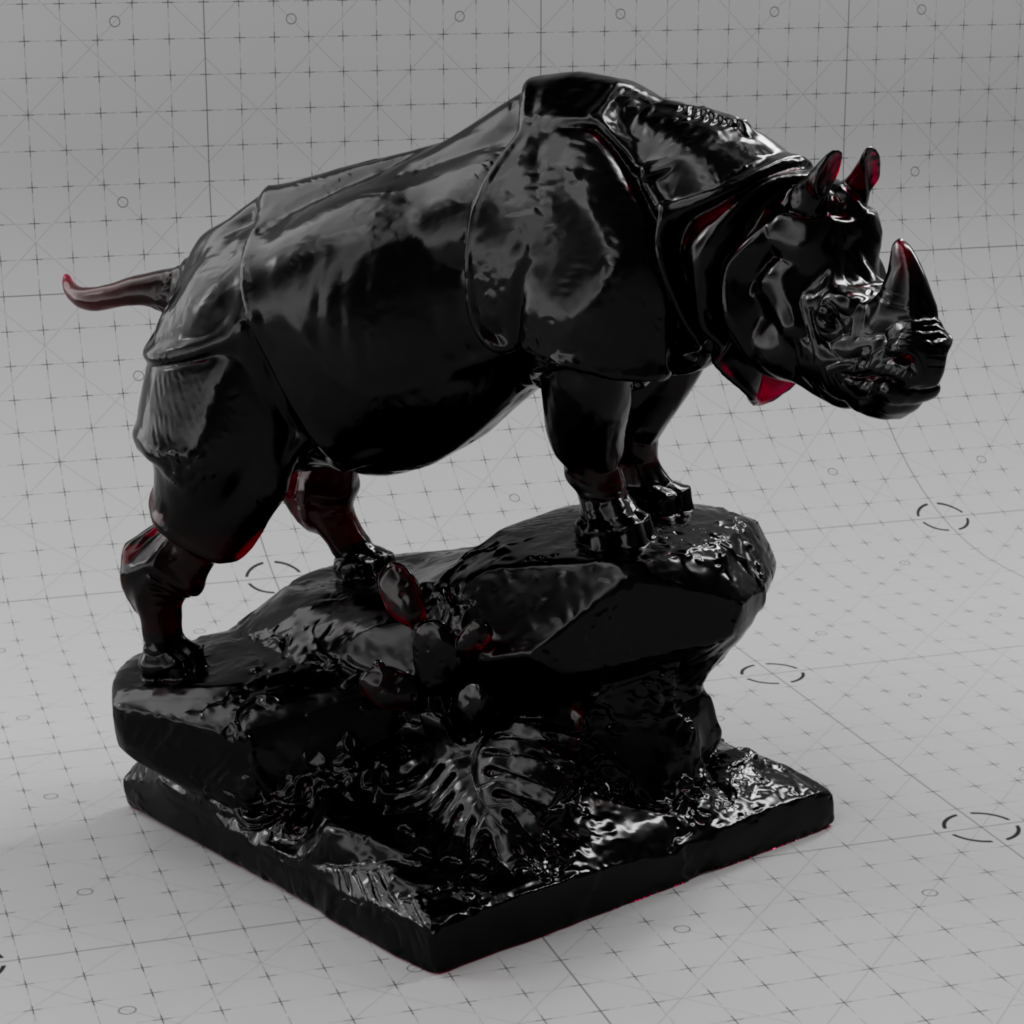
|

|
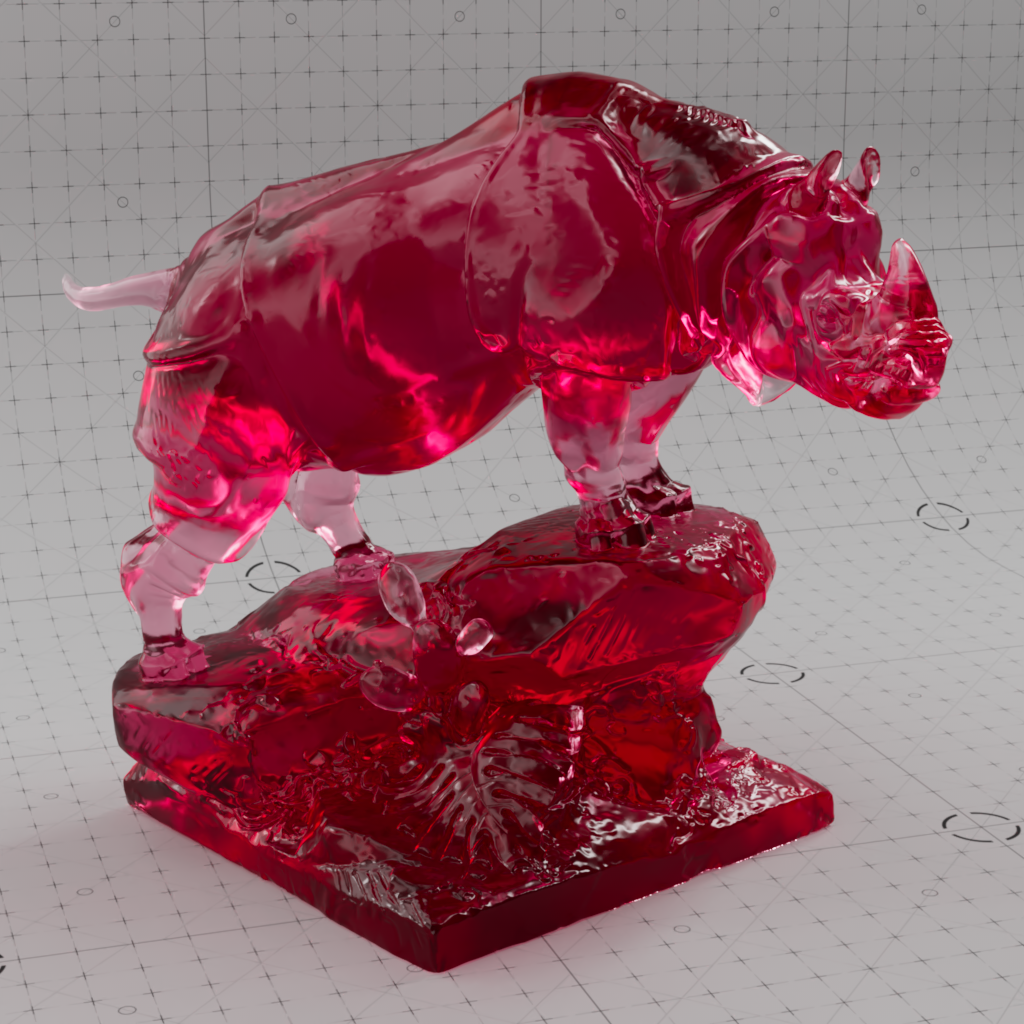
|

|
|
Transmission Depth: 0 (default) Transmission Color: Red |
0.1 |
1 |
3 |
10 |
Scatter Color
This is an additional transmission color that gets scattered in the material. This is useful for coloring thicker liquids like orange juice, milk, or honey but it can also be helpful for large volumes of thin liquids such as seawater, to reproduce its typical blue tint.
Lighter colors result in more scattering and darker colors result in less scattering with the default scatter color black resulting in no scattering.
Scatter Anisotropy
This is used to influence the direction the scattered light is scattered.
The default anisotropy of 0 results in isotropic scattering, when the light scatters equally in all directions.
Positive values increase the chance for forward scattering, when more light is scattered in the direction the light rays are already traveling. Negative values increase the chance for back scattering, when more light is scattered back towards the location of the light source.
Samples
The scattering, as all blurry effects, will need multiple samples to get a clean "grain-free" result. Higher numbers will reduce any potential grain issues, but will take longer to render and vice-versa.
Dispersion (Abbe)
This value describes how much the refractive index (IOR) in a transparent material varies across the spectrum of light wavelengths which results in a color shift in the material. Typical values for glass start at 10 and are around 70 for a diamond, for example.
Smaller values result in more intense dispersion. With the default value of 0 the dispersion calculation is disabled.
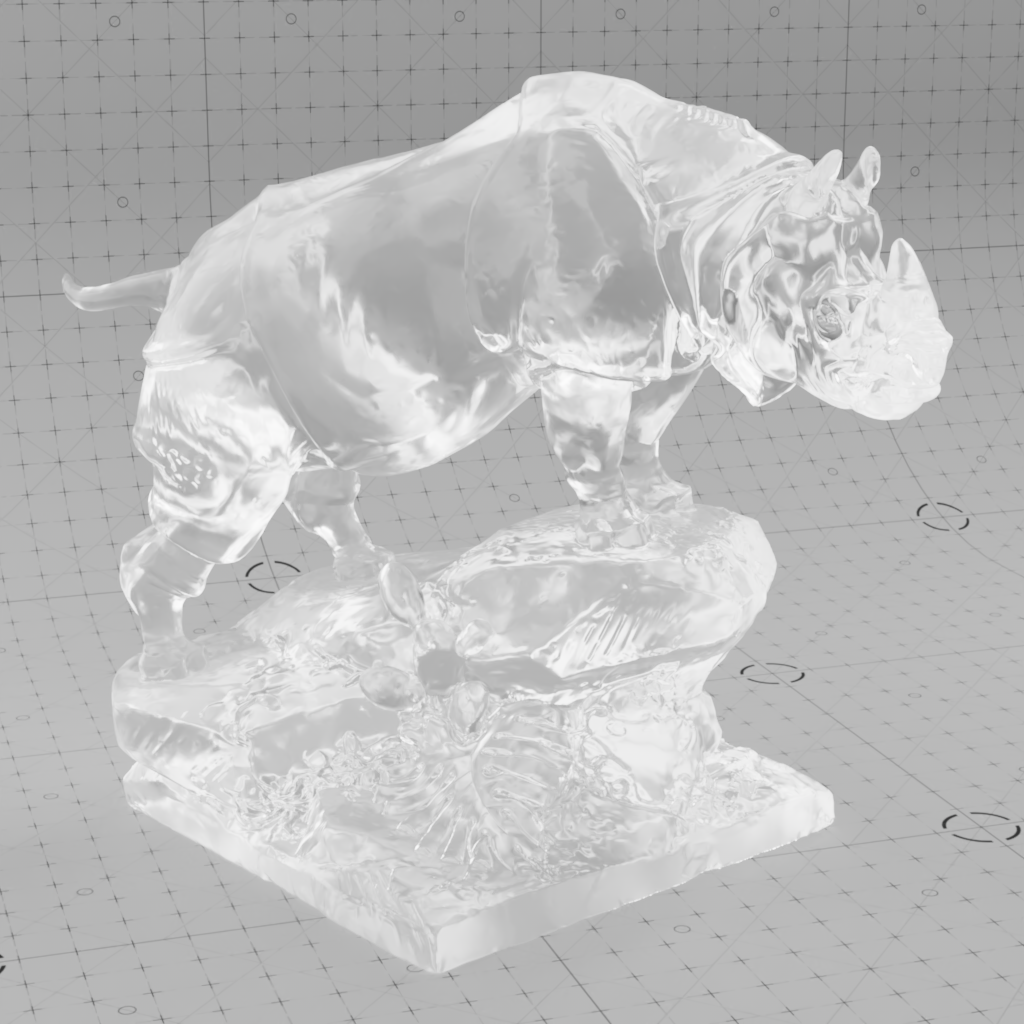
|

|

|
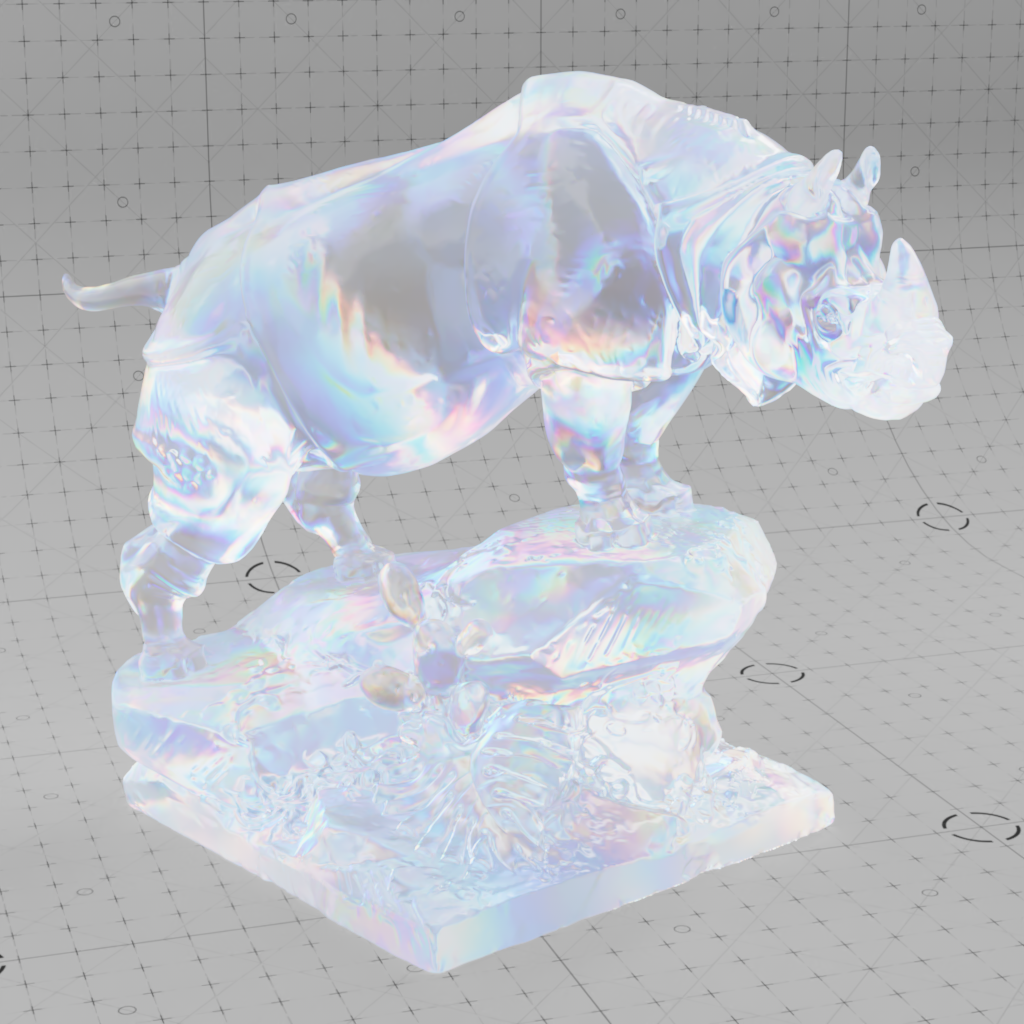
|
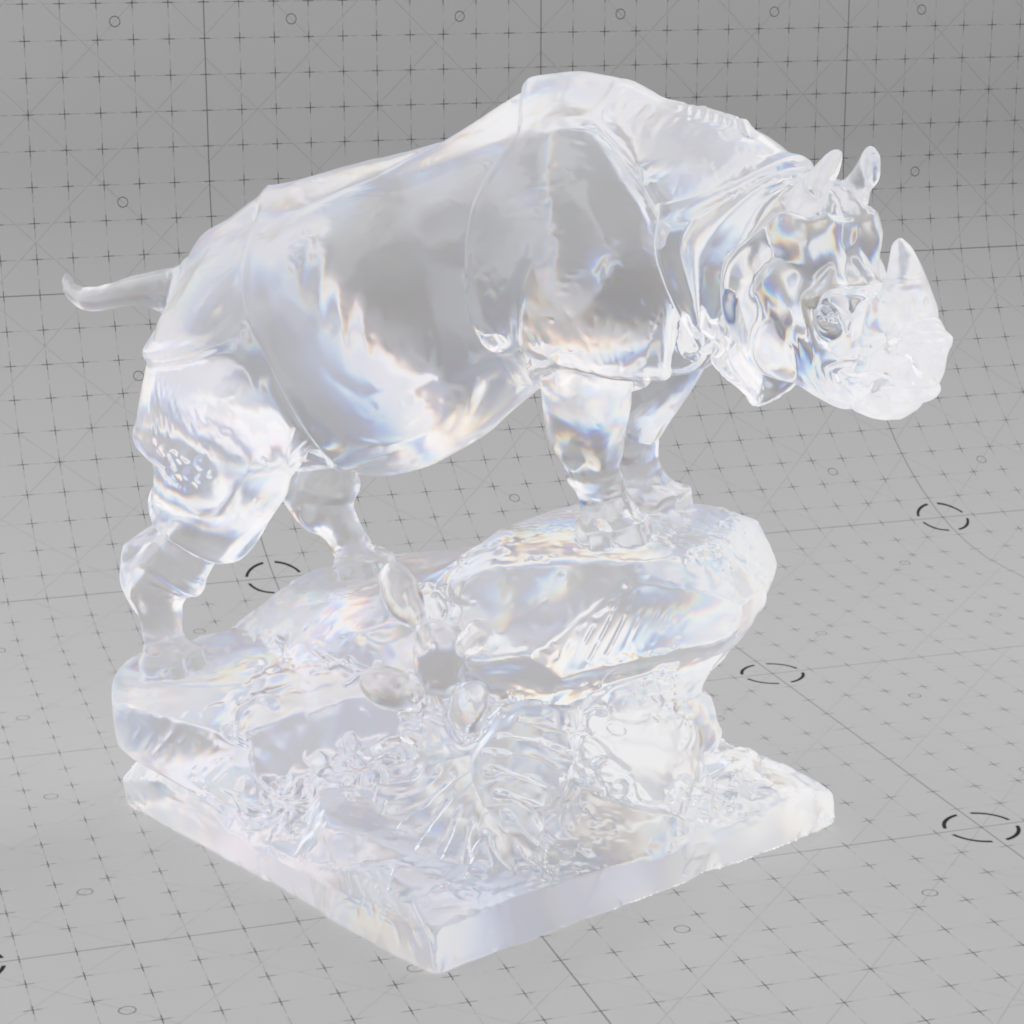
|
|
Dispersion: 0 (default) |
0.1 |
0.5 | 1 |
5 |
Subsurface
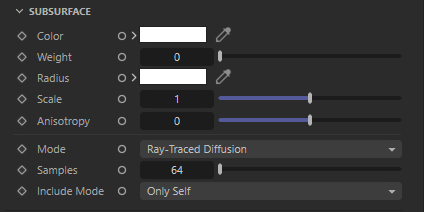
|
Subsurface Scattering (SSS) simulates light that penetrates the surface of an object and gets scattered around in the volume of your geometry. Some of this light may exit the object again and illuminate the surface in that area. This effect is common for many real world materials, but best known for skin, wax candles, plastic, and even stones.
The general look of subsurface scattering is driven by three main components, the overall color (subsurface color), the color of the light that scatters inside the object and then returns to the surface (subsurface radius), and the total distance that the subsurface scattering effect can travel which makes things look more or less dense (subsurface scale). A subsurface scattering effect is very scale dependent so it's important to have an understanding of your scene's scale and the unit of measurement that you are working in.
For example, in human skin a skin tone would be appropriate for subsurface color, a generally reddish color for subsurface radius to emulate the blood vessels underneath the skin, and a relatively low scale so that the skin does not appear too thin.
The Subsurface parameters are also used to control a back-lighting/translucency effect when Thin Walled is enabled in the Geometry subsection.
The example images for the Subsurface parameters below use the Random Walk subsurface mode unless noted otherwise.
Credit to Three D Scans for the Rhinoceros model used in the example images below.
Color
Light scattered inside the object takes on this overall color and transports it back to the surface.
In a material for human skin, a skin tone would be appropriate for the subsurface color.
Depending on the scale of the scattering this can be thought of similarly as an albedo color for subsurface scattering since low scattering values will result in a very diffuse look and where black is used no subsurface scattering will take place at all.
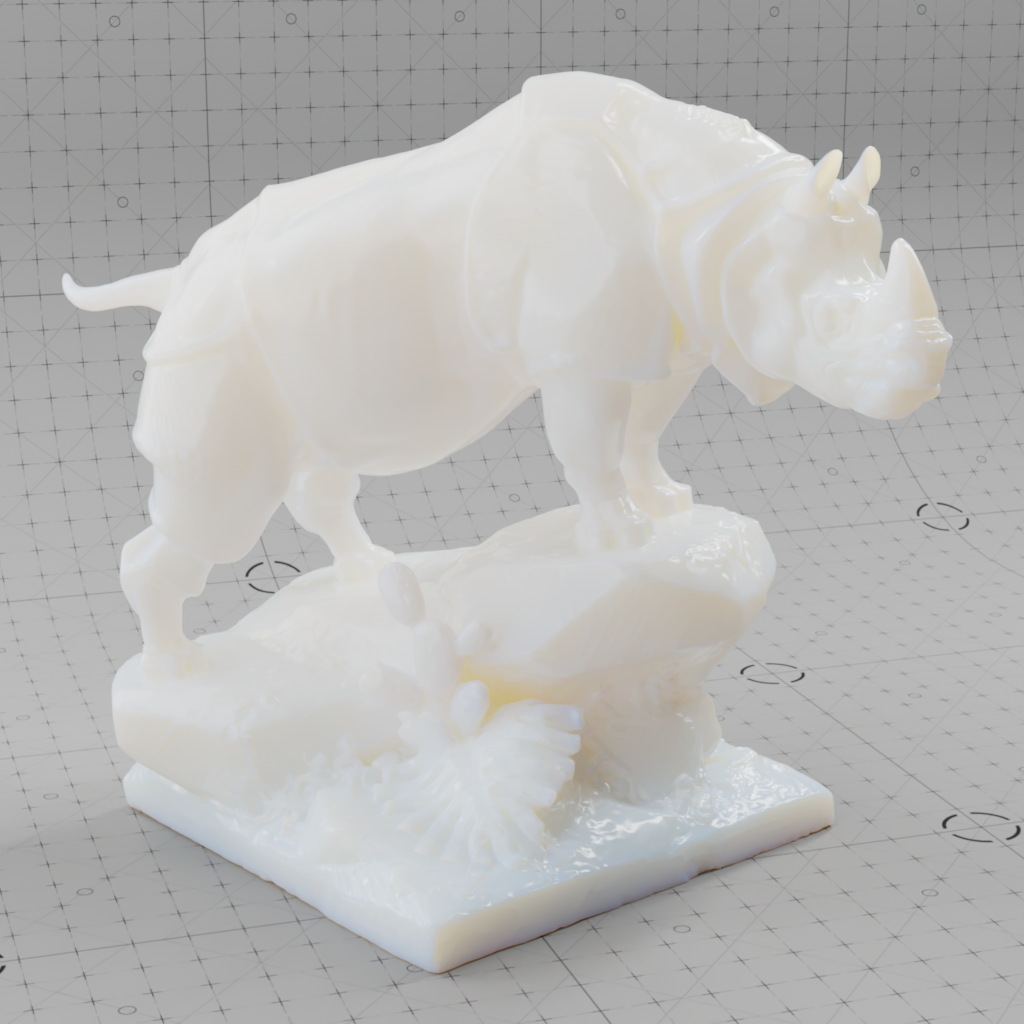
|
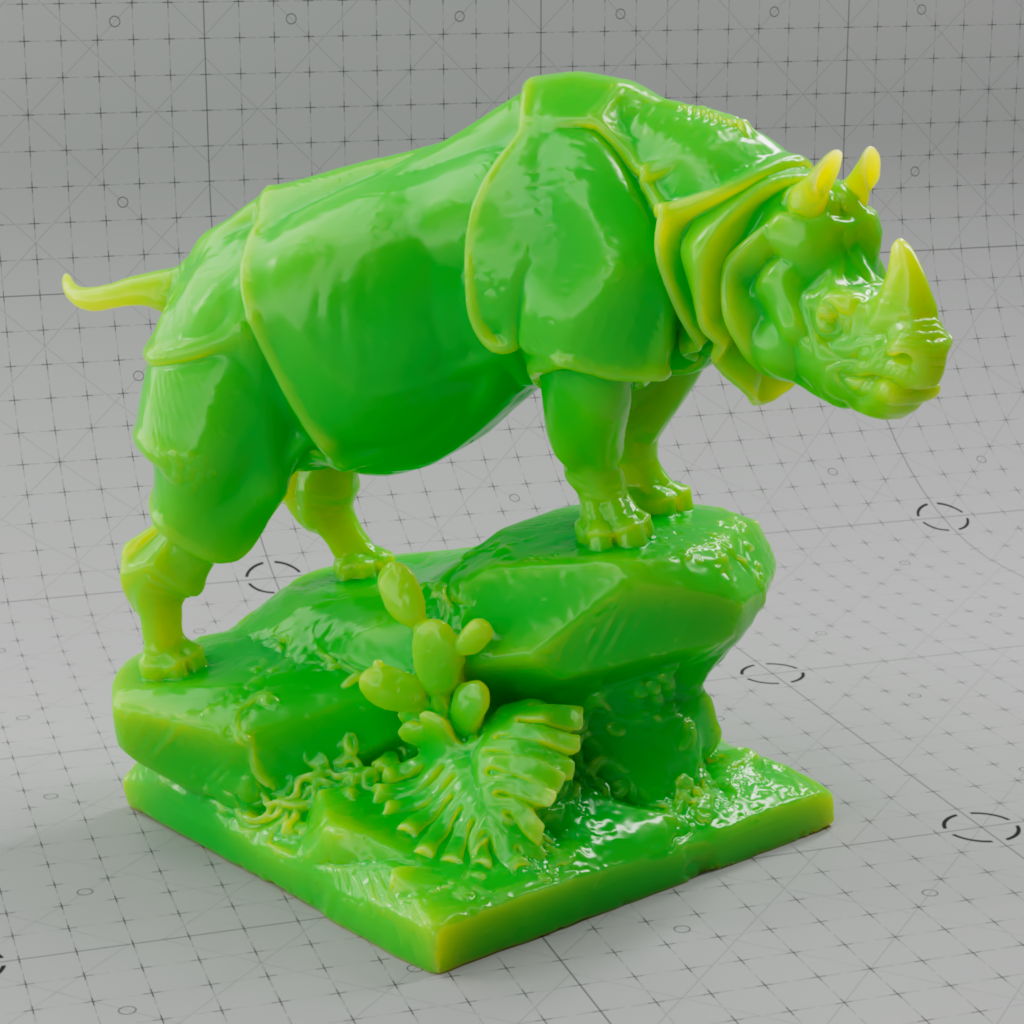
|
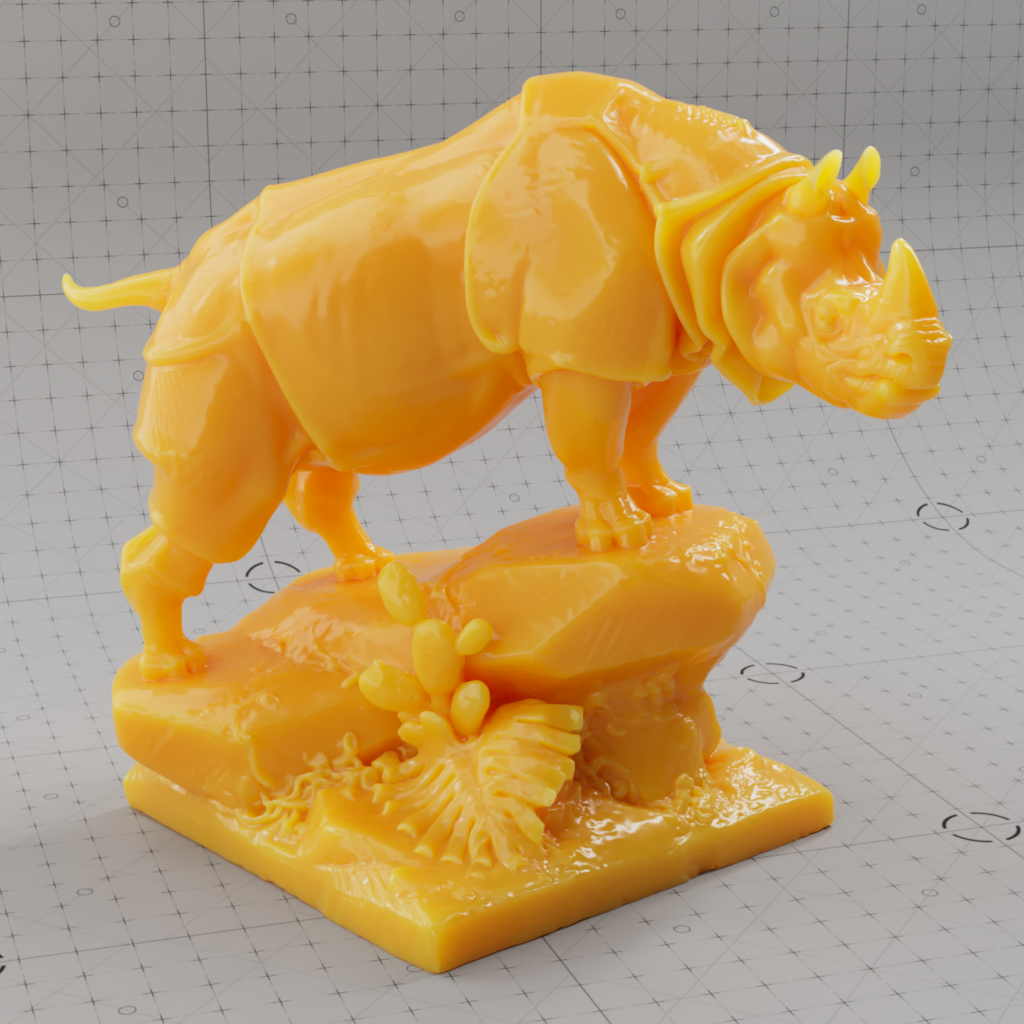
|

|
|
Subsurface Color: White (default) Subsurface Radius: Orange Subsurface Weight: 1 |
Green |
Orange |
Black |
Weight
This can be used to blend between diffuse surface shading and subsurface scattering. With a Weight value of 1, diffuse shading has no effect and the full Subsurface Scattering effect becomes visible.
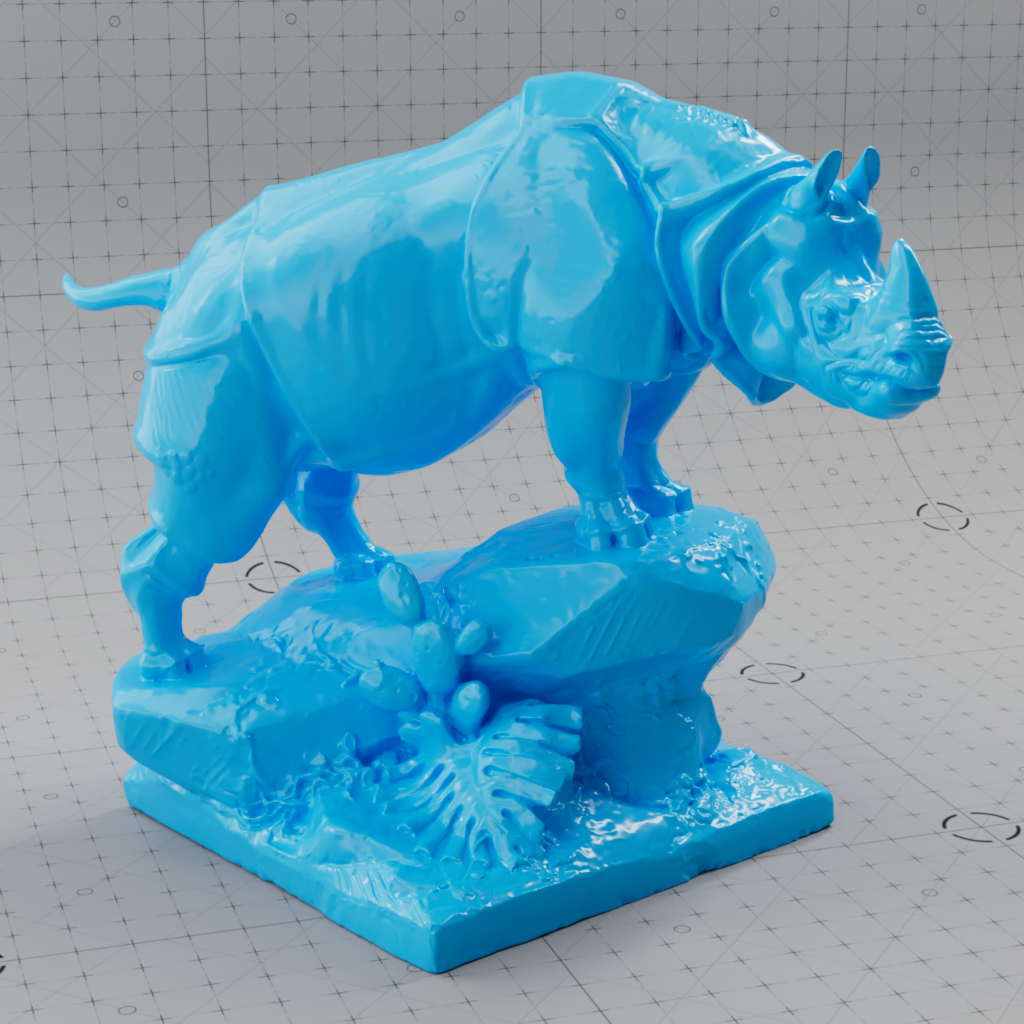
|

|
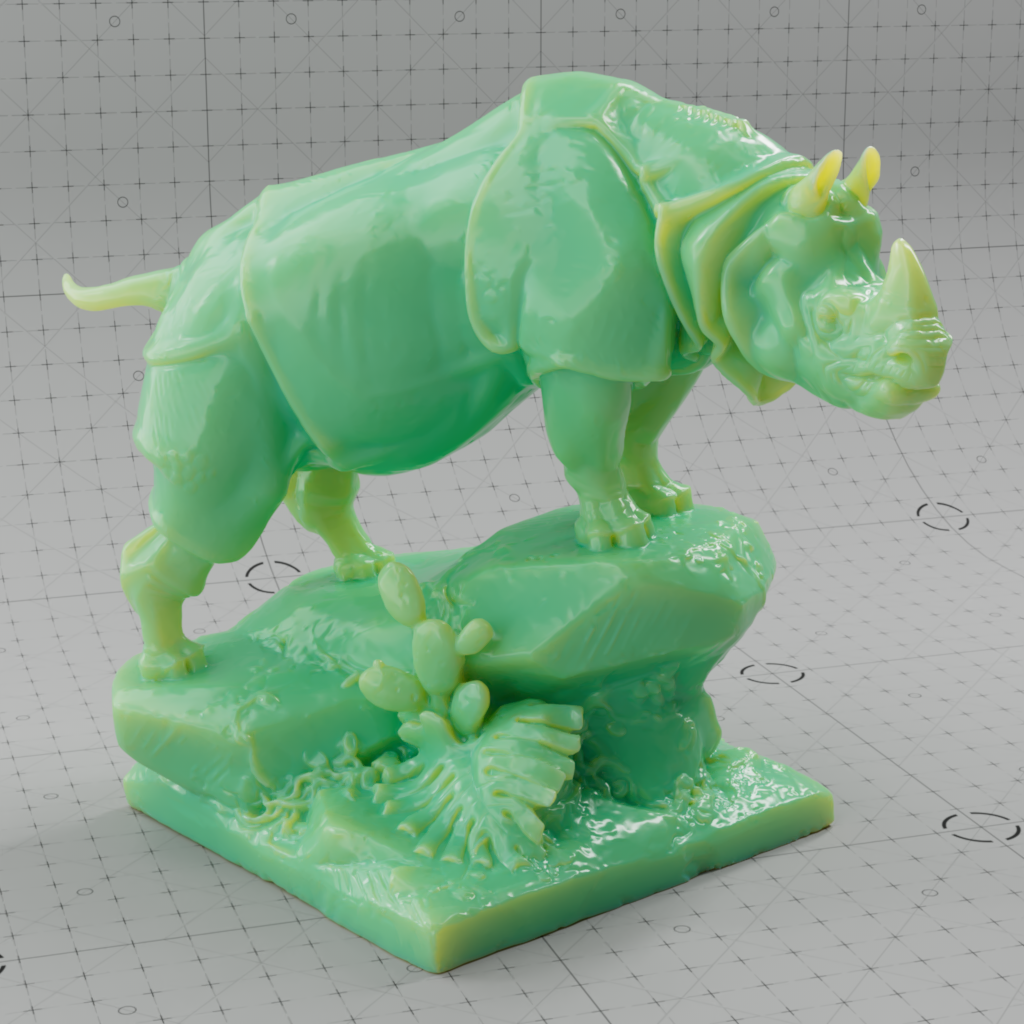
|
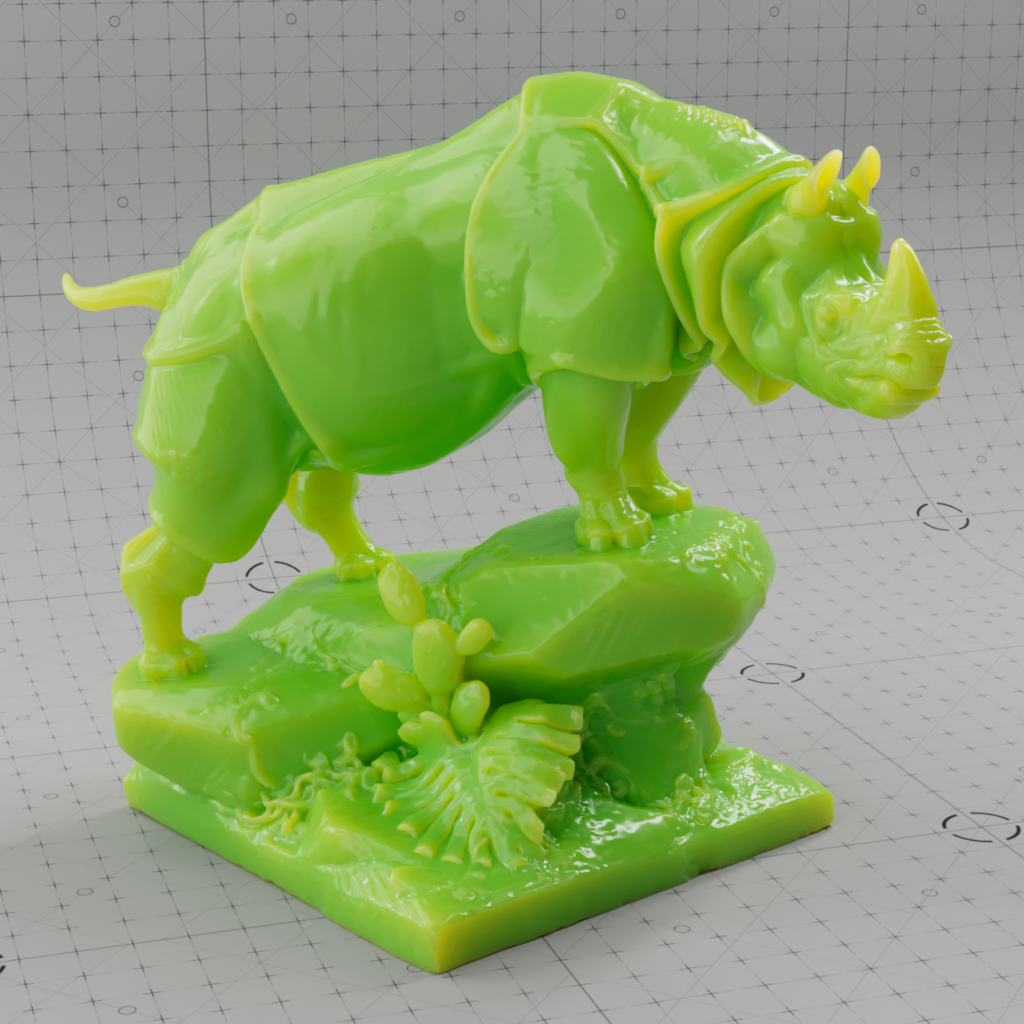
|
| Subsurface Weight: 0 | 0.5 | 0.75 | 1 |
Radius
Subsurface radius controls the average distance the red, green, and blue wavelengths can travel and scatter before returning to the surface.
Lighter colors (higher values) result in more scattering and darker colors (lower values) result in less scattering. The default radius color white means all colors are scattered equidistant and a black radius color results in no subsurface scattering.
For example, a radius color with RGB values (1, 0, 0) means that only the red wavelength would travel beneath the surface and the green and blue components would be completely blocked from scattering.
The radius color is a very powerful parameter to tweak for many of the most interesting subsurface scattering looks.
Subsurface radius is in scene units even though it is represented as a color input, however, it is recommended to use the subsurface scale parameter to control the overall distance subsurface light can travel.
Working this way makes it easier to author radius color maps rather than relying on high dynamic range color values above 1 in order to achieve the intended result because the total distance light can travel in a subsurface object is obtained by multiplying the subsurfaceRadius color values by the subsurfaceScale value.
For example, if red should scatter 7.5 scene units, green should scatter 5 scene units, and blue should scatter 1 scene unit then a radius color with RGB values (0.75, 0.5, 0.1) should be used in combination with a subsurface scale value of 10. The final result would be the same as using a radius color with RGB values (7.5, 5, 1) but with a subsurface scale of 1.

|
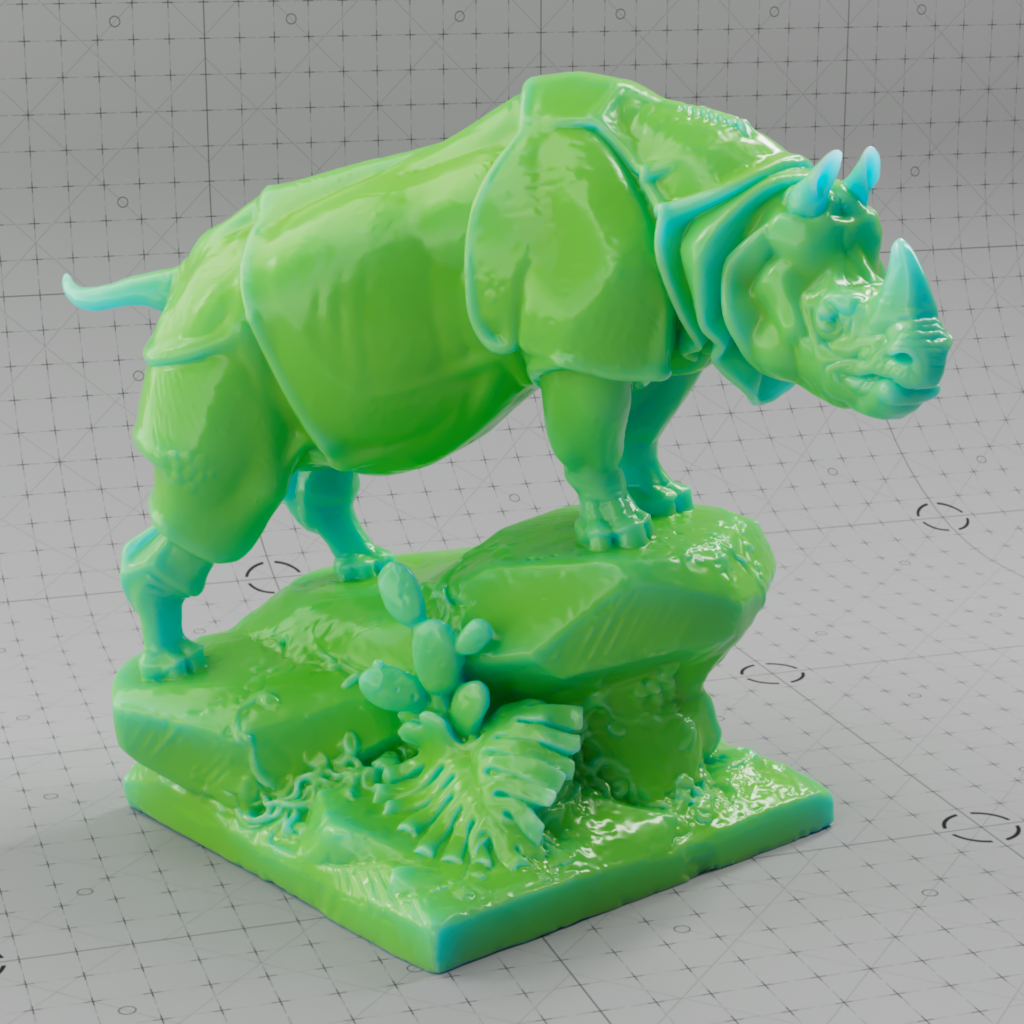
|
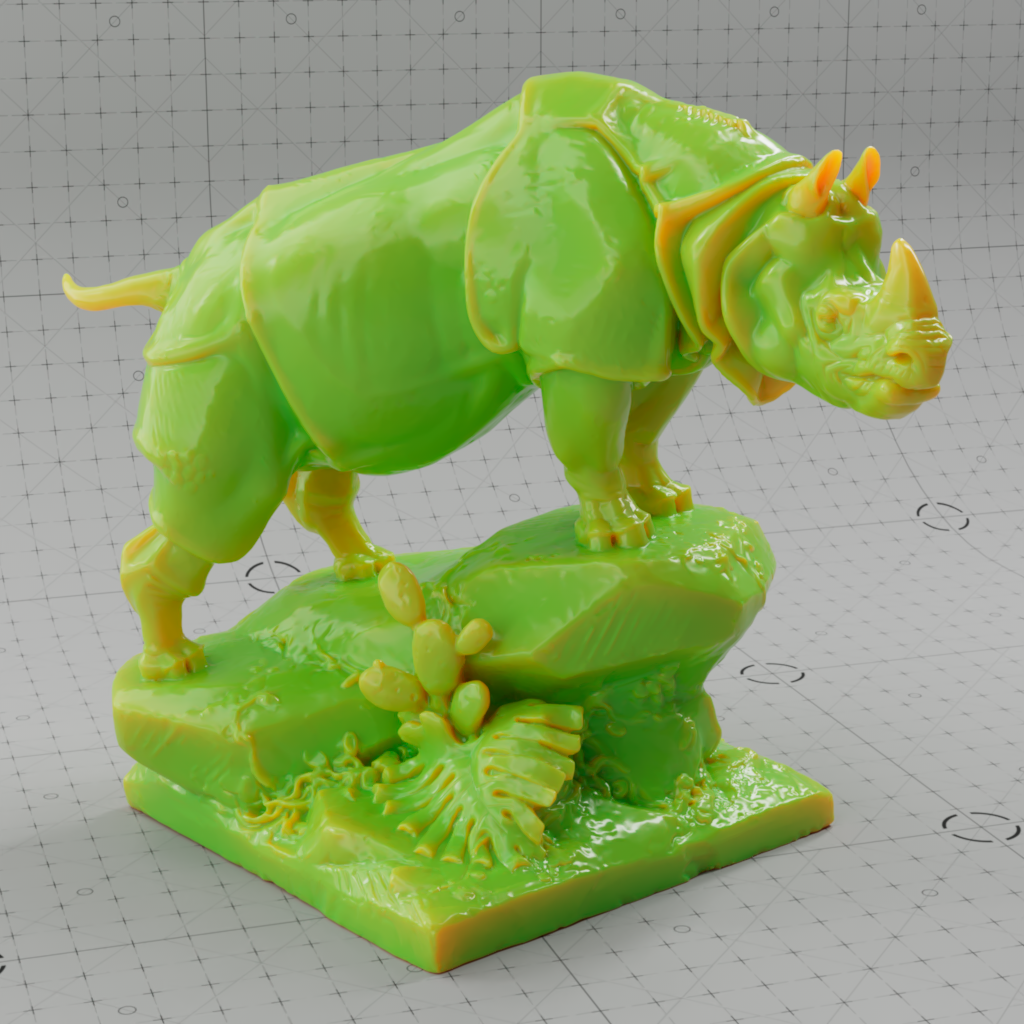
|

|
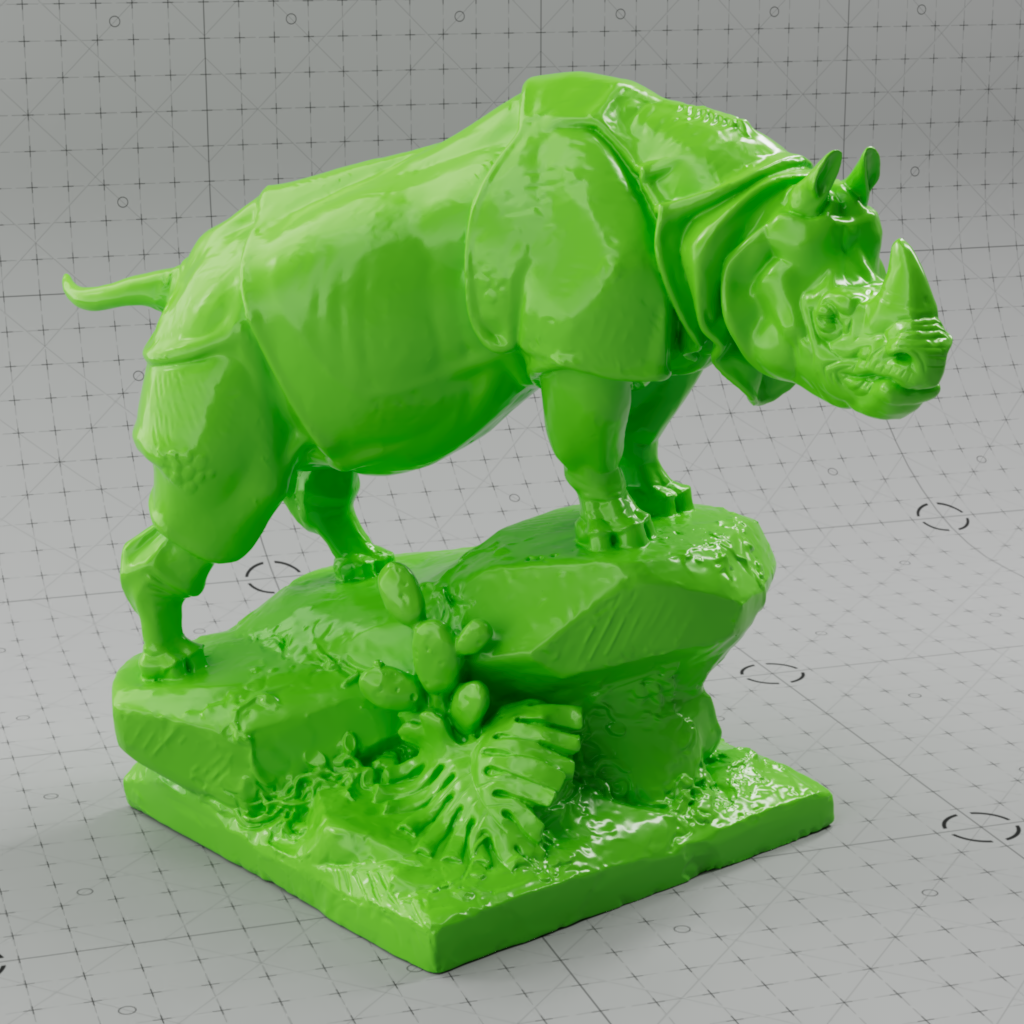
|
|
Subsurface Radius: White (default) Subsurface Color: Light Green Subsurface Scale: 0.75 |
Light Blue (0, 0.5, 0.1) Light Green |
Red (1,0,0) Light Green |
Red (1,0,0) White |
Black (0,0,0) Light Green |
Scale
Subsurface scale controls the overall distance in scene units subsurface scattering can travel.
For example, if your scene is using centimeters then a value of 10 results in subsurface scattering traveling up to 10 centimeters.
The total distance light can travel in a subsurface object is obtained by multiplying the Radius color values by the Scale value.
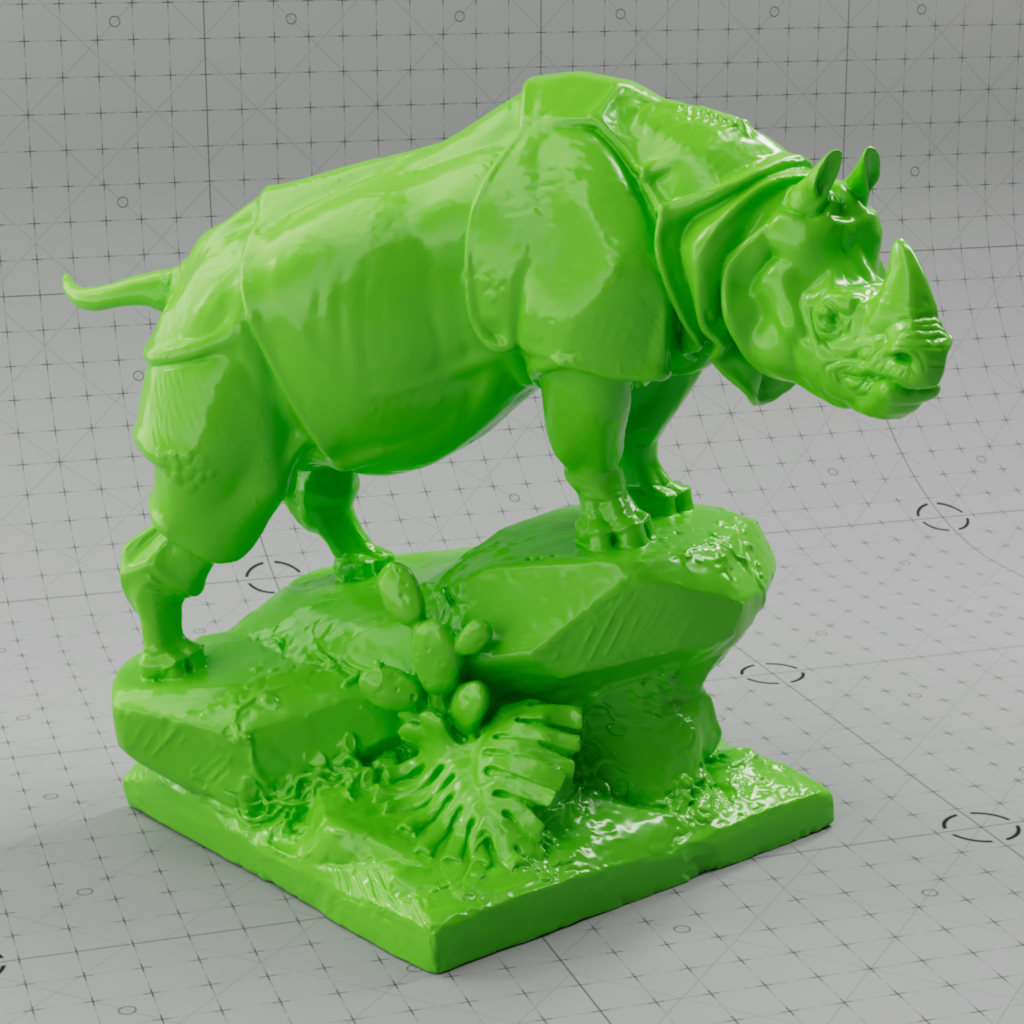
|
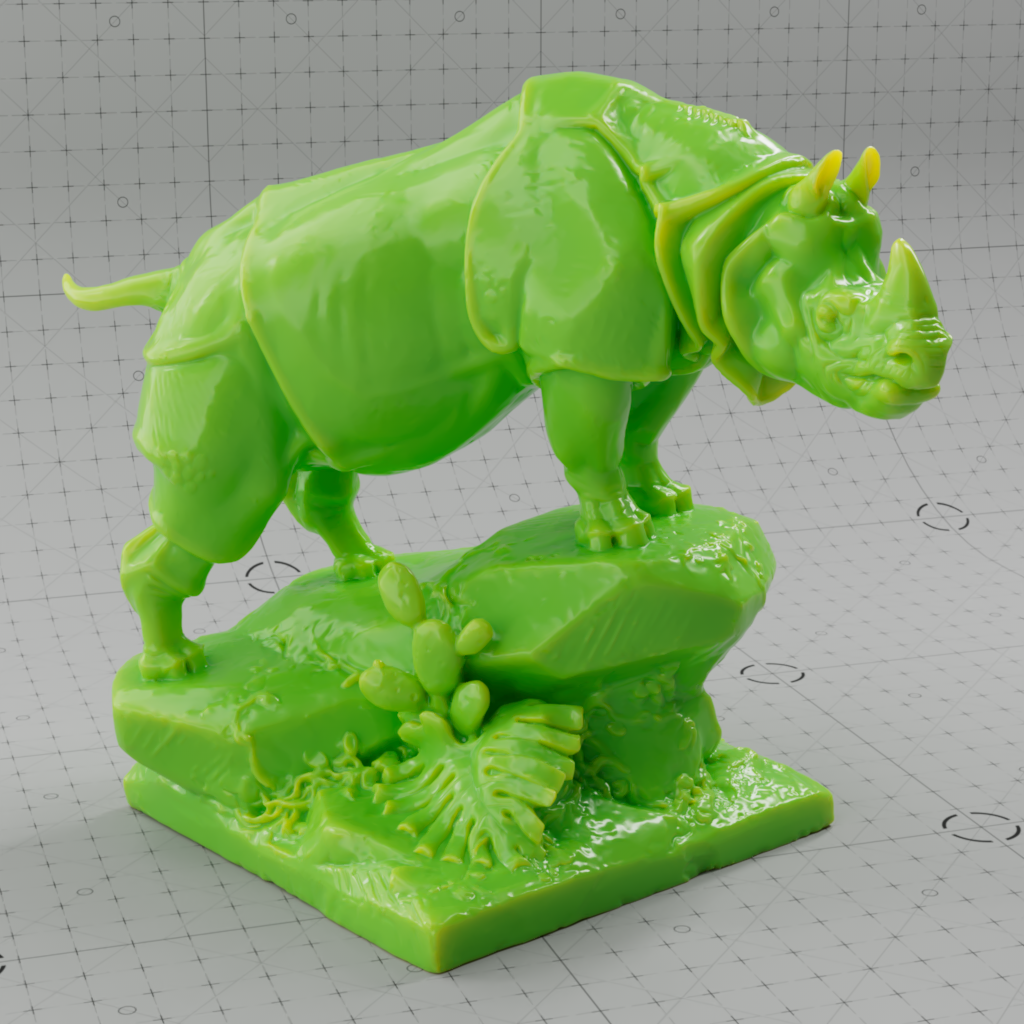
|

|
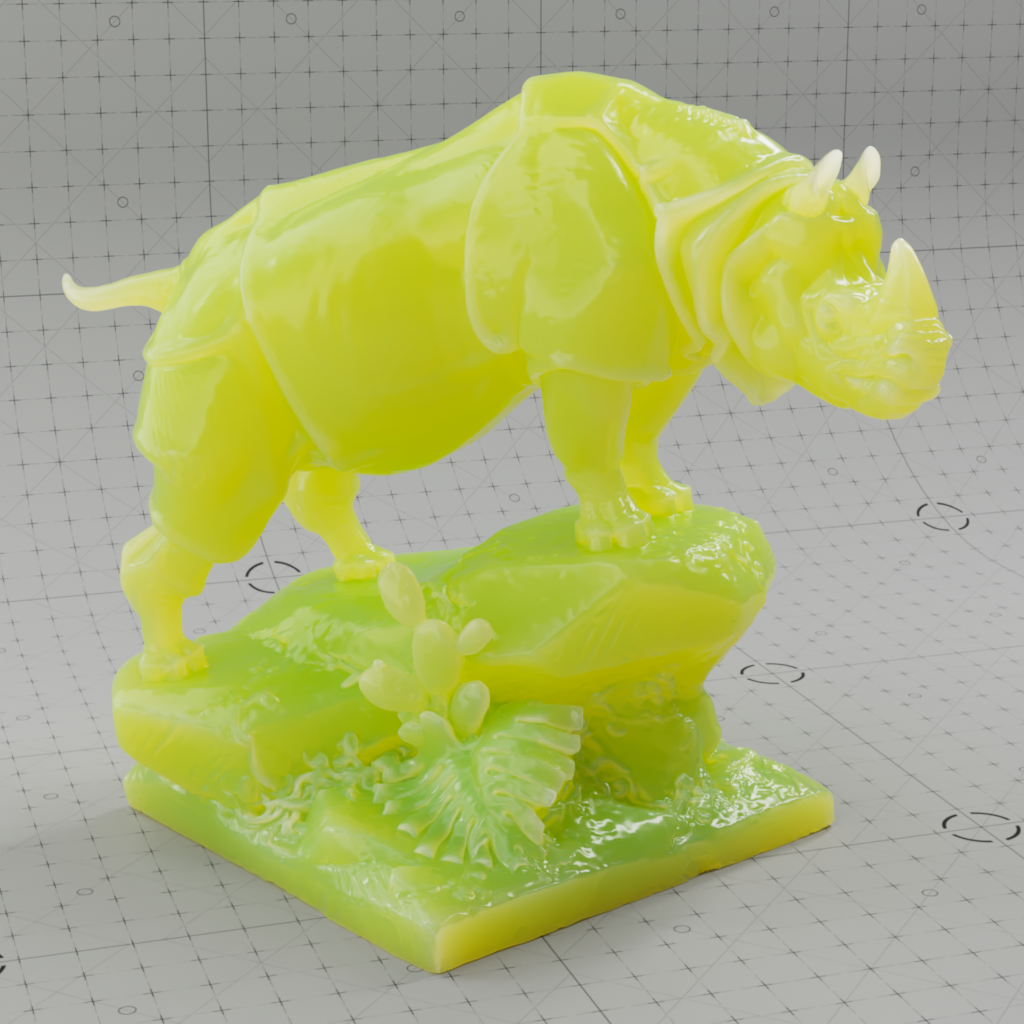
|
|
Subsurface Scale: 0 Subsurface Color: Light Green Subsurface Radius: Orange |
0.25 |
1 (default) |
5 |
Anisotropy
Anisotropy controls the direction light scatters inside a subsurface object within a -1 to 1 range. Adjusting a material's anisotropy allows for more artistic control and increased realism.
The default anisotropy of 0 results in isotropic scattering, when the light scatters equally in all directions.
Positive values increase the chance for forward scattering, when more light is scattered in the direction the light rays are already traveling. Negative values increase the chance for back scattering, when more light is scattered back towards the location of the light source.
Positive subsurface anisotropy values frequently lead to a more glassy appearance.
Only relevant for Random Walk mode.
Values closer to the extreme ends (-1 and 1) can result in unexpected or unwanted results because the light scattering becomes so highly concentrated in a single direction.
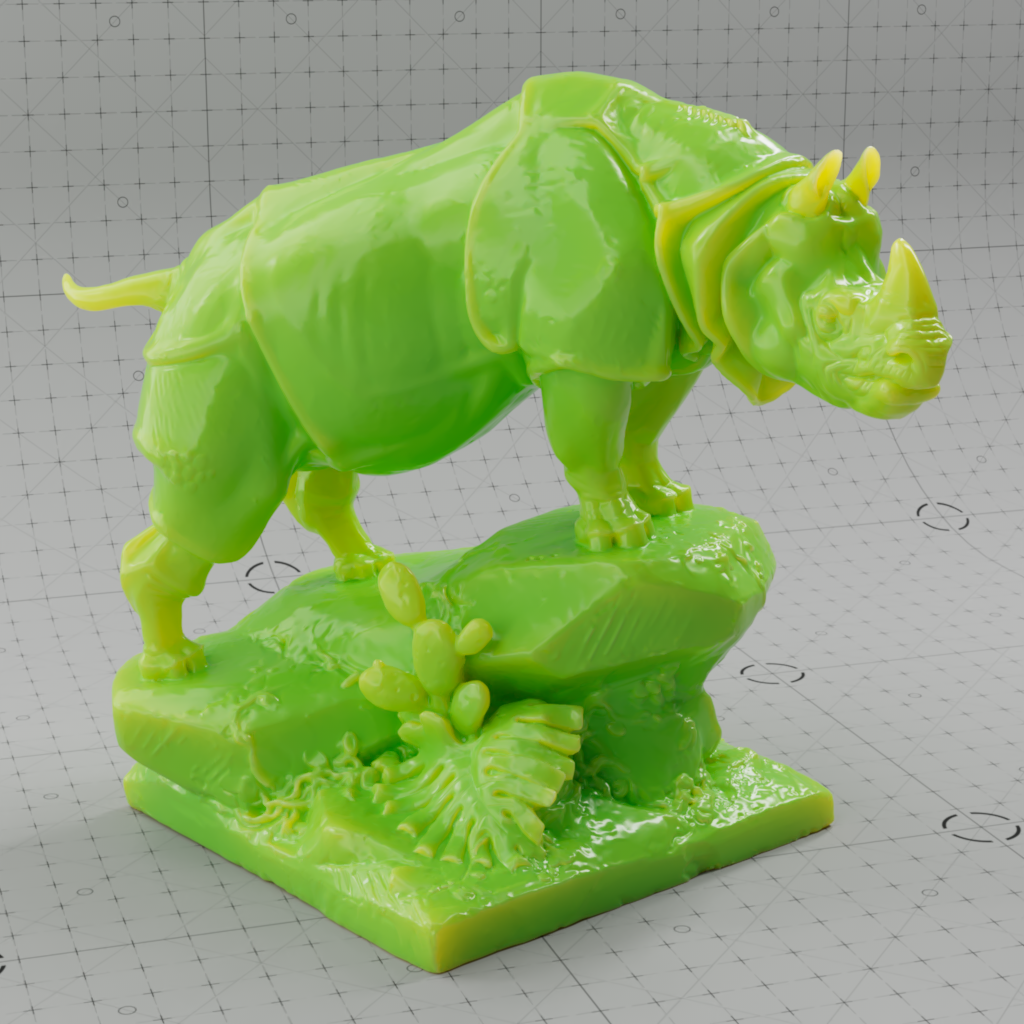
|
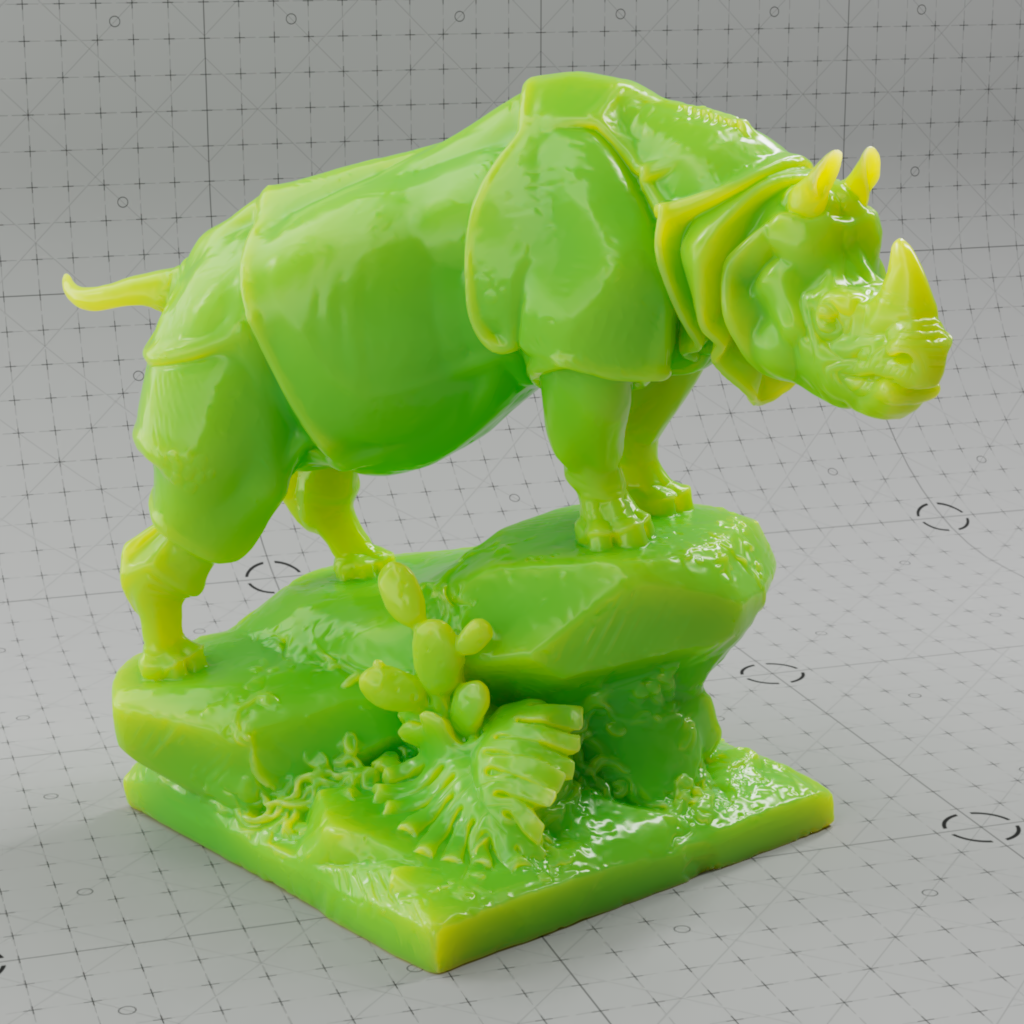
|

|
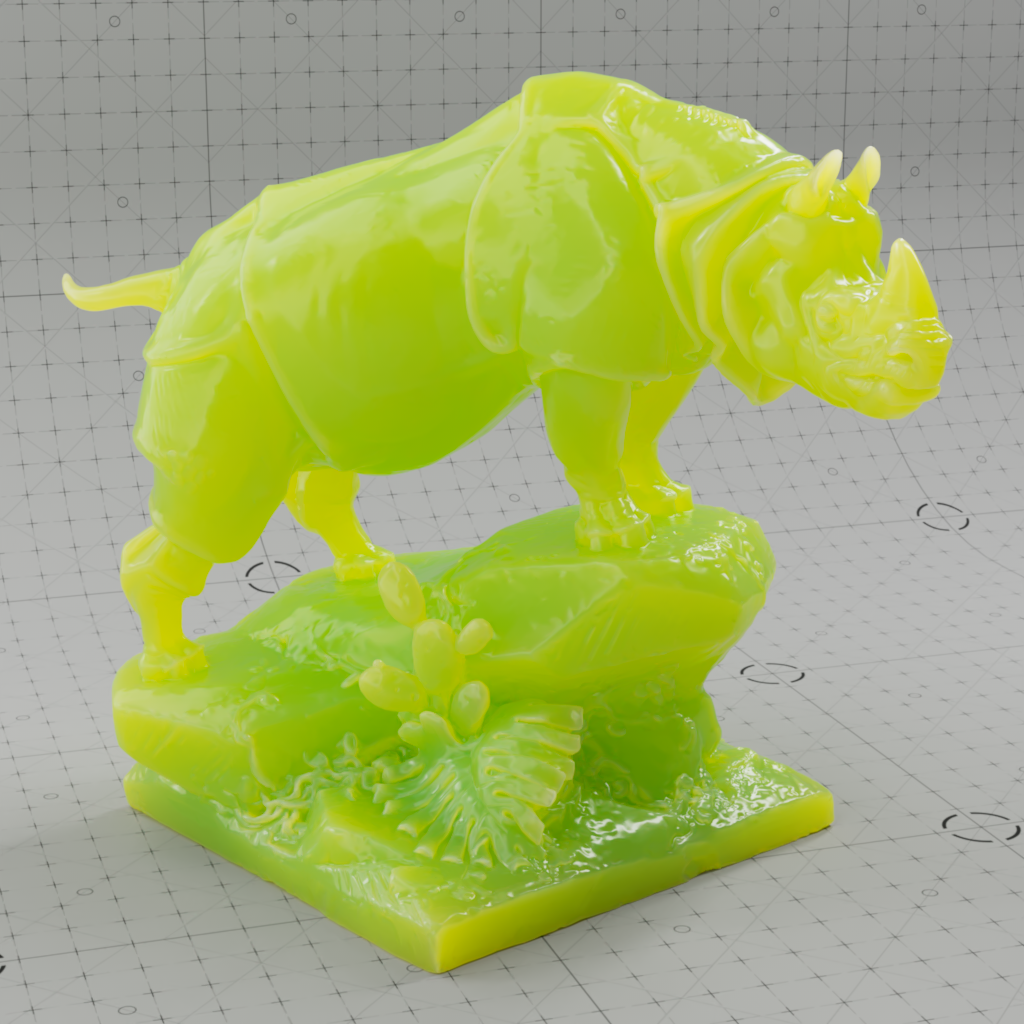
|
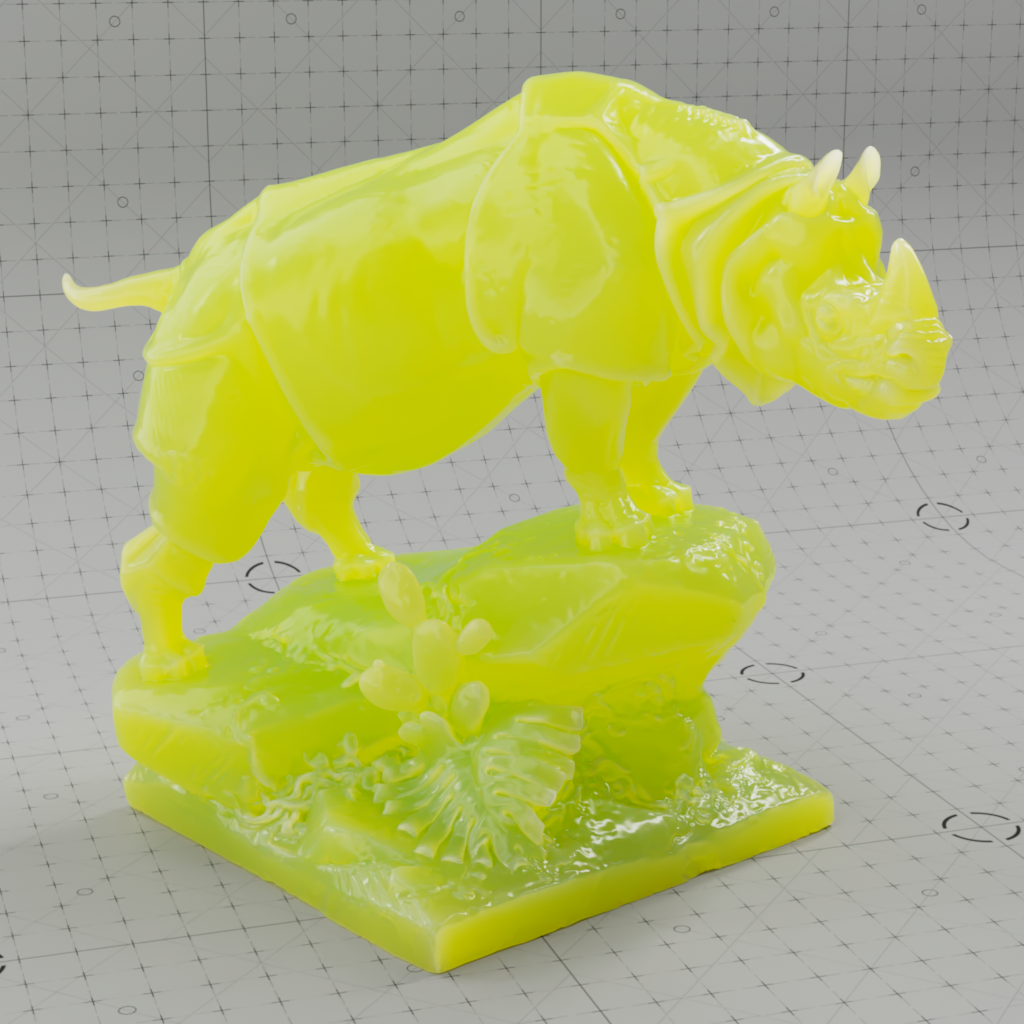
|
|
Subsurface Anisotropy: -1 Subsurface Color: Light Green Subsurface Radius: Orange |
-0.5 |
0 (default) |
0.75 |
0.9 |
Mode
The subsurface calculation offers the following methods:
- Point-Based Diffusion- The fastest and cleanest but least accurate method, not good for detailed geometry and may be unstable during animation.
- Ray-Traced Diffusion- Visually similar to Point-Based Diffusion but more accurate and stable at the cost of increased render times.
- Random Walk (default) - The most accurate method, the best choice for detailed and thin geometry but can be slower than Ray-Traced Diffusion.
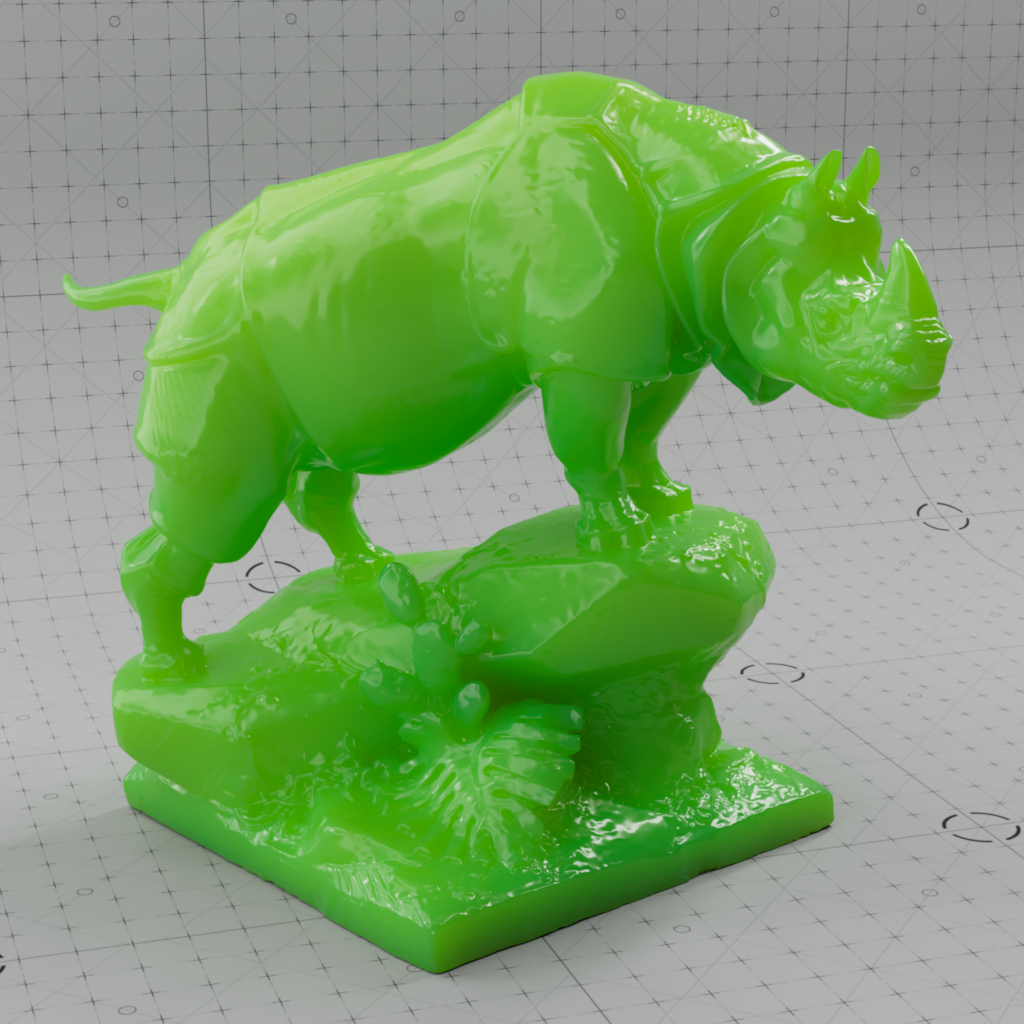
|

|

|
|
Subsurface Mode: Point-Based Diffusion |
Ray-Traced Diffusion |
Random Walk |
Point-Based Diffusion
- Faster and smoother
- Less detailed / accurate
- Does not work in progressive rendering mode
- Requires a “prepass” stage
- Highest chance of flickering in difficult lighting situations.
- Not possible to isolate SSS effect on a particular object which can result in unnecessary “light bleeding” artifacts.
If your scene is setup to use Point-Based Diffusion and you render in progressive mode it will automatically use Ray-Traced Diffusion during progressive renders. This way you can actually see the SSS effect in progressive mode (and not just the diffuse texture) and tweak settings interactively - while still using Point-Based Diffusionfor the final (bucket) rendering.
Please note that due to the differences in the two modes that the final result can differ when comparing progressive ray-traced SSS to the bucket rendered point-based SSS.
Ray-Traced Diffusion
- Slower and noisier than Point-Based Diffusion
- More detailed and accurate than Point-Based Diffusion
- Works in progressive render mode
- The higher the scatter radius the more samples are needed for clean results.
- Possible to isolate SSS effect between objects or have it affect all objects.
Random Walk
- Realistic results for detailed and thin geometries
- Calculates scattering in a volume without using preliminary estimates or simplifications of the geometry as in other methods.
- Can be slower than other methods.
- Works in progressive rendering mode
- Overlapping geometry can cause artifacts
- Not available in Redshift Material
Samples
This setting is used for Ray-Traced Diffusion and Random Walk only to control the amount of noise or grain in the Subsurface calculation. Higher numbers will reduce any potential grain issues, but will take longer to render and vice-versa.
Include Mode
This setting is used for Ray-Traced Diffusion and Random Walk only and defines, which objects are seen by the Scattering calculation.
- All Objects : All other objects participate in the SSS effect.
- Only Self : Contain the SSS effect in the same object only.
Sheen

|
The Sheen effect can be used to simulate a soft backscatter effect commonly seen on fabrics like velvet or satin.
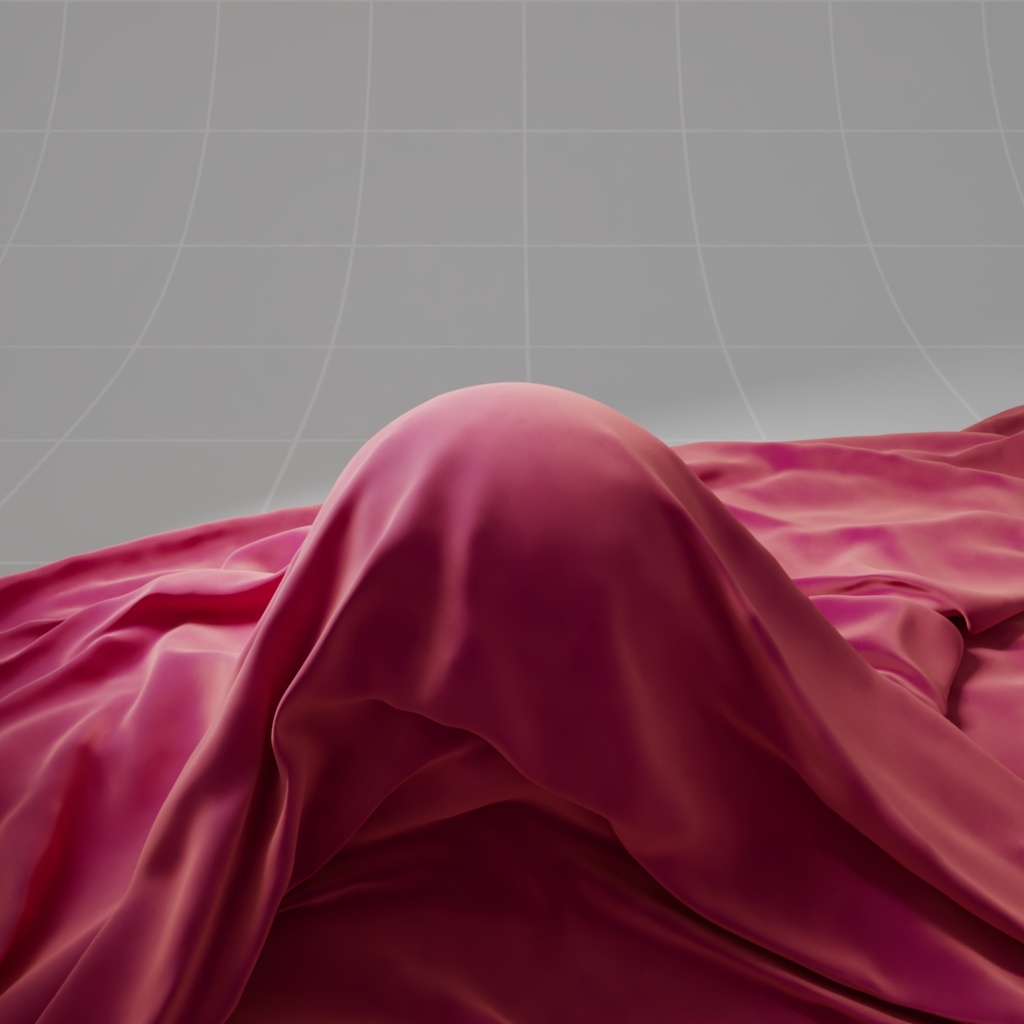
|
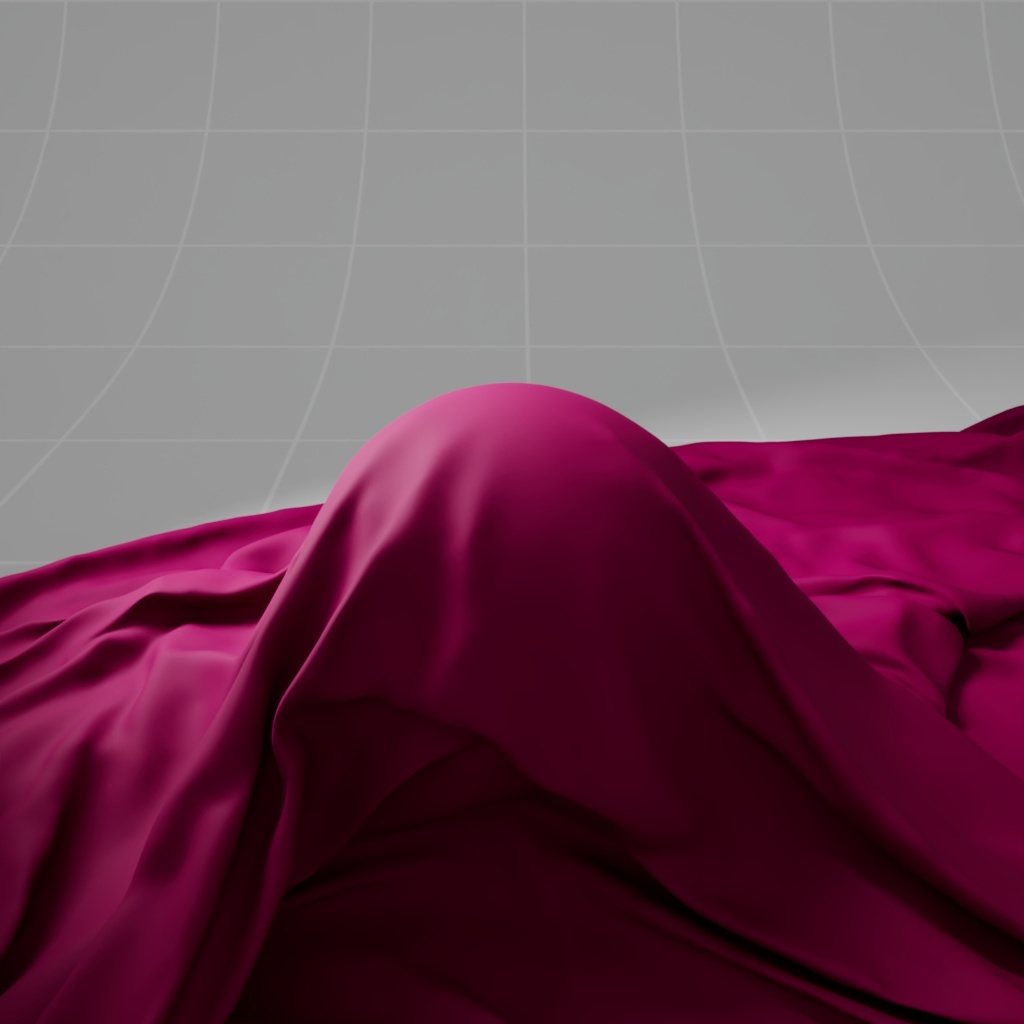
|
|
Cloth with Sheen |
Cloth without Sheen |
Color
This is the color tint of the sheen.
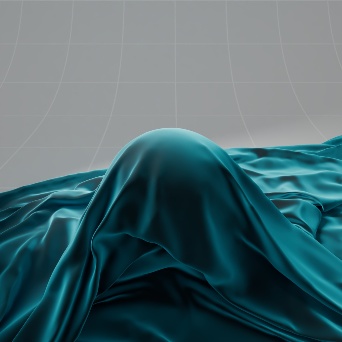
|

|

|
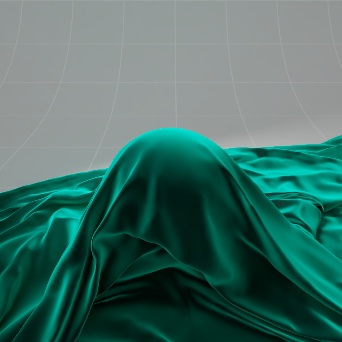
|
|
Sheen Color: Blue |
Purple |
Yellow |
Teal |
Weight
This is a multiplier of the sheen tint. When 0.0 the sheen effect is disabled.

|

|

|
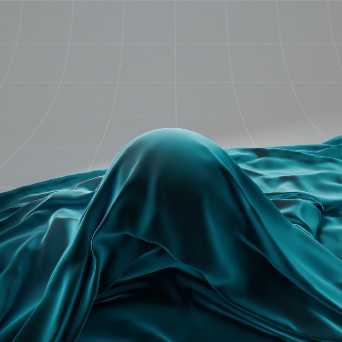
|
|
Sheen Weight: 0.0 |
0.1 |
0.5 |
1.0 |
Roughness
This controls the roughness of the sheen reflection, higher values result in a softer look.
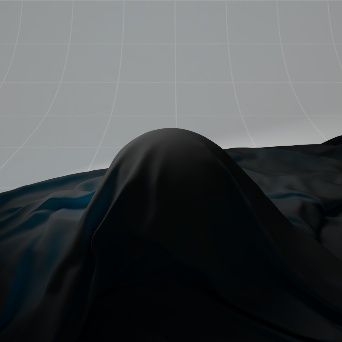
|

|

|
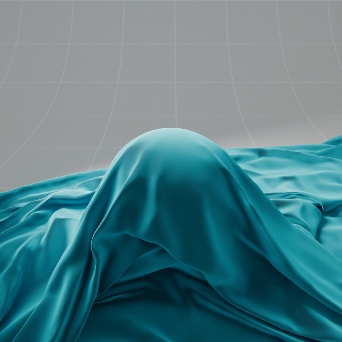
|
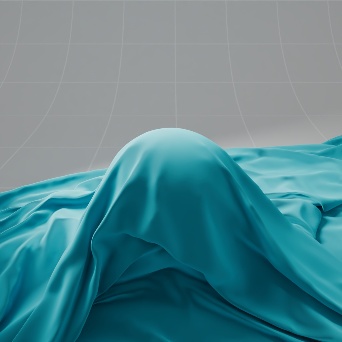
|
|
Sheen Roughness: 0.0 |
0.1 |
0.2 |
0.5 |
1.0 |
Samples
The higher the Sheen's roughness the softer the reflection will be and will need more samples to get a clean "grain-free" result. Higher sheen sample values will reduce any potential grain issues but will take longer to render and vice-versa.
Thin Film

|
Thin Film can be used to simulate a thin, light-refracting layer on the surface. For example, the shimmer on an oil film or a soap bubble.
IOR
This is the refractive index of the thin layer on the surface. Without this layer, in most cases there is air directly above the surface, which corresponds to an IOR of 1.0 and does not result in any color shifts.
A thin film of water could be simulated with an IOR of 1.333. Since soap has an IOR of about 1.5, the thin film of a soap bubble could have an IOR of about 1.4 ((1.3+1.5)/2.0).

|
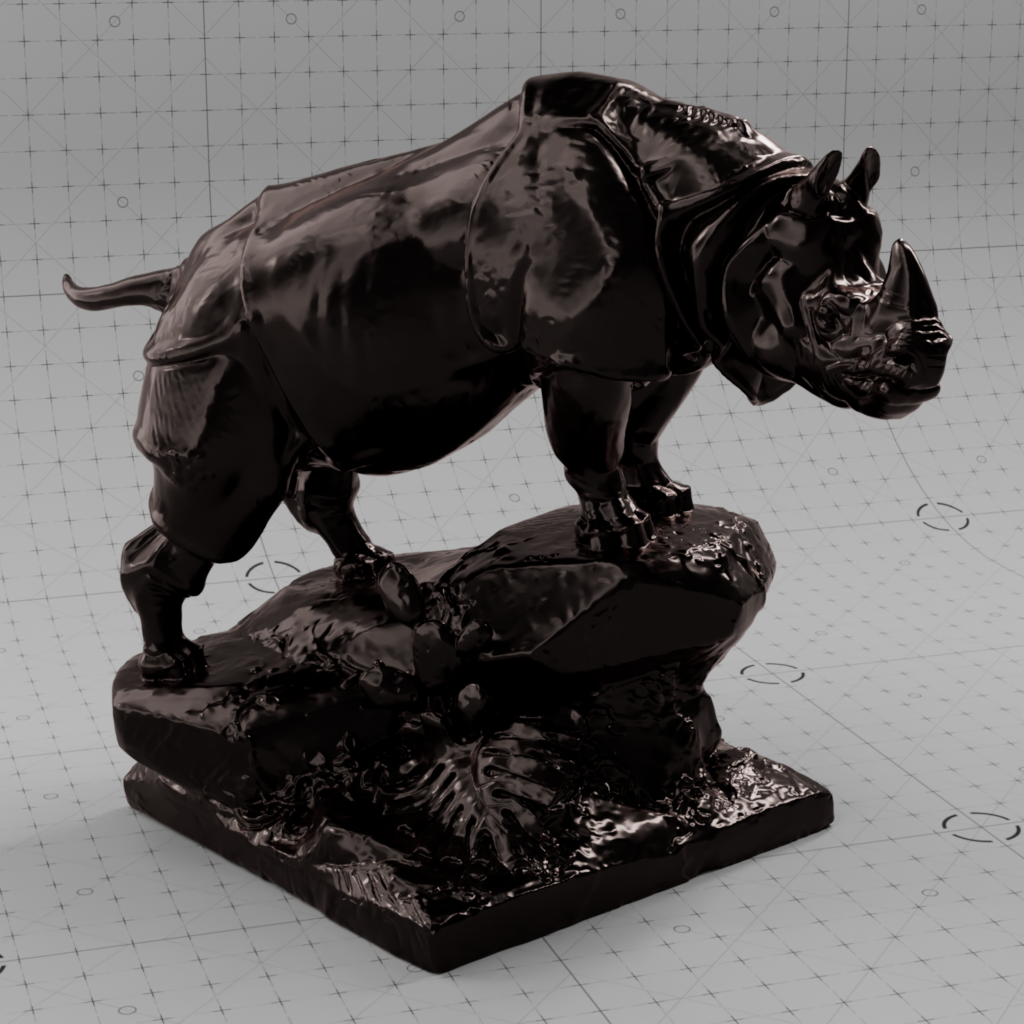
|

|
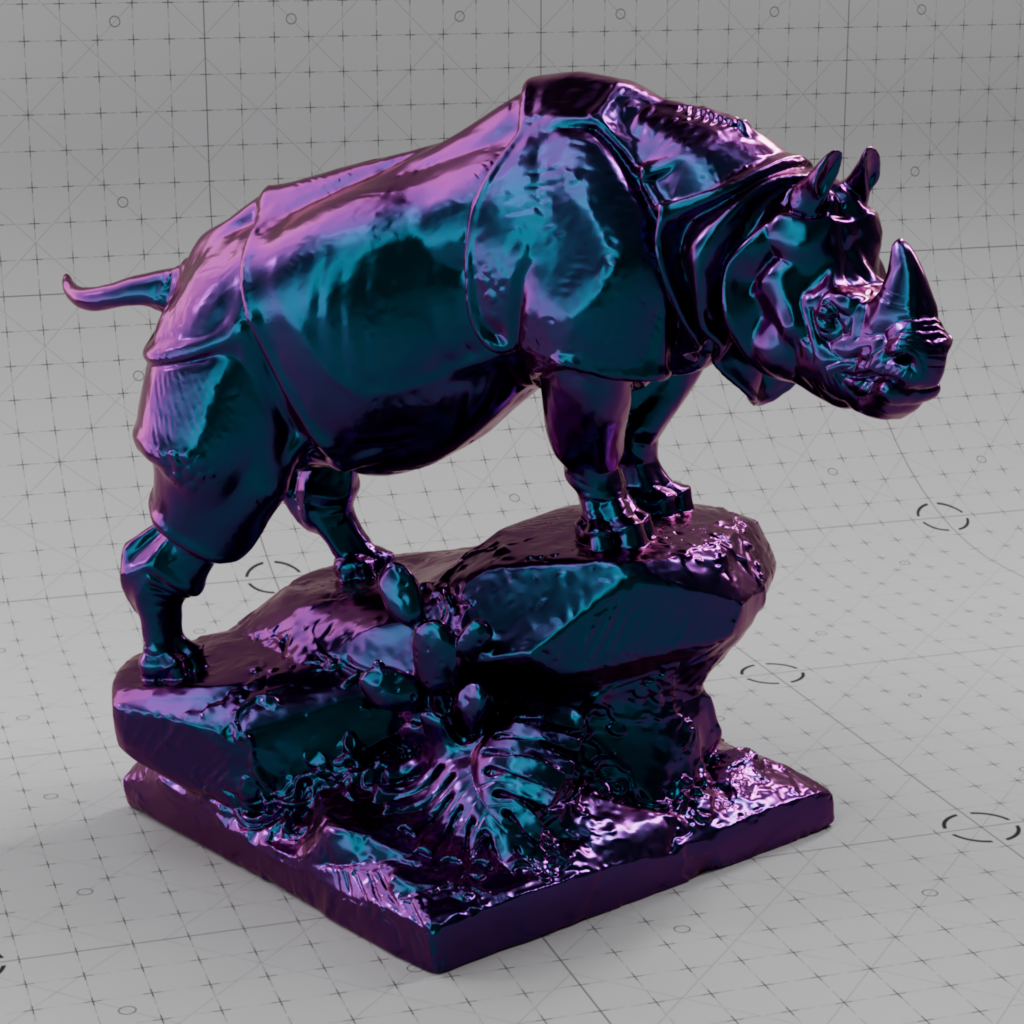
|

|
|
IOR: 1.0 |
1.5 (default) |
1.33 |
2.0 |
3.0 |
Thickness
The thickness of this layer is specified here in nanometers and influences the color shift on this layer.
The effect looks particularly interesting when thickness is varied slightly, for example, remapping a noise texture into an appropriate thickness range like the example image seen below.

|
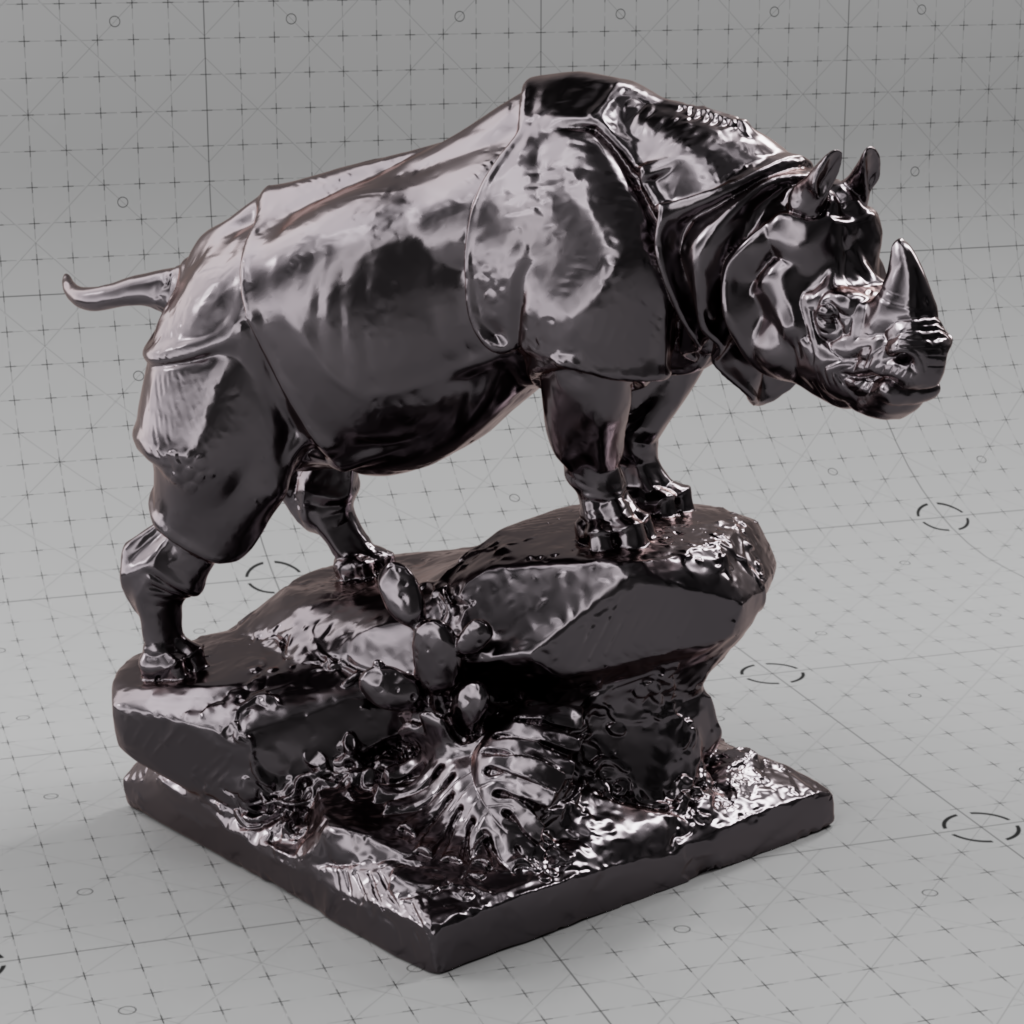
|

|

|

|
|
Thickness: 0 (default) IOR: 2.0 |
50 |
300 |
600 |
Noise variation 100-500 |
Coat
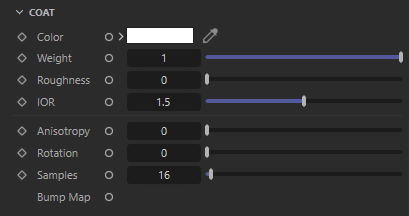
|
These options allow you to define a coating layer over the material, to emulate properties such as varnish, the reflective clear coat of car paint, or slimy and wet surfaces. Additionally, the coating layer has its own bump map input which allows you to define details such as scratches separate from the base of the material, or leave as perfectly smooth.
Since the coating layer covers the entire material it will indirectly affect the strength of other material properties due to energy conservation, such as diffuse Base shading, Reflection, Transmission and Subsurface scattering.
Color
This is the reflection tint, by using a different color for the coat a nice two-tone effect can be achieved.
Weight
This is a multiplier of the reflection tint. Reflections are disabled when this value is 0.0.
Roughness
This is the roughness of the surface reflection. A roughness value of 0.0 means perfectly 'polished', or full glossiness. A roughness value of 1.0 means almost diffuse appearance.
IOR
The index of refraction used to calculate the strength of the Fresnel effect.
Below shows an example of a clear-coat reflection layer over a very rough metallic 'gold' material. Note that the rectangular specular highlight is clearly defined, compared to the rough base metal reflection. An IOR of 1.0 effectively disables the coat.
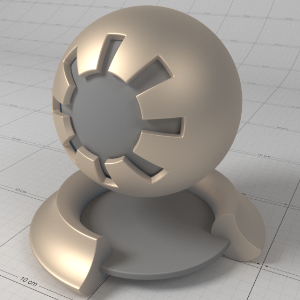
|

|
|
Coating IOR : 1.0 |
1.6 |
Anisotropy
This allows to you stretch reflections in a particular axis. Anisotropy is used to emulate materials such as brushed metals where surface roughness is focused in a particular direction. You have to increase Reflection Roughness above 0.0 to see the effect.
Rotation
This value rotates the direction of the anisotropic reflections. The value runs between 0 and 1, which equals the rotation angles between 0° and 360°.
Samples
Blurry reflections (when Roughness is greater than 0.0) will need multiple samples to get a clean "grain-free" result. Higher numbers will reduce any potential grain issues, but will take longer to render and vice-versa.
Bump Map
Plug in your coat bump map here. Coat bump mapping is separate from the base layer, which means you can apply details like scratches on just the coating, or leave the coating blemish-free.
By plugging a bump map into the 'Geometry' Bump port of the material and leaving the 'Coating' Bump port empty, you can achieve a clear coat or varnish effect:

|

|
|
Bump in both 'Geometry' and 'Coat' port |
No bump in 'Coat' port |
Emission

|
Emission can be used for surface illumination effects, and when rendered with Global Illumination will emit light into the scene when the effect is strong enough based on the emission weight.
Emission
The emissive color of the material.
Emission Weight
A multiplier for the emissive color of the material, higher values result in brighter colors and stronger global illumination.
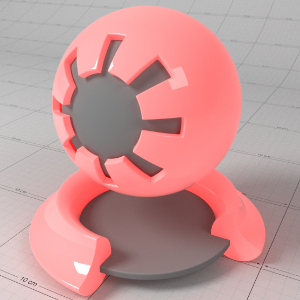
|
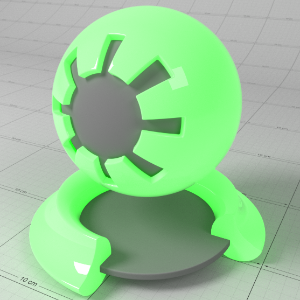
|
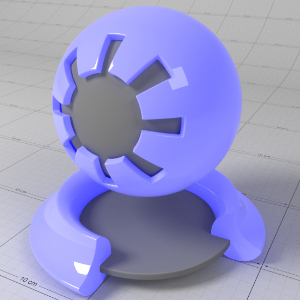
|
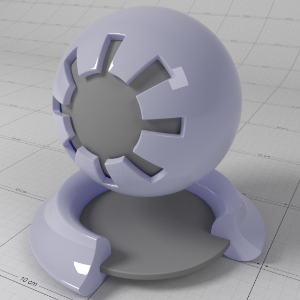
|

|
|
Emission: Red |
Green |
Blue |
Blue |
Blue |
Geometry
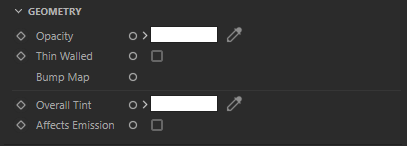
|
These settings generally describe the shading and calculation of the surface. For example, here you will find the option to assign a bump map, you can set the opacity of the material or configure a basic recoloring of the material.
Opacity
This color describes the overall opacity of the material, with colors closer to white being more opaque. An opacity of black means the material will be fully transparent.
Note that this effect is dependent on the global/local refraction trace depth (see Optimizations tab). If you only need cutout transparency you should instead make use of the Redshift Sprite shader.
Below shows examples of the Opacity of a material. Refraction color is the inverse of opacity color. Grey-scale values are typically used to describe opacity:
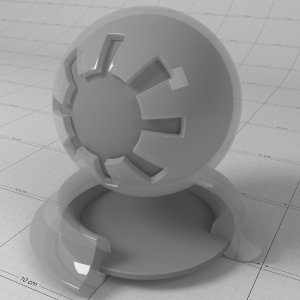
|

|

|

|

|
| Opacity (0.5, 0.5, 0.5) | (0.25, 0.25, 0.25) |
(1.0, 0.0, 0.0) |
(0.0, 1.0, 0.0) |
(0.0, 0.0, 1.0) |
Thin Walled
This option is useful for thin refractive materials such as a pane of glass, where the ray-bending effect is not noticeable and modeling actual object thickness is not worth it. When this option is enabled, refraction rays will enter and immediately exit the medium without bending the rays.
When Thin Walled is enabled the behavior of the Standard Material changes in the following key ways:
-
The Subsurface parameters are used to control a back-lighting/translucency effect.
-
Dispersion effects are disabled.
Thin Transparent Materials in Detail
The Thin Walled option is available for rendering thin transparent objects that don't actually have modeled thickness, such as a pane of glass. For very thin objects, refractive rays will not travel enough of a distance inside the object before exiting to show any noticeable bending effect. Enabling this option preserves the reflection Fresnel effect while internally disabling any medium interface transition math that would allow rays to bend.
Below shows an example of a pane of glass with no thickness and the Thin Walled option enabled, compared to a very thin pane of glass with modeled thickness. You can see there's no noticeable ray bending difference:

|
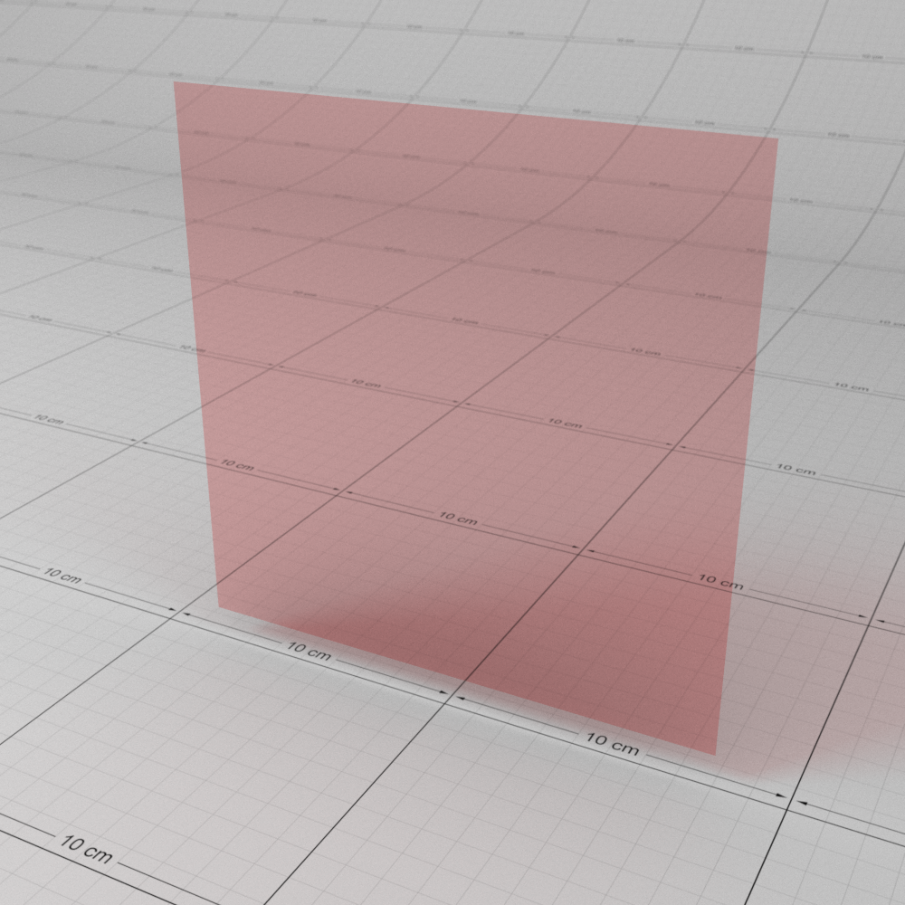
|
|
Thin Walled: disabled |
Thin Walled: enabled |
Bump Map
Connect your overall bump map here.
Overall Tint
This is an overall tint for the entire material.
The Overall Tint parameter allows you to tint the entire material after lighting has been calculated. This parameter is also useful if you want to apply additional lighting attenuation from effects such as ambient occlusion, to accentuate shadows around crevices.
Below shows examples of Overall Tint. See how it affects both diffuse lighting and reflections:
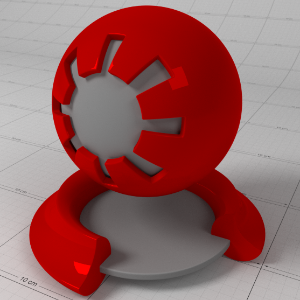
|
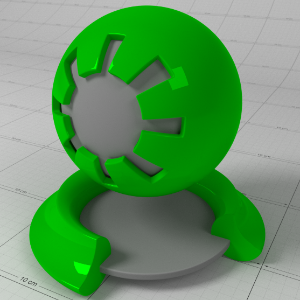
|
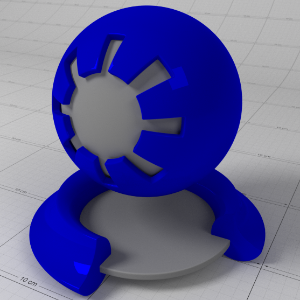
|
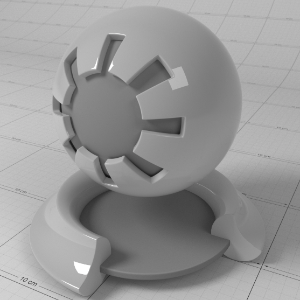
|

|
|
Overall Tint: Red |
Green |
Blue |
White |
AO shader |
Affects Emission
Enabling this option forces the Overall Tint to also affect the material emission color. When using the Overall Tint to affect lighting (such as using ambient occlusion shader results), you should leave this option un-checked for more realistic results.
Enabling the Affects Emission option allows you to apply the Overall Tint to the emissive part of the material. If the Overall Tint is meant to just affect lighting, this option should be un-checked.
Below shows a comparison between this option being enabled and disabled, with an AO shader driving the Overall Tint of the emissive ball material. When the option is enabled you can see the AO shadow affects the emissive strength of the ball material:

|

|
|
Overall Tint Affects Emission: disabled |
Enabled |
Optimizations

|
These options allow you to fine-tune settings that can have a significant impact on the performance of the material.
Enable Trace Depth Overrides
This enables the per material Reflection and Refraction Trace Depth parameters below.
When not enabled, the global trace depth will be used.
Note that when enabled, the override cannot exceed the global trace depth.
Reflection
Trace Depth
This parameter controls the trace depth for reflection rays shot from this material. If the reflection rays of a material are not very defined (meaning: they are blurry because of the roughness parameter or have a low weight), then multiple bounces can be a waste of rendering time. This parameter allows the user to reduce the trace depth and speed up rendering.
Cut-off Override Enable
This parameter allows you to override the global cut-off setting for reflections.
Cut-off Threshold
When the reflections of a material are very dark (because of low "Weight" or "Color" values) they contribute very little to the final image. This parameter defines what is considered "very dark" at which point no more reflection rays will be shot - which will speed up rendering. Scenes containing very strong lights might need this parameter set to very low values such as 0.0001 in order to avoid early termination of tracing which can produce a grain-like effect.
Refraction
Trace Depth
This parameter controls the trace depth for refraction rays shot from this material. If the refraction rays of a material are not very defined (meaning: they are blurry because of the roughness parameter or have a low weight), then multiple bounces can be a waste of rendering time. This parameter allows the user to reduce the trace depth and speed up rendering.
Cut-off Override Enabled
This parameter allows you to override the global cut-off setting for refractions.
Cut-off Threshold
When the refractions of a material are very dark (because of low "Weight" or "Color" values) they contribute very little to the final image. This parameter defines what is considered "very dark" at which point no more reflection rays will be shot - which will speed up rendering. Scenes containing very strong lights might need this parameter set to very low values such as 0.0001 in order to avoid early termination of tracing which can produce a grain-like effect.
Combined Trace Depth
This allows you to set a custom combined trace depth for your Redshift material shader.
The legacy setting "Use Combined Trace Depth from Materials" must be enabled in the 'Render Settings' System/Legacy section in order for this setting to work. Otherwise, by default, the Trace Depth/Combined value found in the Globals tab will control the max combined trace depth.
Optimization Options In Detail
When the Enable Trace Depth Override' option is enabled, the material trace depths defined here are used instead of the global ones. This can be useful for fine-tuning performance on a per material basis where dropped bounces might not be noticed.
When the 'Reflection' and 'Refraction' Cut-off Overrides are enabled, the cut-off values are used instead of the global ones.
Advanced

|
The advanced options allow you to tune powerful features of the material that may not be frequently used.
Diffuse
Direct Scale
This parameter allows you to independently scale the weight of direct diffuse lighting rays, i.e. rays that intersect lights in the scene. Setting this value to 0.0 disables direct lighting for the diffuse component.
Indirect Scale
This parameter allows you to independently scale the weight of indirect diffuse lighting rays, i.e. rays that intersect surfaces in the scene. Setting this value to 0.0 effectively disables indirect lighting (global illumination) for the diffuse component, which can be a useful optimization.
Direct and Indirect Scales in Detail
To balance the amount of direct lighting vs indirect lighting, or even disable direct or indirect lighting altogether, you can adjust the 'Direct Scale' and 'Indirect Scale' for the Diffuse, Reflection, Sheen Reflection, and Coat Reflection shading components.
Note for physically correct results both the 'Direct' and 'Indirect' lighting scales should be 1.0 (or the same value).
The example images below demonstrate the effects of reducing the amount of direct and indirect diffuse shading, in the scene global illumination is enabled and the base has a red emissive texture to highlight the indirect GI lighting effect. Note how only the direct light from lights in the scene diminishes when lowering the direct scale value but indirect bounce lighting from those lights is still visible. When lowering the indirect scale only the GI lighting from the red emissive base and the bounce lighting from the lights in the scene is diminished.
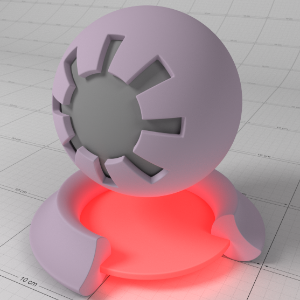
|
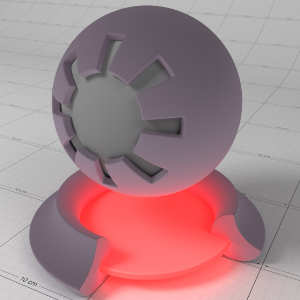
|
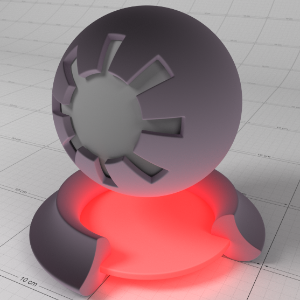
|
|
Diffuse Direct Scale: 1.0 |
0.25 |
0.0 |

|
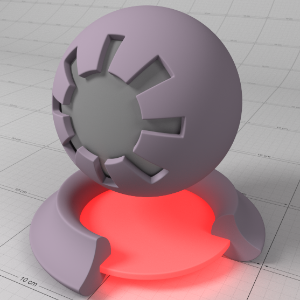
|

|
|
Diffuse Indirect Scale: 1.0 |
0.25 |
0.0 |
The example images below demonstrate the effects of reducing the amount of direct and indirect reflections. Note how only the reflection of the rectangular light diminishes when lowering the direct scale value while only the environment reflections diminish when lowering indirect scale. The intensity of each light has an impact on the behavior of these scale values, for example, very bright lights will need lower scale values before they start to look much dimmer compared to less intense lights.

|
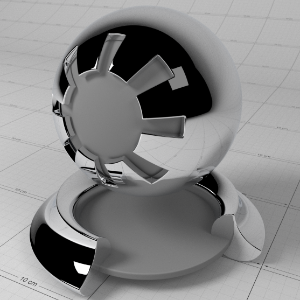
|
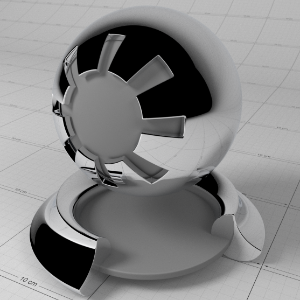
|
|
Reflection Direct Scale: 1.0 |
0.05 |
0.0 |

|
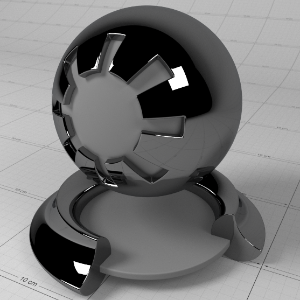
|
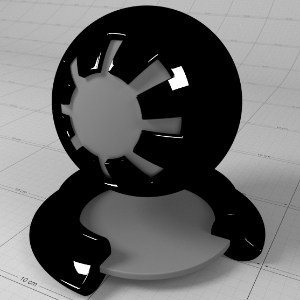
|
|
Reflection Indirect Scale: 1.0 |
0.25 |
0.0 |
Reflection
Direct Scale
This parameter allows you to independently scale the weight of direct reflection rays, i.e. rays that intersect lights in the scene. Setting this value to 0.0 effectively disables direct lighting (specular reflections of lights) for reflections.
Indirect Scale
This parameter allows you to independently scale the weight of indirect reflection rays, i.e. rays that intersect surfaces in the scene. Setting this value to 0.0 effectively disables indirect lighting (reflections of other objects) for reflections, which can be a useful optimization and is equivalent to the 'Specular Highlights Only' option that can be found in some older Redshift materials.
Convert from Glossiness to Roughness
This option is useful when you have legacy textures that drive material roughness using the 'glossiness' convention - i.e. where a glossiness value of 0.0 means maximum roughness and a value of 1.0 means perfectly smooth. Enabling this option essentially inverts any inputs to 'roughness' parameters, to convert from glossiness to roughness.
End Color
This setting is used whenever the Trace Depth for reflections is exceeded. The color set here is then used to calculate the last reflection.
- Environment: The color is taken from an available environment or will be black, if there is no environment.
- Diffuse: The color is taken from the diffuse (Base) color of the material
Transmission
Fresnel Affects Shadow
Only relevant when Thin Walled is disabled.
Controls whether reflectance is taken into account when calculating a transmissive object's shadow from the following options:
-
On: Fresnel reflectance is taken into account which results in more physically accurate shadow rendering, sometimes resulting in a sort of pseudo-caustic result. For most circumstances, where the heavy performance cost of caustic rendering is too great, Fresnel Affects Shadow will result in much more realistic renders in a fraction of the time. Even completely clear materials like glass cast a shadow and under certain circumstances they can be quite dark, this is because light reflected off the object may be more concentrated in some directions than others.
-
On (no internal reflection) - Default: Fresnel reflectance is taken into account but internal reflections are ignored resulting in a weaker shadow overall. This setting results in more realistic shadows than the off setting without shadows that could be too dark for something like a thick pieces of glass as seen in the example images below.
-
Off: Fresnel reflectance is not taken into account and the shadow of a transmissive object is controlled entirely by the Shadow Opacity parameter.
Please keep in mind that the softness of the shadow is entirely dependent on the lights in the scene.
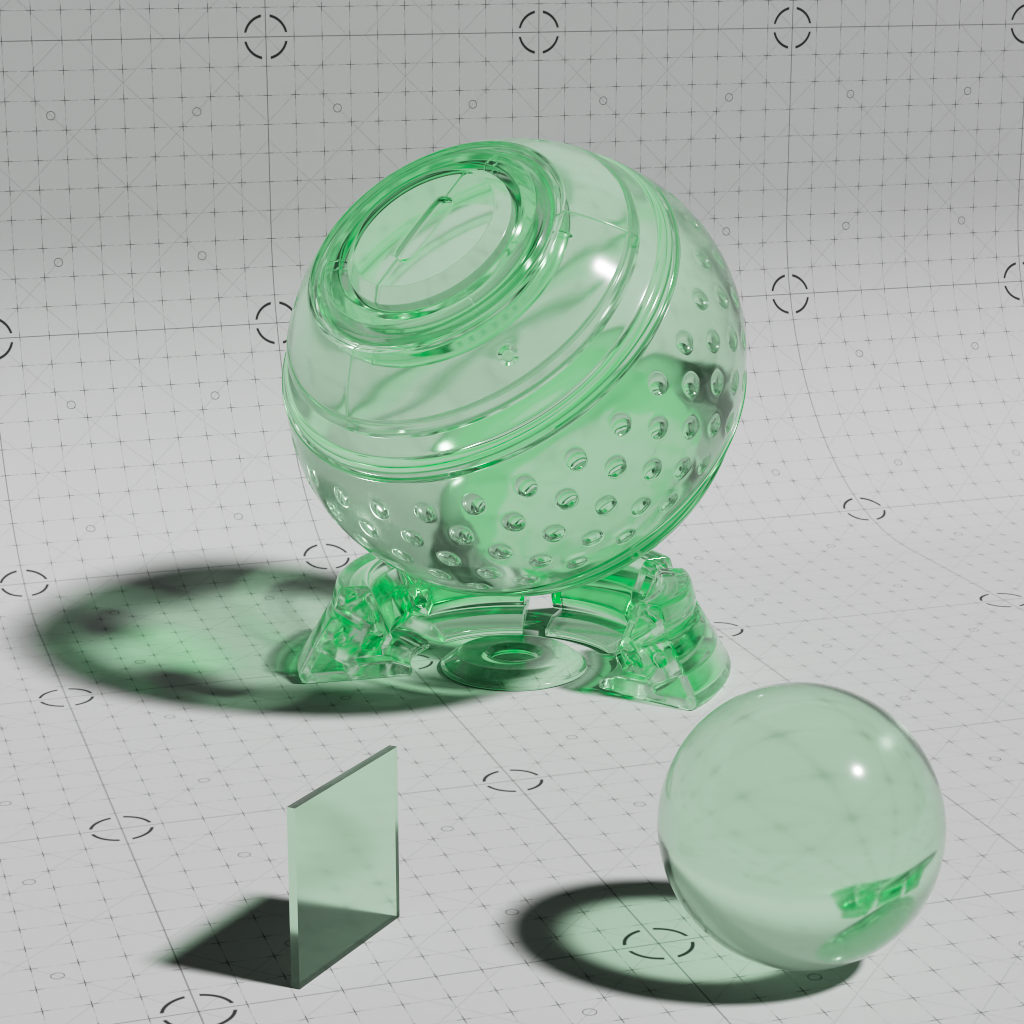
|

|
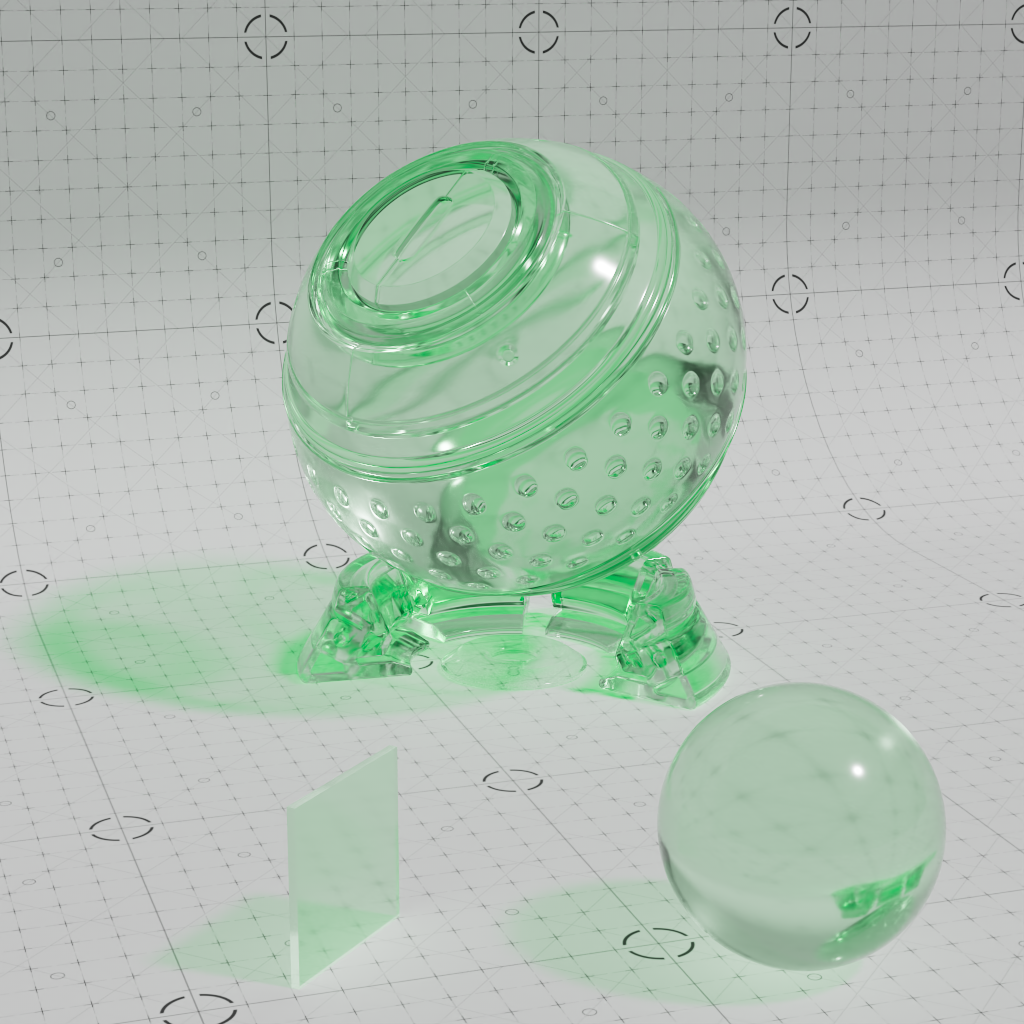
|
| Fresnel Affects Shadow: On Shadow Opacity: 0 |
On (no internal reflection) 0 |
Off 0 |
In the example images below note how the shadows of the objects are brighter in the center than their edges because the fresnel reflections from the curved surface is scattering light away. Still, for the most realistic transmissive shadows Shadow Opacity should be set to 1 (resulting in a completely opaque shadow) and caustics should be used to more accurately light up the shadowed area as seen in the caustic rendering reference image below.
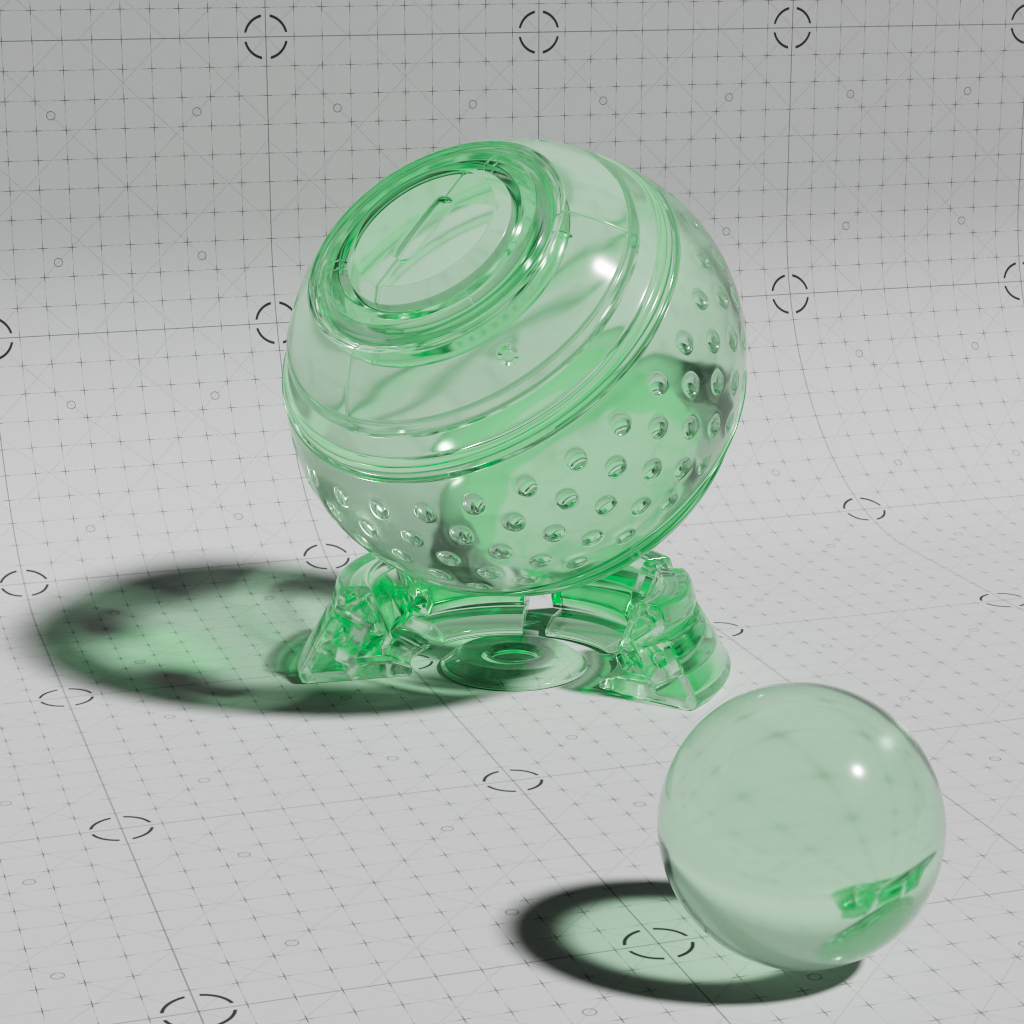
|

|

|
| Fresnel Affects Shadow: On Shadow Opacity: 0 |
Caustic Rendering Reference Shadow Opacity: 1 |
Fresnel Affects Shadow: Off Shadow Opacity: 0 |
The effect reflections have on shadow transparency can be seen in the images below, note how the shadow becomes darker as the reflection weight is increased.

|

|
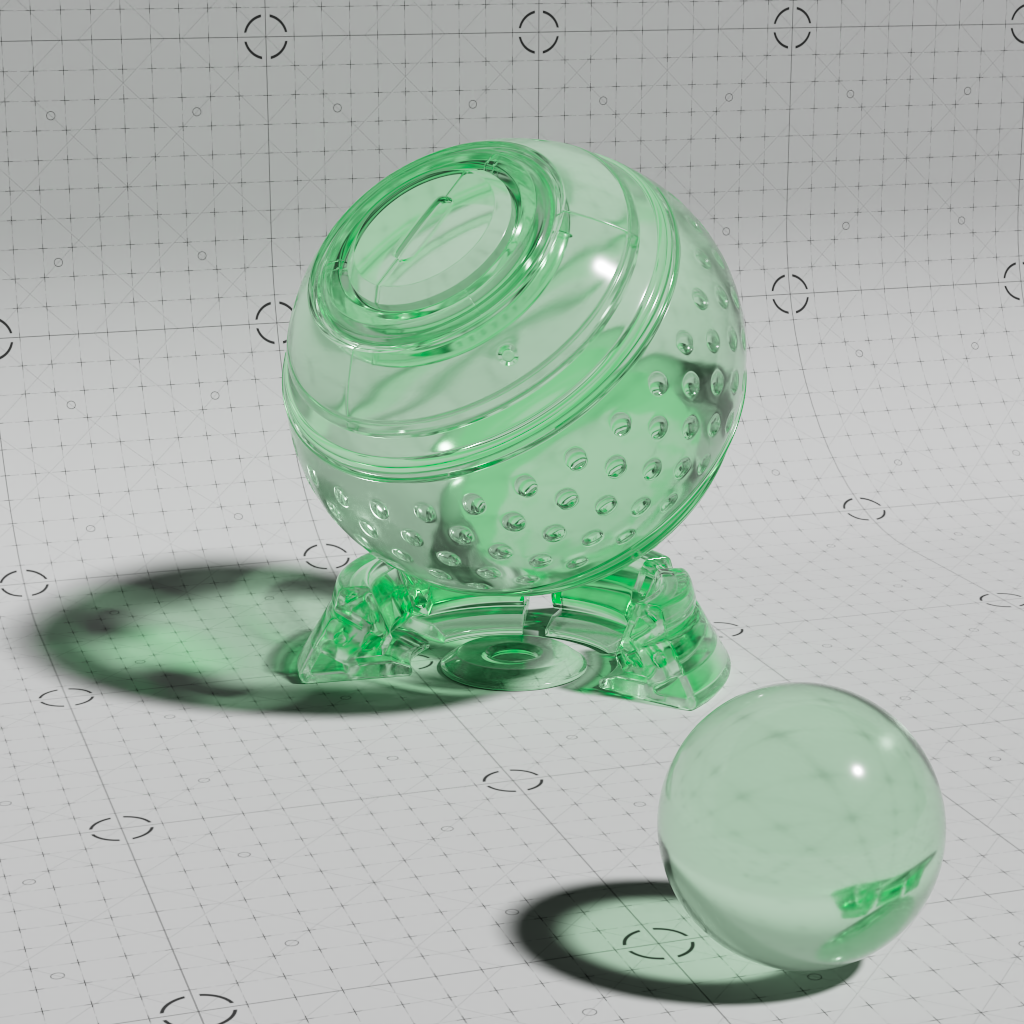
|
| Reflection Weight: 0 Fresnel Affects Shadow: On |
0.5 | 1 |
Shadow Opacity
Shadow Opacity controls the strength of transmissive shadows ranging from a value of -1 to 1, the behavior of this parameter is dependent on the Fresnel Affects Shadow option.
When rendering a transmissive object with caustics a Shadow Opacity of 1 is recommended, resulting in a completely opaque shadow, so the caustic effect can then brighten up the shadow more realistically.
When 'Fresnel Affects Shadow' is set to on or on (no internal reflection):
-
A value of 0.0 means the shadow is fully transparent except where reflectance has an effect on shadow transparency.
-
Negative values result in transmissive shadows that become more transparent until -1 when shadows are no longer visible.
-
Positive values result in more opaque shadows until 1 when a shadow becomes completely opaque.
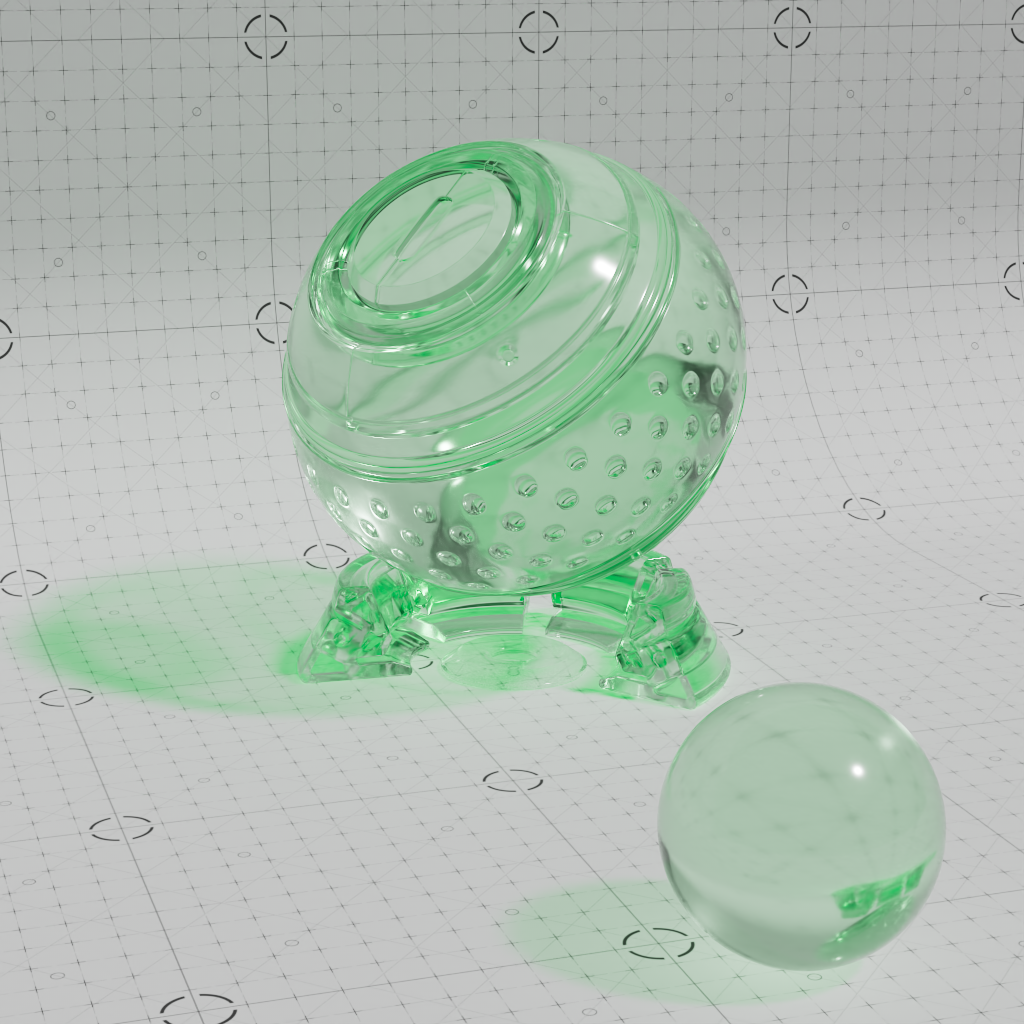
|

|

|
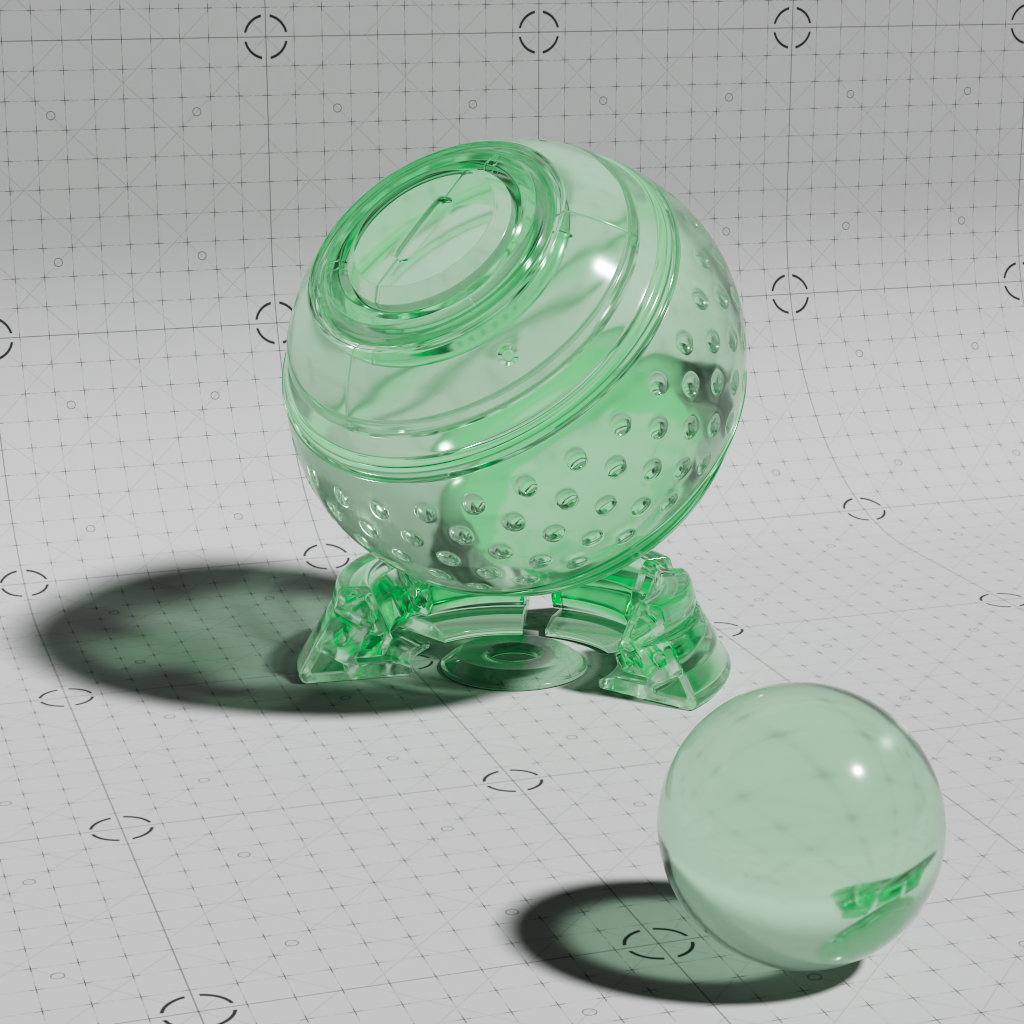
|

|
| Shadow Opacity: -1 Fresnel Affects Shadow: On |
-0.3 |
0 | 0.3 | 1 |
When 'Fresnel Affects Shadow' is off:
-
A value of 0.0 means the shadow is fully transparent, negative values have no effect.
-
Positive values result in more opaque shadows until 1 when a shadow becomes completely opaque.

|

|
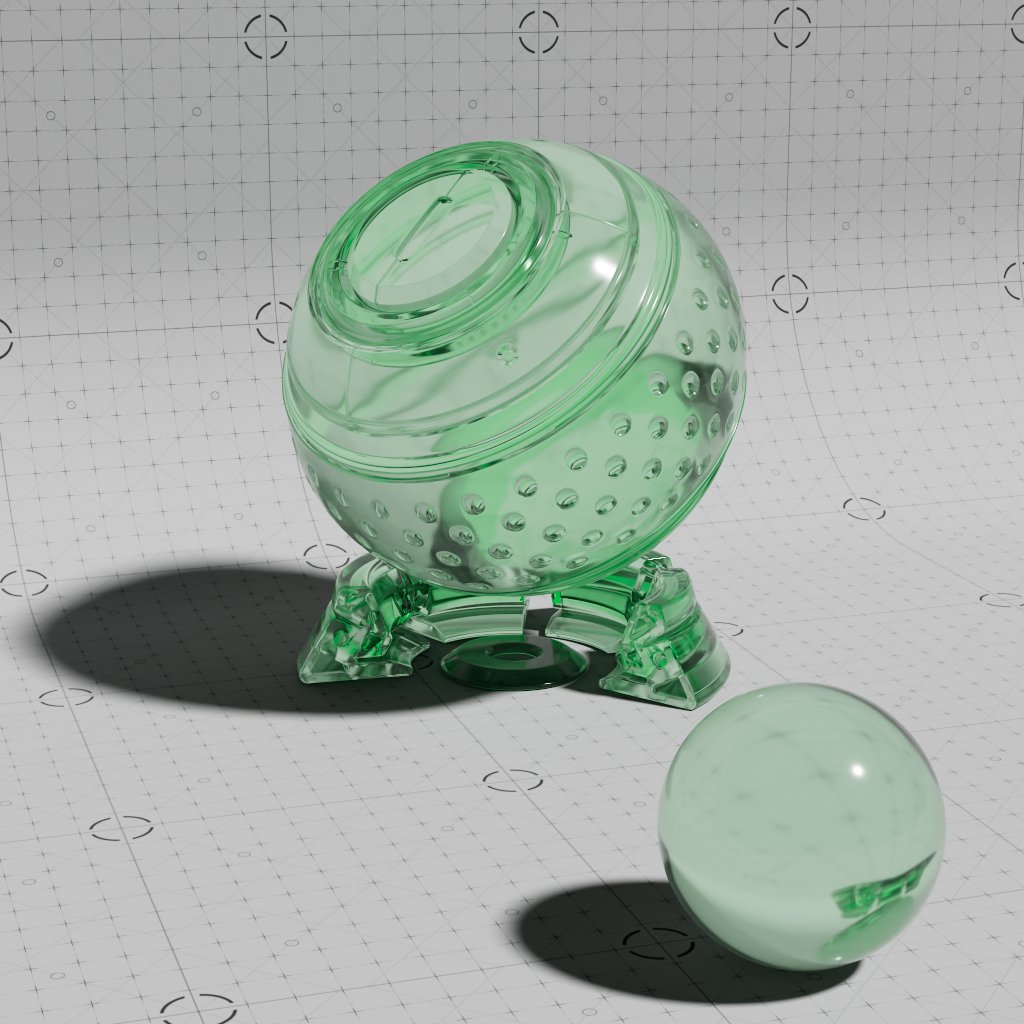
|
| Shadow Opacity: 0 Fresnel Affects Shadow: Disabled |
0.3 | 1 |
Convert from Glossiness to Roughness
This option is useful when you have legacy textures that drive material roughness using the 'glossiness' convention - i.e. where a glossiness value of 0.0 means maximum roughness and a value of 1.0 means perfectly smooth. Enabling this option essentially inverts any inputs to 'roughness' parameters, to convert from glossiness to roughness.
Opacity Affects Alpha Channel
By default with this option enabled, refraction and opacity will affect the alpha channel. So if your object has 50% transparency your alpha channel will reflect that with 50% alpha.
Block Volumes in Sub-Surface Mediums
When enabled, volumetric objects are not rendered where they lie within a Subsurface Scattering volume.
Sheen
Direct Scale
This parameter allows you to independently scale the weight of direct sheen reflection lighting rays, i.e. rays that intersect lights in the scene. Setting this value to 0.0 effectively disables direct lighting for the sheen component.
Indirect Scale
This parameter allows you to independently scale the weight of indirect sheen reflection lighting rays, i.e. rays that intersect surfaces in the scene. Setting this value to 0.0 effectively disables indirect lighting for the sheen component, which can be a useful optimization.
Convert from Glossiness to Roughness
This option is useful when you have legacy textures that drive material roughness using the 'glossiness' convention - i.e. where a glossiness value of 0.0 means maximum roughness and a value of 1.0 means perfectly smooth. Enabling this option essentially inverts any inputs to 'roughness' parameters, to convert from glossiness to roughness.
Coat
Direct Scale
This parameter allows you to independently scale the weight of direct reflection rays for coat reflections, i.e. rays that intersect lights in the scene. Setting this value to 0.0 effectively disables direct lighting (specular reflections of lights) for coat reflections.
Indirect Scale
This parameter allows you to independently scale the weight of indirect reflection rays for coat reflections, i.e. rays that intersect surfaces in the scene. Setting this value to 0.0 effectively disables indirect lighting (reflections of other objects) for coat reflections, which can be a useful optimization.
Convert from Glossiness to Roughness
This option is useful when you have legacy textures that drive material roughness using the 'glossiness' convention - i.e. where a glossiness value of 0.0 means maximum roughness and a value of 1.0 means perfectly smooth. Enabling this option essentially inverts any inputs to 'roughness' parameters, to convert from glossiness to roughness.
Microfacet Multi-Scatter Compensation
Activated by default, to ensure energy conservation at surfaces that use higher roughness values. Otherwise, surfaces with strong roughness for reflections, sheen or coatings may appear darker than is physically correct.
Anisotropy
Surface Orientation
In order to apply the anisotropic roughness effect, the shader needs to know the orientation of the surface in u and v directions. These are the ways to specify this:
- None
- From Tangent Channel
When this option is set to None, Redshift will attempt to compute an axis automatically based on the surface normal. This can be acceptable for simple flat surfaces, but can produce unpredictable results for other types of surfaces.
UV Channel
The vertex attribute channel name for UVs to drive the surface orientation for anisotropic reflections.
By default the default surface UV set is used. If you require separate control from regular surface texturing, you can define a special UV set instead.
Tangent Channel
The vertex attribute channel name for Tangents to drive the surface orientation for anisotropic reflections.